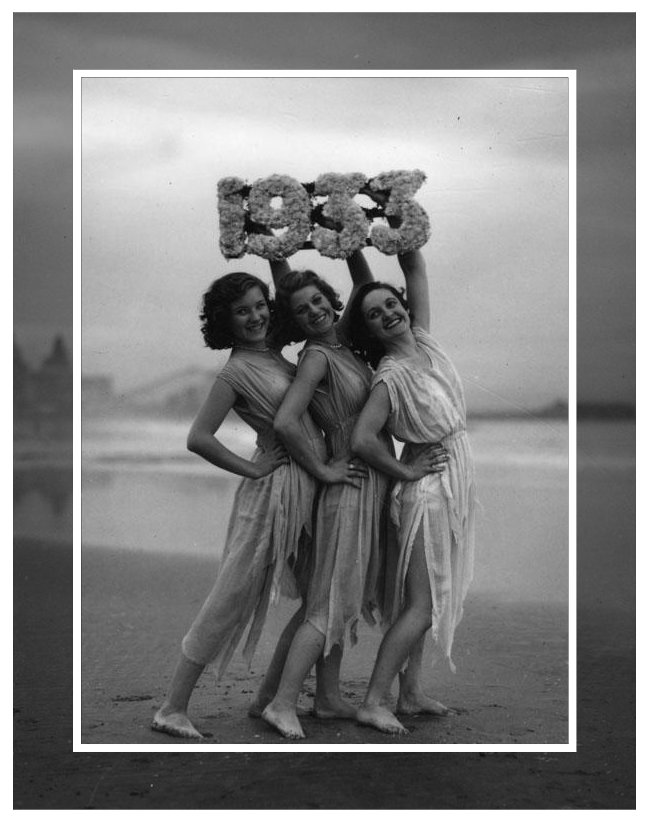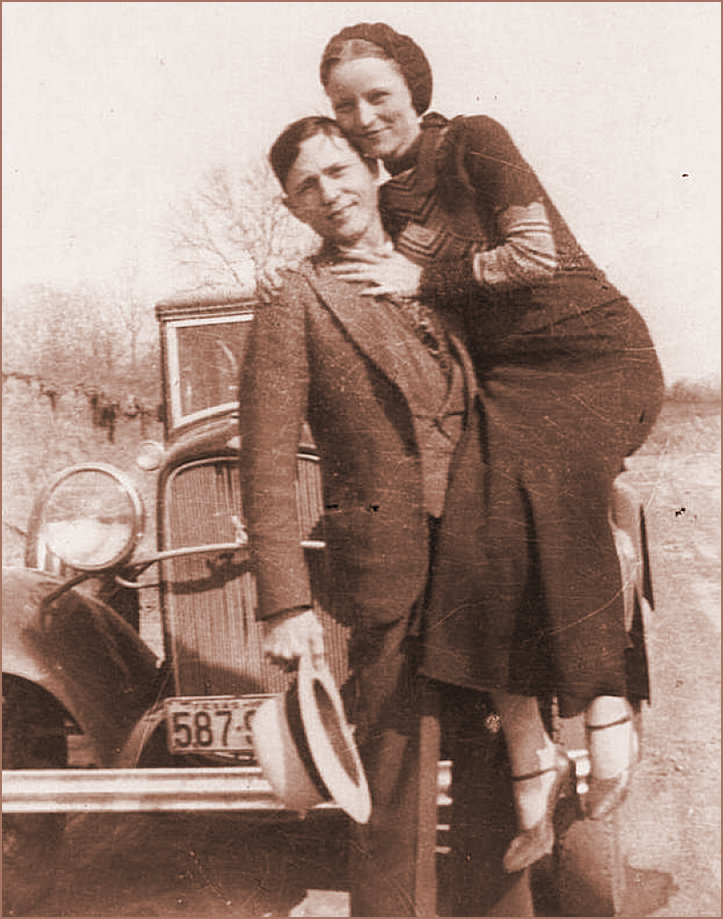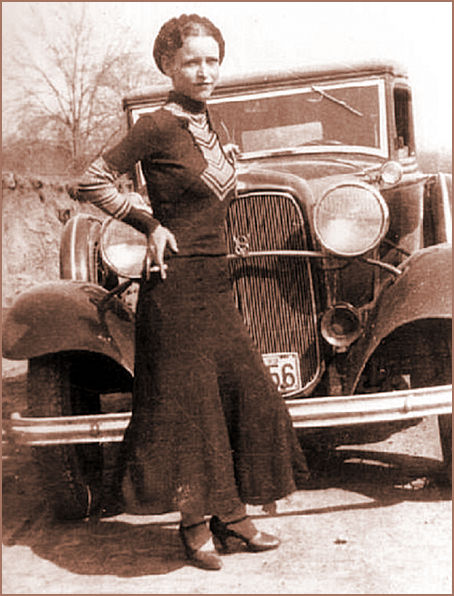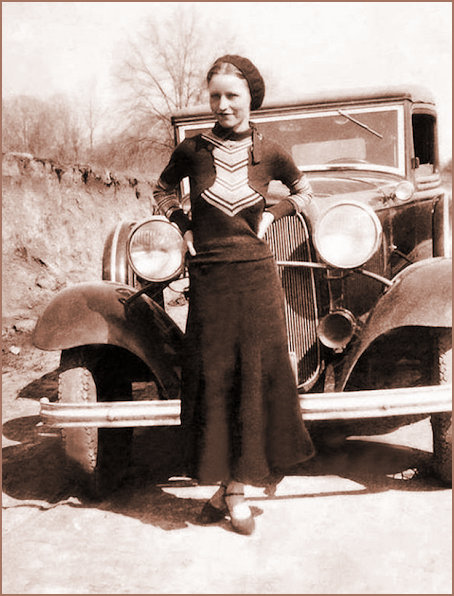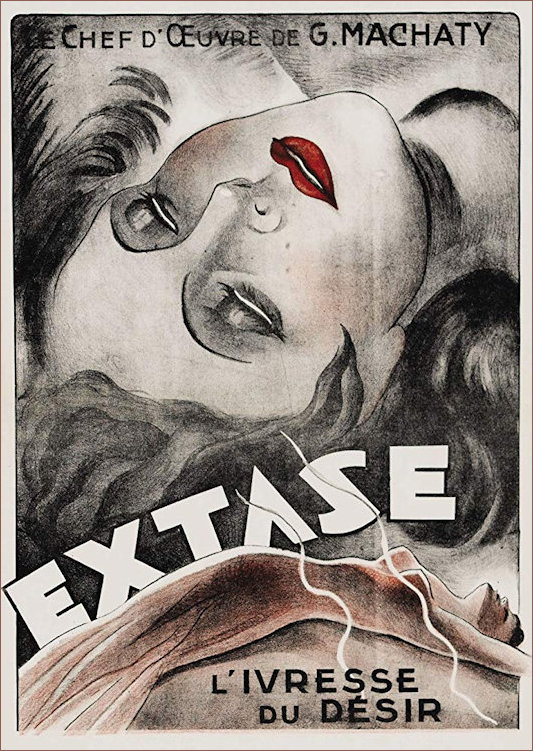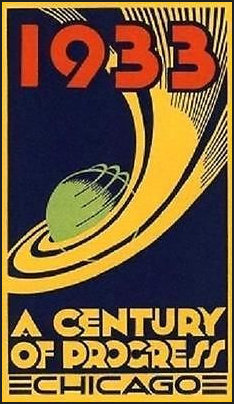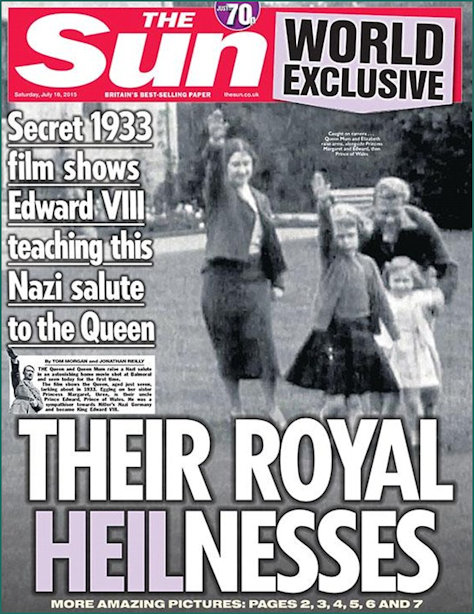Notable Events - 1933
Home Page / Art Deco Home / Midland Hotel / Our Visits / Gallery
Greeting the New Year
on the Beach in 1933
1933 - Bonnie & Clyde's first appearance (in Photos)!
A remarkably stylish and playful Bonnie with Clyde - images sourced from pictolic.com with thanks
From the FBI website
Clyde Champion Barrow and his companion, Bonnie Parker, were shot to death by officers in an ambush near Sailes, Bienville Parish, Louisiana on May 23, 1934, after one of the most colorful and spectacular manhunts the nation had seen up to that time. Barrow was suspected of numerous killings and was wanted for murder, robbery, and state charges of kidnapping.
The FBI, then called the Bureau of Investigation, became interested in Barrow and his paramour late in December 1932 through a singular bit of evidence. A Ford automobile, which had been stolen in Pawhuska, Oklahoma, was found abandoned near Jackson, Michigan in September of that year. At Pawhuska, it was learned another Ford car had been abandoned there which had been stolen in Illinois. A search of this car revealed it had been occupied by a man and a woman, indicated by abandoned articles therein. In this car was found a prescription bottle, which led special agents to a drug store in Nacogdoches, Texas, where investigation disclosed the woman for whom the prescription had been filled was Clyde Barrow's aunt. Further investigation revealed that the woman who obtained the prescription had been visited recently by Clyde Barrow, Bonnie Parker, and Clyde's brother, L. C. Barrow. It also was learned that these three were driving a Ford car, identified as the one stolen in Illinois. It was further shown that L. C. Barrow had secured the empty prescription bottle from a son of the woman who had originally obtained it.
On May 20, 1933, the United States Commissioner at Dallas, Texas, issued a warrant against Clyde Barrow and Bonnie Parker, charging them with the interstate transportation, from Dallas to Oklahoma, of the automobile stolen in Illinois. The FBI then started its hunt for this elusive pair.
Background
Bonnie and Clyde met in Texas in January, 1930. At the time, Bonnie was 19 and married to an imprisoned murderer; Clyde was 21 and unmarried. Soon after, he was arrested for a burglary and sent to jail. He escaped, using a gun Bonnie had smuggled to him, was recaptured and was sent back to prison. Clyde was paroled in February 1932, rejoined Bonnie, and resumed a life of crime.
In addition to the automobile theft charge, Bonnie and Clyde were suspects in other crimes. At the time they were killed in 1934, they were believed to have committed 13 murders and several robberies and burglaries. Barrow, for example, was suspected of murdering two police officers at Joplin, Missouri and kidnapping a man and a woman in rural Louisiana. He released them near Waldo, Texas. Numerous sightings followed, linking this pair with bank robberies and automobile thefts. Clyde allegedly murdered a man at Hillsboro, Texas; committed robberies at Lufkin and Dallas, Texas; murdered one sheriff and wounded another at Stringtown, Oklahoma; kidnaped a deputy at Carlsbad, New Mexico; stole an automobile at Victoria, Texas; attempted to murder a deputy at Wharton, Texas; committed murder and robbery at Abilene and Sherman, Texas; committed murder at Dallas, Texas; abducted a sheriff and the chief of police at Wellington, Texas; and committed murder at Joplin and Columbia, Missouri.
The Crime Spree Begins
Later in 1932, Bonnie and Clyde began traveling with Raymond Hamilton, a young gunman. Hamilton left them several months later and was replaced by William Daniel Jones in November 1932. Ivan M. "Buck" Barrow, brother of Clyde, was released from the Texas State Prison on March 23, 1933, having been granted a full pardon by the governor. He quickly joined Clyde, bringing his wife, Blanche, so the group now numbered five persons. This gang embarked upon a series of bold robberies which made headlines across the country. They escaped capture in various encounters with the law. However, their activities made law enforcement efforts to apprehend them even more intense. During a shootout with police in Iowa on July 29, 1933, Buck Barrow was fatally wounded and Blanche was captured. Jones, who was frequently mistaken for "Pretty Boy" Floyd, was captured in November 1933 in Houston, Texas by the sheriff's office. Bonnie and Clyde went on together.
On November 22, 1933, a trap was set by the Dallas, Texas sheriff and his deputies in an attempt to capture Bonnie and Clyde near Grand Prairie, Texas, but the couple escaped the officer's gunfire. They held up an attorney on the highway and took his car, which they abandoned at Miami, Oklahoma. On December 21, 1933, Bonnie and Clyde held up and robbed a citizen at Shreveport, Louisiana.
On January 16, 1934, five prisoners, including Raymond Hamilton (who was serving sentences totaling more than 200 years), were liberated from the Eastham State Prison Farm at Waldo, Texas by Clyde Barrow, accompanied by Bonnie Parker. Two guards were shot by the escaping prisoners with automatic pistols, which had been previously concealed in a ditch by Barrow. As the prisoners ran, Barrow covered their retreat with bursts of machine-gun fire. Among the escapees was Henry Methvin of Louisiana.
The Last Months
On April 1, 1934, Bonnie and Clyde encountered two young highway patrolmen near Grapevine, Texas. Before the officers could draw their guns, they were shot. On April 6, 1934, a constable at Miami, Oklahoma fell mortally wounded by Bonnie and Clyde, who also abducted a police chief, whom they wounded. The FBI had jurisdiction solely on the charge of transporting a stolen automobile, although the activities of the Bureau agents were vigorous and ceaseless. Every clue was followed. "Wanted notices" furnishing fingerprints, photograph, description, criminal record, and other data were distributed to all officers. The agents followed the trail through many states and into various haunts of the Barrow gang, particularly Louisiana. The association with Henry Methvin and the Methvin family of Louisiana was discovered by FBI agents, and they found that Bonnie and Clyde had been driving a car stolen in New Orleans.
On April 13, 1934, an FBI agent, through investigation in the vicinity of Ruston, Louisiana, obtained information which definitely placed Bonnie and Clyde in a remote section southwest of that community. The home of the Methvins was not far away, and the agent learned of visits there by Bonnie and Clyde. Special agents in Texas had learned that Clyde and his companion had been traveling from Texas to Louisiana, sometimes accompanied by Henry Methvin.The FBI and local law enforcement authorities in Louisiana and Texas concentrated on apprehending Bonnie and Clyde, whom they strongly believed to be in the area. It was learned that Bonnie and Clyde, with some of the Methvins, had staged a party at Black Lake, Louisiana on the night of May 21, 1934 and were due to return to the area two days later.
Before dawn on May 23, 1934, a posse composed of police officers from Louisiana and Texas, including Texas Ranger Frank Hamer, concealed themselves in bushes along the highway near Sailes, Louisiana. In the early daylight, Bonnie and Clyde appeared in an automobile and when they attempted to drive away, the officers opened fire. Bonnie and Clyde were killed instantly.
Read more about Bonnie's poetic side 'We donte want hurt anney one' here
1933 - Campari
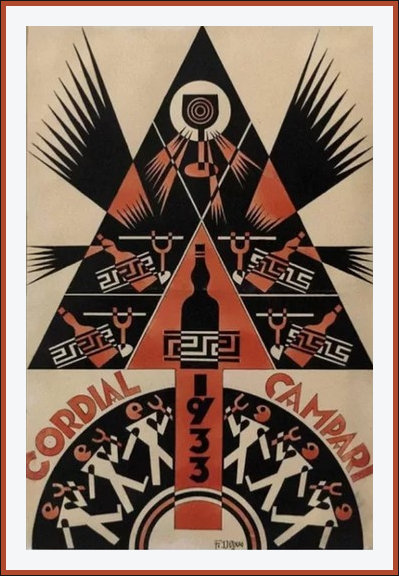
Campari being my tipple of choice I thought I would this very unusual design by Fortunato Depero (not quite his usual style) created specifically for the year 1933 - can't say fairer than that! Image courtesy of and sourced from society6.com
1933 - Tennis (Fashion)
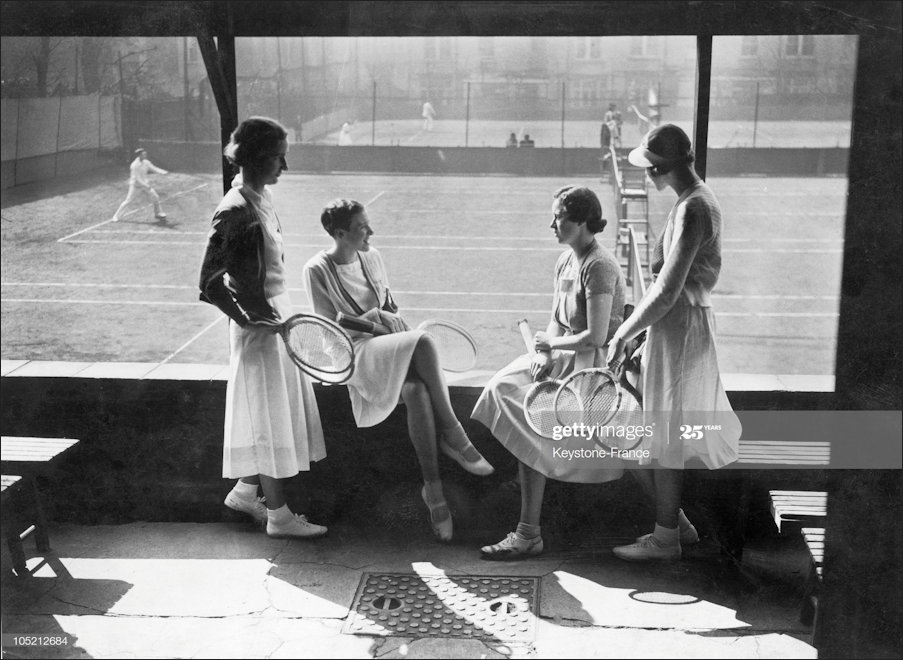
Women Tennis Players Watching A Match Through A Window in the 20th Tennis Open From Hampstead, In 1933
UNITED KINGDOM - APRIL 27: On April 27, 1933 In England, Women Tennis Players Watching A Match Through A Window In The 20Th Tennis Open From Hampstead. (Photo by Keystone-France/Gamma-Keystone via Getty Images)
1933 - First acknowledged Film 'strapline' created
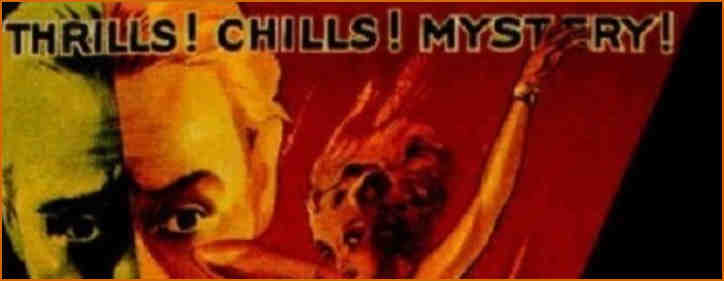
'Thrills! Chills! Mystery!' promised in 'The Circus Queen Murder'
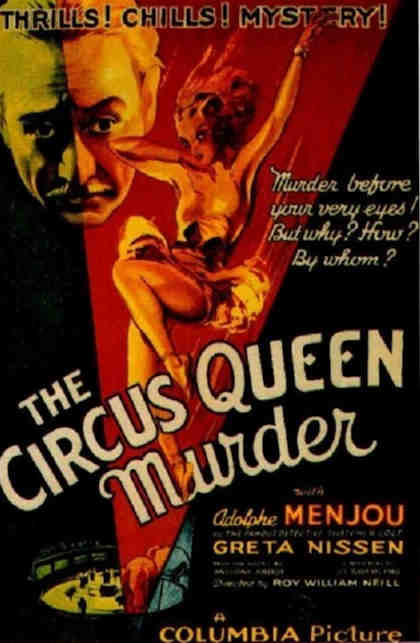
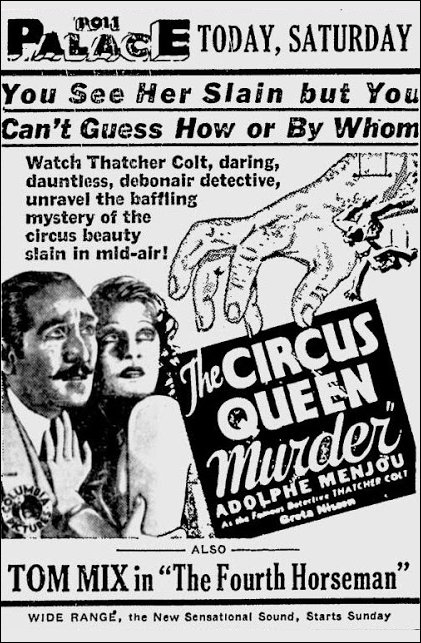
"A film’s tagline is essentially a slogan, strap, hook, catchphrase or USP (Unique Selling Point). But the cleverest, wittiest and most durable somehow transcend their marketing brief and enter the national discourse. “Be afraid… Be very afraid” is a timeless example used all the time, but not everyone remembers it comes from the 1986 remake of The Fly. “Just when you thought it was safe to go back in the water” is possibly the best thing about Jaws 2, and the original Superman was a perfect package, its tagline the perfect wrapping: “You’ll believe a man can fly.” Source : Radio Times
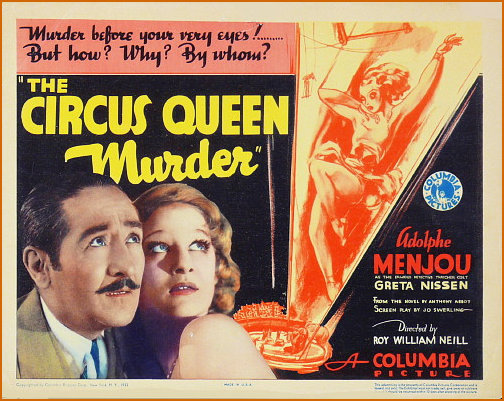
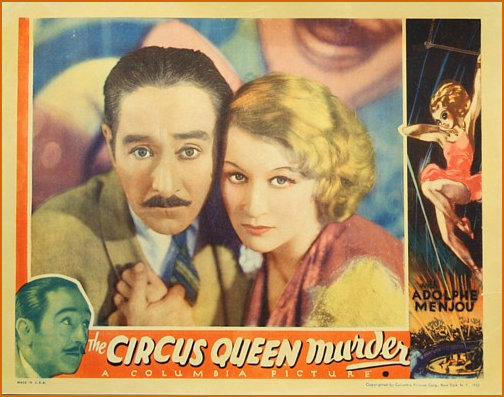
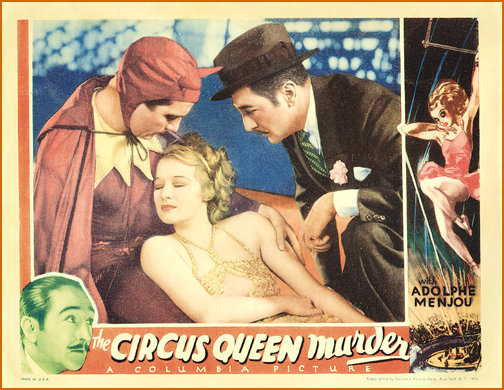
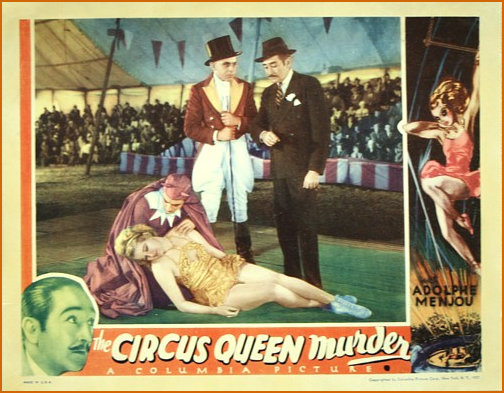
Images sourced from and courtesy of IMDB
The gorgeous, illustrated Hollywood posters from the 30s employed a straightforward hard sell. “Thrills! Chills! Mystery!” promised The Circus Queen Murder in 1933, a shopping-list gambit still used 40 years later for the Charles Bronson flick Cold Sweat: “Action! Thrills! Suspense!” Source : Radio Times who are promoting their new edition of the Radio Times Guide to Films 2018 - still it makes for a fun read! IMDB
1933 - The Top 50 Films
Full listing from IMDB can be found here
1933 - Getting ready to Party!
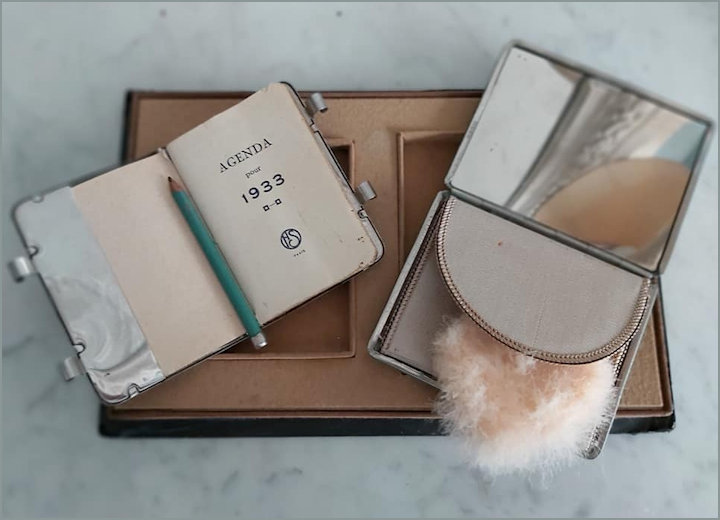
A 'to die for' moment and who wouldn't want to own a powder compact, mirror and diary like this? - Image courtesy of Nuage de Poudre and sourced by Fb
1933 - The Lone Ranger - Radio Show

The original 1933 radio 'Lone Ranger' George Stenius (George Seaton) far left
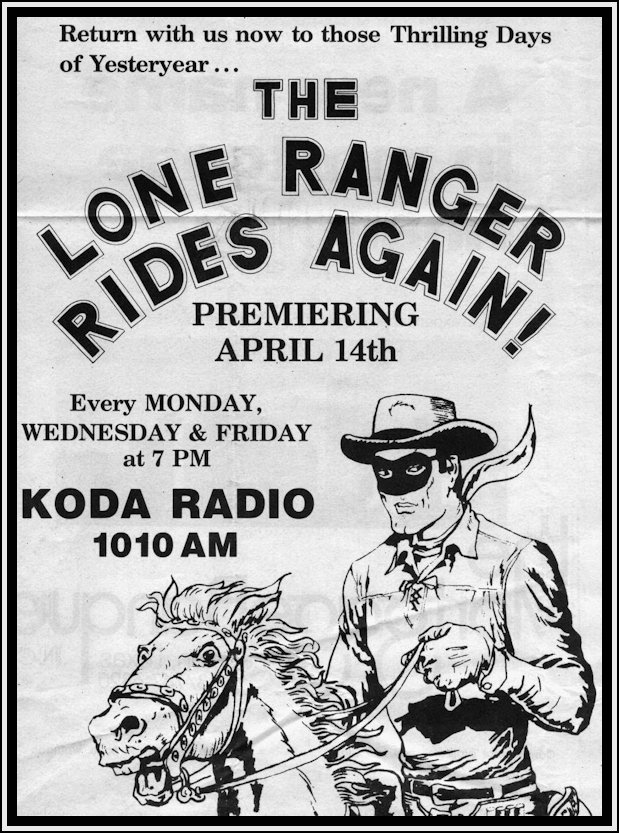
Lone Ranger newspaper or periodical advert - image courtesy of Durnmoose Movie Musings
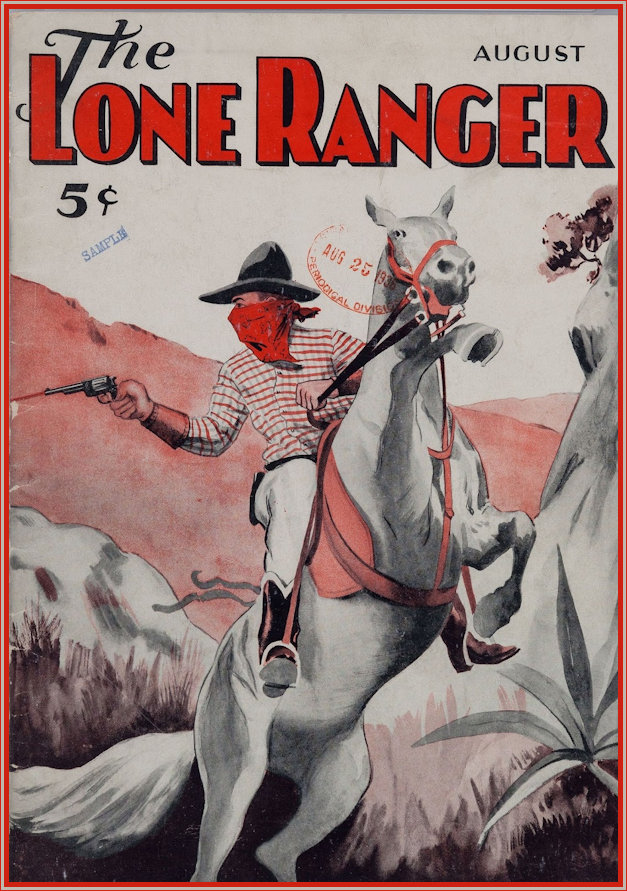
One of the early magazine covers (post-1933) - image source Martingrams blog no provenance available
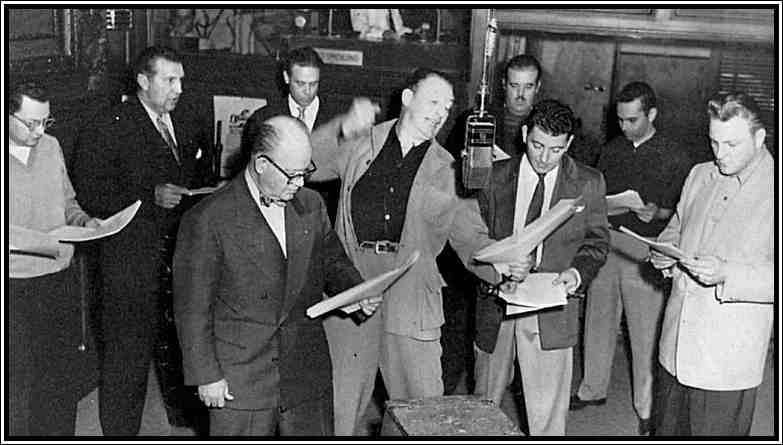
All the programmes were performed and broadcast 'live' with an apparent enthusiasm for the story lines (see above) - "Inside the WXYZ studio during one of the episodes" Photo: pdxretro
From I like History : "The program was created by George Trendle, the radio station owner, and Fran Striker, the show’s writer. It quickly became one of the most popular radio programs on the air and was loved by children for the non-stop action. Adults also loved the program, especially parents, because of the positive moral example offered by the upstanding masked man. The Lone Ranger didn’t smoke, drink, or use profanities. As a matter of fact, he went out of his way to use grammatically correct speech without the use of slang. Maybe most importantly, he never shot to kill when taking down law-breaking outlaws. The Lone Ranger made an effortless transition to television in 1949 and ran until 1957, and has since been turned into a feature-length Hollywood film, as well as numerous books all other forms of media.
In 1933, the first of 2,956 radio episodes of the hit show, The Lone Ranger, debuted on the Detroit radio station called WXYZ. The first airing was said to happen either late night on January 30th or early morning on the 31st depending on whom you ask. The Lone Ranger is a fictional masked cowboy who used to run with the Texas Rangers that now fought outlaws of the Wild West. He did this with the help of his trusty Native American sidekick, Tonto, and his loyal horse that went by the name Silver. This led to one of the programs most popular catch phrases 'Hi-yo, Silver! Away!'"
From the Lone Ranger Fan Club : "The Lone Ranger takes to the air. Though the exact date of the first Lone Ranger broadcast is often debated, it has been widely accepted that Jan. 30, 1933, marked the first time the masked man sprang into action. We acknowledge Feb. 2, 1933, as the date of the first official broadcast. George Stenius (George Seaton) played the Ranger for the first three months. When Stenius quit, Brace Beemer was selected to play the lead, but Beemer quit after a few months to open his own advertising agency. Earle W. Graser took the part until his death in an automobile accident in April of 1941.Beemer was the brought back to play the part. Nowhere in the pages of history can one find a more popular voice on the radio as the Lone Ranger than Brace Beemer."
Interesting snippets from Jim Ramsburg : True introduced the program’s first test broadcast over WXYZ on January 20, 1933 and improvised with gusto, “The Jewell Players present a fiery horse with the speed of light, a cloud of dust and a hearty, Hi-Yo, Silver! The Lone Ranger!”
The Lone Ranger’s theme song, eventually familiar to millions of listeners, was March of The Swiss Soldiers, finale to Rossini’s William Tell Overture. The needle drop was with the program from the beginning - recorded public domain music requiring no talent fees and no royalties. With the Rossini theme and bridges supplied by Liszt, Tchaikovsky, Schubert, Borodin, and Mendelssohn the producers saved millions of dollars over the years of the show’s run.
After several more dry runs the show was deemed ready by Trendle, Pierce, Campbell, Jewell, Striker, True, Campbell and everyone else involved in its production. The Lone Ranger debuted on WXYZ and its new Michigan Radio Network on Tuesday, January 31, 1933.
At first The Lone Ranger was really alone with no one to talk to - and to advance the plot’s narrative - except Silver and supporting members in each story’s cast. To solve this problem Striker created the Ranger’s “faithful Indian companion Tonto” - his constant sidekick with a name borrowed from Tonto Basin, a tiny community in western Arizona and the title of a 1921 Zane Grey novel. Tonto was introduced in the program’s twelfth episode - a back-story in which young Texas Ranger John Reid, wounded in an ambush and left for dead, was discovered and nursed back to health by his boyhood kemosabe now an adult, Tonto.
Unlike the role of The Lone Ranger which changed hands several times, Tonto became steady work for veteran British stage actor John Todd, who was 56 when he introduced the character on the broadcast of February 25, 1933. Todd remained in the role until the program went out of production in 1954 when he was 77.
Read more : George Seaton IMDB Biog | Lone Ranger Radio Fan Club | Jim Ramsburg | Durnmoose Movie Musings | Martingrams blog
1933 - Top Entertainment
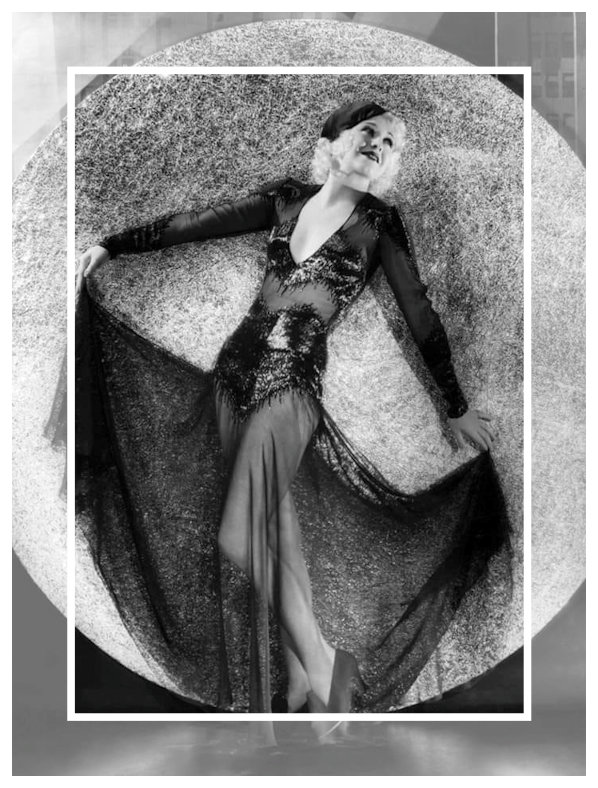
Ginger Rogers striking the perfect pose in 'Gold Diggers of 1933'
Being a big fan of Wilson, Keppel and Betty - it's great to see that they were going strong in 1933 - watch the dance here on You Tube
20th January, 1933 - 'Ekstase' (Ecstasy) starring Hedy Lamarr released
Original 1933 film poster image sourced from IMDB
to a public furore!
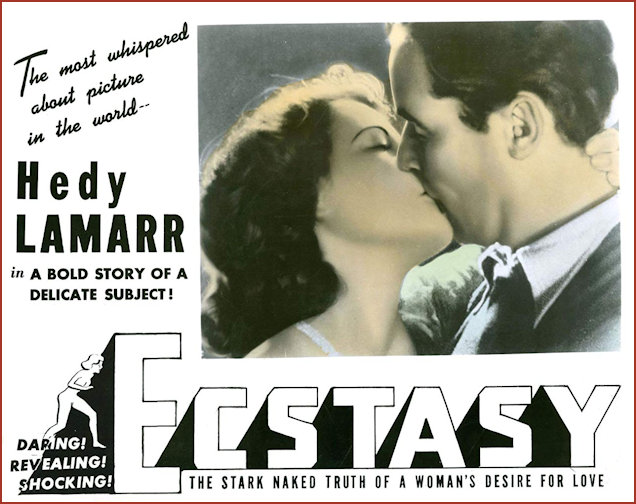
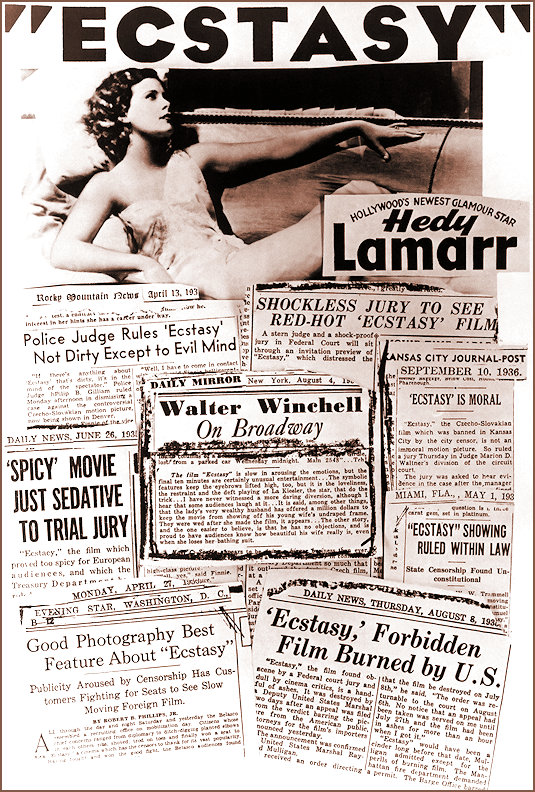
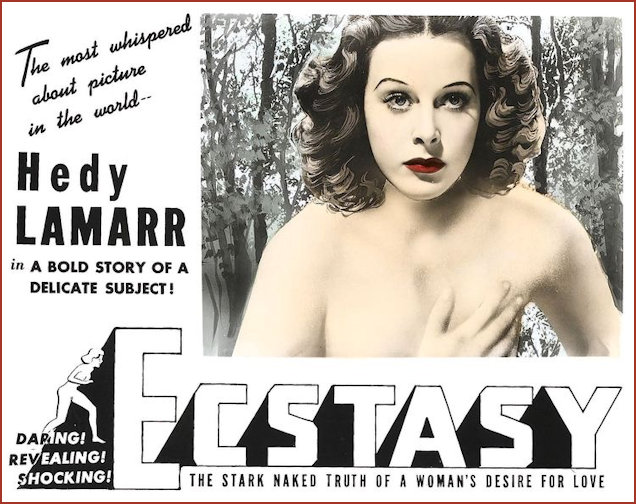
Synopsis
The story begins with apparent love and optimism as the groom, Emile, carries his young bride, Eva, over the threshold of his home. But, being considerably older, he becomes obsessed with his routine and falls asleep in the bathroom, while his bride lies awake in the bed on their wedding night. His lack of passion and her dreams of a happy married life dashed, young Eva turns to her father and asks to come home. Her father asks, "What happened?", to which she replies, "Nothing!". Eva files for divorce citing that there is nothing in common.
Once back on the opulent family farm, she regains the joy of her youth. She awakes one morning and while wearing her nightgown, rides her horse to a pond where she swims. Her horse runs off in search of her mate with the nightgown on its back and Eva chases it, naked, in the fields. The horse runs through a work camp where a handsome young engineer, Adam, captures the horse and returns it to the fair maiden. They sit and enjoy the landscape and beautiful day and fall in love. Later that evening, during a stormy night, she walks to his humble house and they make passionate love during which she breaks her pearl necklace. She has found her passion.
The next morning, she returns home to confront her estranged spouse who wants her back; however, she explains that it is too late. Despondent, he departs. Driving through the work site, he runs across Eva's new love who wants a ride to town so that he can have Eva's necklace repaired. Emile sees the pearls in Adam's hand and realizes that Eva has found someone else and has a breakdown. Adam takes Emile to a hotel and has Eva meet him there, not knowing he has brought her husband, Emile to that same hotel. Despite dreams of happiness, they all experience the tragic repercussions of the sad situation.
Sourced from : IMDB
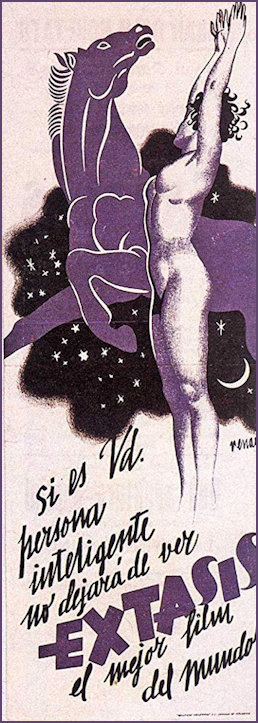
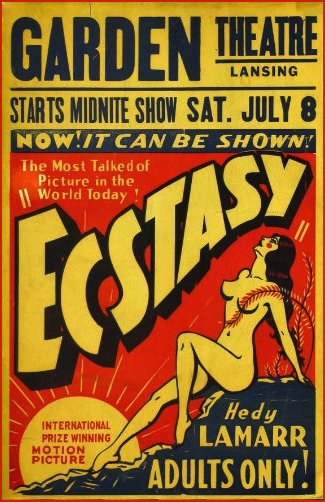
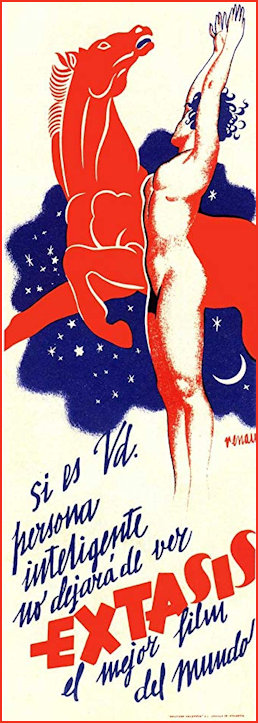
Lurid posters won't have helped Lamarr's cause - Adults only! It's asking for trouble!
Hedy Lamarr – the 1940s 'bombshell' who helped invent wifi
Pamela Hutchinson |@pamhutch | Thursday, 8th March 2018 15.00 GMT Last modified on Thursday 8th Mar 2018 22.00 GMT
The actor, who depicted film's first female orgasm, was well known for her scandalous love life and sultry beauty. Hedy Lamarr, the star MGM called "the most beautiful woman in the world", had two of the worst-kept secrets in Hollywood. One of them, she could never escape until long after her career was over. The other, the press took little interest in at the time – but since her death in 2000, this is the story that has come to define her. A new documentary about Lamarr's life encapsulates both stories – one about sex and the other about science – in the innuendo of its title: Bombshell. Lamarr's story is one of a brilliant woman who was consistently underestimated. It also gives us the clearest possible illustration of why on-screen representation matters – of all the parts that Lamarr was given to play, none of them was as fantastic, or inspirational, as her real life.

A 1940s shot of Lamarr, 'The most beautiful woman in the world' - image and dialogue sourced from The Guardian
The actor, who was born Hedwig Kiesler in Vienna in 1914, was given her new surname by Louis B Mayer when she signed for MGM in 1937. He named her after the studio's silent-era vamp Barbara La Marr – intending that her dark, heavy-lidded beauty should remind people of MGM's sizzling back catalogue, not her own. Back in Europe she had made a film that was too hot for MGM's family-values ethos. Gustav Machaty's Ecstasy (1933) starred a teenage Hedy as a frustrated bride who finds fulfilment in an affair with a young man: she appears completely nude and performs what is probably the first on-screen female orgasm. Lamarr herself said that her movements in the love scene were prompted by the director shouting instructions and sticking her with a safety pin, but the effect, in this atmospheric, heavily symbolic and near-silent drama, is remarkably intense. The film was banned in the US, but screened illicitly there for years, and no matter how many hits she had at MGM, and despite the studio's efforts, Lamarr was frequently referred to as the "Ecstasy girl". Although she achieved international fame as a Hollywood movie star, Lamarr was not satisfied by acting. In her trailer between takes, and staying up all night at home, she practised her favourite hobby: inventing. In an audio recording used in Bombshell, she discusses her love of science, her failed experiments (effervescent cola tablets) and her successes, including streamlining her lover Howard Hughes's racing aeroplane. "I don't have to work on ideas," she says. "They come naturally." Lamarr's greatest scientific triumph was intended for the US navy during the second world war, but is now used in modern wireless communication. Her "secret communication system" used "frequency hopping" to guide radio-controlled missiles underwater in a way that was undetectable by the enemy. It was Lamarr's brainwave (though some say she may have first seen a sketch of a similar idea in the office of her first husband, the Austrian munitions manufacturer Fritz Mandl) and she developed it together with a friend, the composer George Antheil. The patent was granted in 1942. The military took her idea and eventually used it, but Lamarr was advised that she would make a greater contribution to the war effort as a pinup rather than as an inventor: entertaining troops, pushing war bonds and, as the documentary notes, selling kisses. Lamarr's invention didn't become widely known until near the end of her life, in the late 1990s. It gained more traction when her obituaries were published in 2000. Since then the news has spread and she has become an icon of women in science – in comic books, plays and even that modern monument, a Google Doodle.
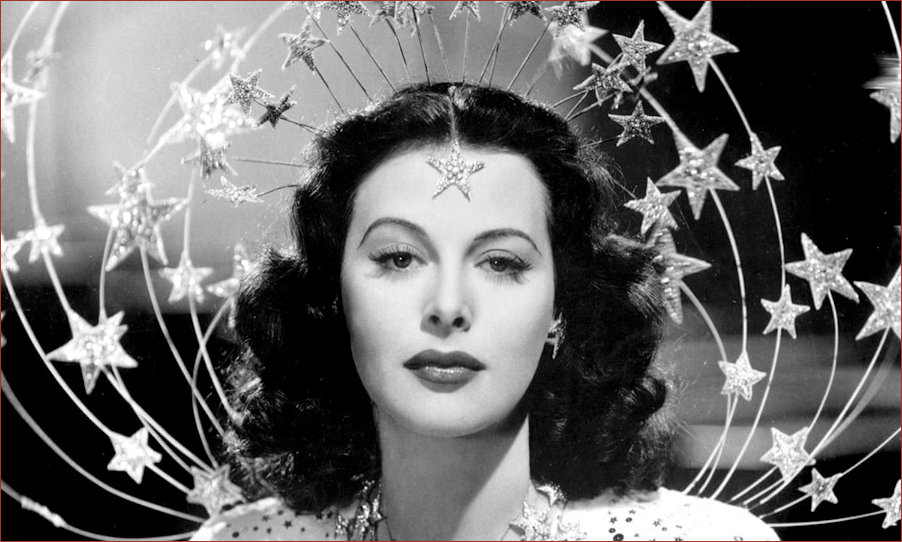
Hedy Lamarr, looking every inch the Hollywood star - image sourced from The Guardian
All the time that Lamarr was making big films in Hollywood (and missing out on even more, including Casablanca and Gaslight) the press kept writing about her love life (six marriages and six divorces), and her sultry, kittenish looks. Anything but her invention – despite the fact that it had actually been made public in 1941. The National Inventors Council leaked the story to the press, leading the LA Times to call Lamarr a "screen siren and inventor … [whose] invention, held secret by the government, is considered of great potential value in the national defense program". The story disappeared and by 1944, when Motion Picture Magazine referred to Lamarr's intelligence, it was talking about her "discovering a new headdress". As Lamarr aged, she became a joke – even the ghostwriter of her memoirs turned them into something so "fictional, false, vulgar, scandalous, libelous and obscene" that she sued the publishers. Lamarr's biggest movie roles, from Samson and Delilah to Ziegfeld Girl, White Cargo and Experiment Perilous, prioritised display over action – her characters, often exoticised in a nod to her European heritage, were beautiful creatures to be looked at, absorbed by the male gaze, and with very little to say. Lamarr herself, who pointedly defined glamour as standing still and looking stupid, understood all too well why no one wanted to hear about her science work – it didn't fit MGM's marketing narrative. The credo of the Geena Davis Institute on Gender in Media is "If she can see it, she can be it", and there can't be a clearer example than Lamarr's of why on-screen representation matters. If Lamarr's full story had been told while she was still working, or if she had ever played a woman as brilliant as herself in a film, perhaps the revelation that a star had brains as well as beauty wouldn't be quite such a, well, bombshell.
Meet the Actress Who Performed the First Onscreen Orgasm
"Indecent and morally dangerous." "Unsuitable, immoral and lascivious." "Extremely audacious." Reviews for 50 Shades of Grey? Not quite. Those are some of the criticisms which greeted Ecstasy, which first aired in theaters in 1933.
The Czech movie was the first non-pornographic film to feature a woman performing an orgasm onscreen, and it catapulted that woman—18-year-old Hedy Kiesler—into international stardom. In the movie, Kiesler—who would later be forced to change her name to Hedy Lamarr in an effort to distance herself from her salacious debut—played Eva, a young woman married to a much older man who also happens to be impotent. One day while swimming nude in a lake, her horse runs off with her clothing draped across its back. A naked Eva chases the horse through the countryside, in a scene that was scandalous for its nudity but G-rated compared to what comes later. The naked chase leads to what can only be called now, anachronistically, a meet-cute, with a strapping young man whom she later takes to bed. At this point, it should be noted, Eva has fled her passionless marriage, but she's not technically divorced. So when she does the deed with her young lover, it constitutes adultery, which was in 1933 as much a reason for public outcry as her sexualized performance. The sex scene itself—not surprisingly quite tame by today's standards—cuts between her hand grazing the rug on the floor, the pearls on her necklace scattering as she wrings them from her neck, and, most scandalously, her face contorting in accordance with the ecstasy of the moment (read: an orgasm). It ends, naturally, with a cigarette.
The film's reception was, as with 50 Shades of Grey, divided chiefly between two camps. There were those, like the crowds at the International Film Exposition in Venice, who were entranced by its sensual beauty and received it (unlike 50 Shades) as an art-house film. And then there were those who deemed it filth, like the Pope (who denounced it in the Vatican newspaper); Kiesler's then-husband (who sought to buy and destroy every copy he could find); the Catholic Legion of Decency (which condemned it); and U.S. officials (who confiscated the film under the indecency provisions of the Tariff Act). The movie finally made it to the U.S. seven years later, though it was shown in limited theaters, without the seal of the Motion Picture Production Code, or Hays Code, which set out moral guidelines for the industry (banning profanity, nudity, images of childbirth, ridicule of clergy, miscegenation, and other now-outdated taboos) until it was replaced with the MPAA rating system in 1968. Kiesler, soon to be Lamarr, also made her way to America, escaping a controlling husband who also happened to be a Nazi. While it's tempting to celebrate Lamarr as a pioneer of female sexuality, she later claimed that as a fledgling teen actress, she hadn't really know what she was getting into when she took the part. And the publicity the role generated would plague her in the years to come. She was known for years as simply "Ecstasy Girl," and she told LIFE in 1938 that people gawked at her like "I am something in a zoo." Her studio was careful to desexualize her image just the right amount for her next film, Algiers. As LIFE put it, "Extase, naturally, focused attention on her bodily charms. With these under Hays Office taboo, Algiers has to be content with her face. It is no hardship." Anne Helen Petersen, author of the book Scandals of Classic Hollywood, has noted that although Lamarr was not the most talented actress of her day, she nonetheless found it difficult to be taken seriously for anything beyond her sultry looks. "Over her Hollywood career, she would be cast as one 'high class whore' after another—women whose beauty, and sexuality, make them natural victims of the world around them." And with her six failed marriages, she was a regular fixture of the Hollywood gossip mill.
Lamarr's beauty also made it difficult to get much recognition for her brains. Along with the composer George Antheil, she invented and patented a frequency-hopping technology that allowed missiles to go undetected. Though not implemented in time for use during WWII, it did play a role in the Cold War, even contributing to the de-escalation of the Cuban Missile Crisis. Lamarr, who died in 2000 at 85, helped create the world of modern cinema where Dakota Johnson can now be (for better or worse) tied up, blindfolded and whipped onscreen more than 80 years later. But she also, with her patent, laid the foundation for Wi-Fi, Bluetooth and cellular technology. Though she was honored later in life for the latter achievements, she spent most of her life living with the fallout from the former. Source : time.com
9th February, 1933 - The Oxford Union Debate
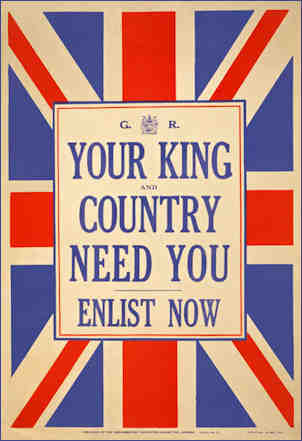
The Oxford Union 'King and Country' debate in 1933
In 1933 the Oxford Union, the university undergraduate debating society, passed a famous motion that "This House would not in any circumstances fight for King and Country". It made headline news at the time: Churchill called the vote "abject, squalid, shameless" and "nauseating", and it is even said to have misled Hitler into thinking the British had lost the will to fight, so it is clearly important historical evidence, but of what? The debate cannot be taken as evidence of what people of all classes were thinking. Oxford undergraduates were hardly typical of the population as a whole. They came largely from wealthy upper- or middle-class families; they were highly literate and well-read; and they were more prepared than most people to engage with abstract issues of principle. Also, they were young, and young people often like to take stand or an extreme position precisely because they know it will provoke a strong reaction - as the Oxford vote certainly did. On the other hand, Oxford and Cambridge undergraduates were an influential group, far more so than they are today. They were regarded - rightly - as the rising stars of politics and both the press and politicians took an interest in what the students were saying, especially in their debating societies. Remember also that the vote took place in 1933, before the full implications of Hitler's rise to power had become apparent. When war finally came in 1939 many of those who had taken part in the debate did indeed fight - and die - for King and Country. Source : Churchill College Cambridge| Read more at Strange History.net
End of February 1933 - The Big Chill
Towards the end of February 1933 came one of the worst blizzards to hit Britain. In parts of the north, Wales and the Midlands, there were 48 hours of continuous snowfall, and elsewhere it was almost as bad. Huddersfield had over 2ft of lying snow, drifts of 14ft were measured on Yorkshire's moors and dales, and villages were cut off from the Midlands to the Scottish borders. Source : Independent.co.uk
It is rumoured one of the first encounters between Edward VIII and Wallis Simpson was witnessed by outdoor skaters in a London Park.
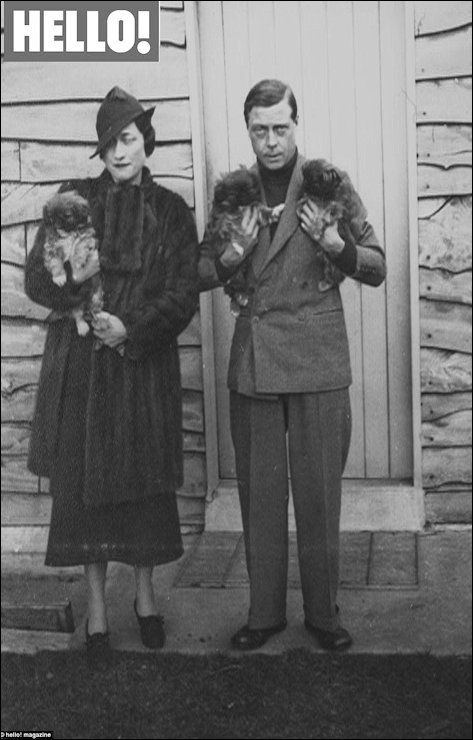
In 2015 'Hello' Magazine published hitherto unseen pictures of the Duke & Duchess of Windsor - might they have wrapped up something like this of they did, indeed, go skating outdoors on one of the frozen lakes in a London Park. Image sourced from and © of Hello Magazine
3rd April, 1933 - First Flight over Everest
British Aviators David McIntyre and Sir Douglas Douglas-Hamilton made the first flight over Mount Everest
Douglas Douglas-Hamilton's steers his biplane toward Everest, April 3, 1933 - image courtesy & © of Getty (Photograph by Stewart Blacker)
Published 19th April, 2013 |By Iain Douglas-Hamilton for National Geographic News
Eighty years ago this month, my uncle steered his open-cockpit Houston-Westland biplane toward Tibet, a young explorer hoping to be the first to set eyes on the summit of Everest. Uncle Douglo is how I've always thought of him, but his name was Douglas Douglas-Hamilton, Marquis of Douglas and Clydesdale. Most people knew him as just Clydesdale. Also with him, as "observer," was Stewart Blacker. Although primitive by today's standards, their plane was a marvel of its day, with its supercharged Pegasus engine capable of soaring above 40,000 feet.
A second, similar plane, a Westland-Wallace, followed close behind, piloted by David McIntyre, with S.R. Bennett as observer. The two biplanes had only rudimentary oxygen equipment and enough fuel on board for no more than 15 minutes flying time over the treacherous mountain. Dressed in multilayers of sheepskin clothing, with in-built electric heating—essential to surviving the icy blast—-the men resembled outlandish monsters. The lead aircraft was equipped with a fully automated Eagle III Williamson aerial camera to take the first images of the roof of the world. They took off from Lalbalu airstrip in the Indian state of Bihar, at about 8:30 a.m. on April 3, 1933—less than a decade after the climbers George Mallory and Sandy Irvine had disappeared in their bid to summit Everest. In addition to wanting to be the first to look down on the mountain from the sky, Clydesdale was hoping to capture some sign of what had befallen the two climbers, some clue that might help solve the mystery surrounding their fate.
A Matter of Honor
Great Britain's national pride rested on the aviators' shoulders. If they failed, other countries were poised to make their own aerial expeditions. There was also a strong scientific intent, as the terrain around the south side of Everest had never been explored or mapped. But the flight almost ended in disaster. Approaching Everest on its leeward side, the Westland was caught in a fearsome downdraft. "We were in a serious position," Clydesdale later wrote with understatement. Only when a counter updraft of similar strength caught the plane were they able to scrape over the wind-raked summit by 100 feet. Everest had been cleared, my uncle admitted, "by a more minute margin than he cared to think about, now or ever." Clydesdale had seen the top of Everest with his bare eyes, but the camera hadn't delivered usable photos—dust problems, apparently.
Another Try
Given the dramas of the first attempt, and the uncertain weather over Everest, Air Commodore Peregrine Fellowes, the leader of the expedition, deemed a second try too risky. But the young men were determined. Sixteen days later, on April 19, in a magnificent act of insubordination, they made another run. They cleared the summit again, noting the plume of snow streaming from Everest's crest. And this time they got good pictures. The photographs showed no sign of Mallory or Irvine. But 20 years later, on May 29, 1953, details revealed in the images helped guide Edmund Hillary and Tenzing Norgay to the top of Mount Everest. Read more | The Guardian |
MT EVEREST CONQUERED! - By WESTLAND AIRCRAFT FITTED WITH BRISTOL PEGASUS. AERO ENGINES
On Monday the Third of April The Two Westland machines of the Houston Mount Everest Expedition made an aerial survey of the summit of the World's highest peak.
Pilots: The Marquis of Clydesdale (Houston Westland) and and Flight Lieutenant D.F McIintyre. - Image sourced from Classic Aviation Ads: The Story Of The 1933 Houston Everest Flight
Image and video sourced from the BBC
Images sourced from and courtesy & © of Rolex Magazine
Stewart Blacker took the aerial photo in 1933, which Rolex incorporated into the Rolex ad seen above, as an illustration. It is important to add some context to this story. Rolex was the very first company to patent and bring to market, the worlds first water-proof watch, and it was called the Rolex Oyster. That being said, Rolex first started offering Rolex Oyster watches in 1927, and this expedition that was equipped with Oyster models achieved this great feat only 5 years later!!! A copy of the original letter Stewart wrote to Rolex on June 12, 1933 is shown above the advert.
23rd April 1933 - the 5th Monaco Grand Prix
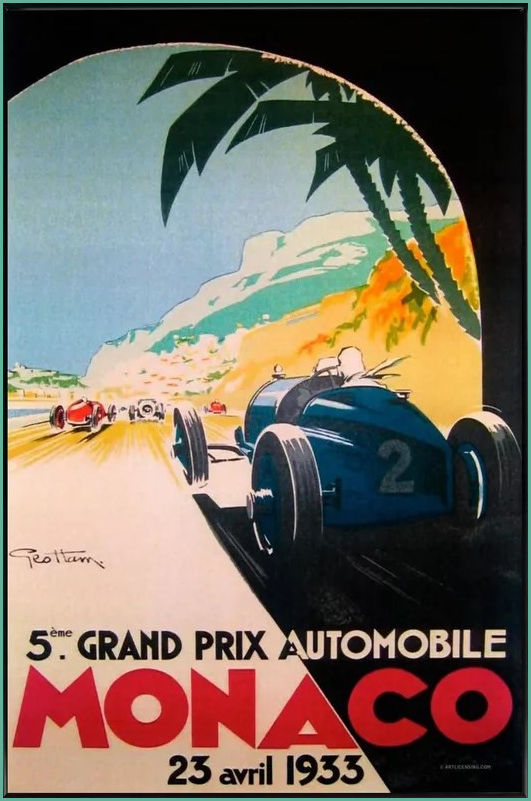
Monaco Grand Prix 1933 poster by Georgia Fowler - image sourced from : juniqe.co.uk with thanks
2nd May 1933 - Lord Rochdale officially opened the Hoover Building
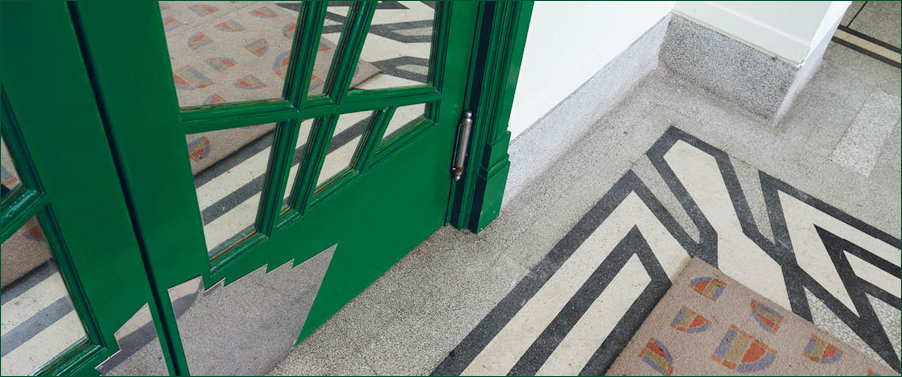
Image courtesy & © of IDM Properties - read more here
Whether you're driving along the Western Avenue, travelling on the Central Line from and towards West Ruislip or shopping at Tesco, you will know the Hoover Building. Overlooking the A40 the Hoover building is a magnificent manifestation of 30s Art Deco. The Hoover Building is not without its critics. Perhaps most famously was Nicholas Pevsner, the architecture critic. In the 50s, he wrote that it was 'Perhaps the most offensive of the modernistic atrocities along this road of typical bypass factories'.
Lord Rochdale officially opened the Hoover Building on 2 May 1933. The factory was extended in the mid-thirties increasing the factory space to 254,000 square feet. It was referred to in the press at this time as a 'Modern Palace of Industry', in contrast to the older factories in the north of England. The firm welcomed visitors to look around the factory. Source : ealing.gov.uk
27th May - 1st November 1933
Chicago World's Fair - 1833 'a Centenary of Progress' 1933
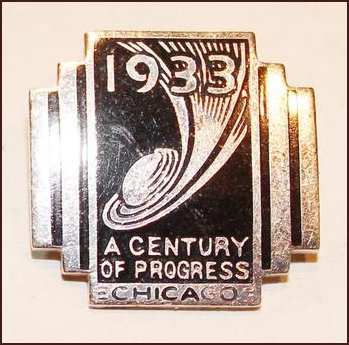
In best 'Flash Gordon' style - one of many (I'm sure) souvenir pins available at the Fair
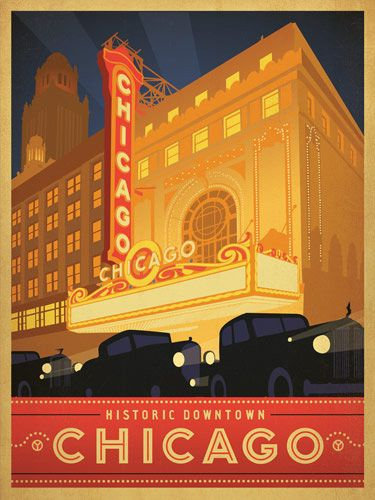
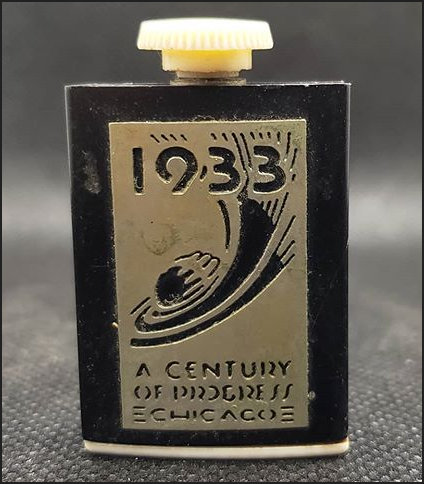
Another recently found souvenir described as a lighter but could easily be a hip-flask or perfume bottle - whichever way it stays true to the Chicago World's Fair logo - image sourced from and courtesy of pictame2.com
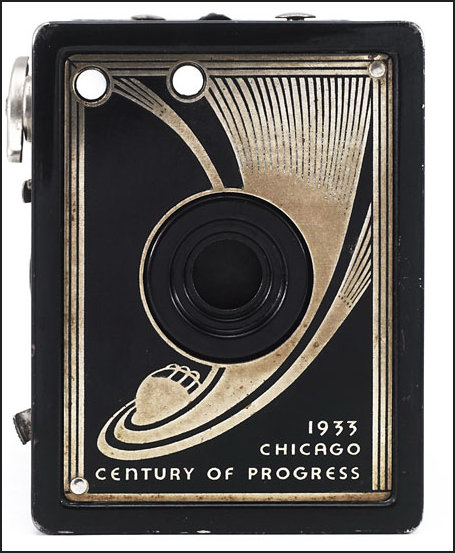
An exquisite example of an Ansco Century of Progress 1933 Chicago World's Fair camera (front view) - image courtesy & © of Ivo ivonlo.com
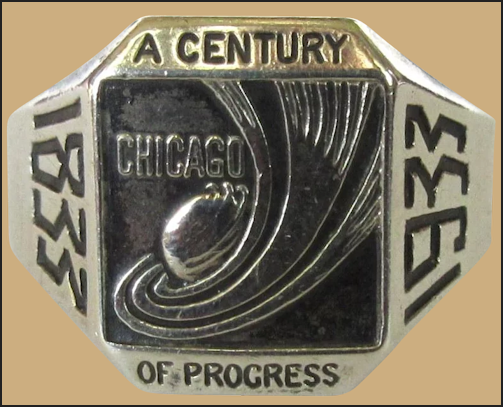
A very impressive signet (or knuckleduster) ring bearing the Chicago World's Fair logo - image sourced from and courtesy of rubylane.com
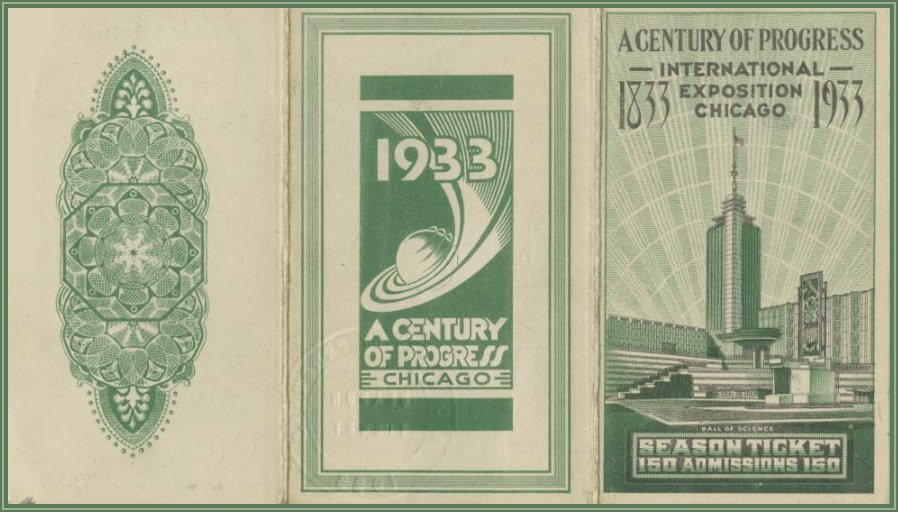
So how lucky were you if you had a 'Season Ticket' for 150 visits? - image courtesy & © of the Chicago Public Library
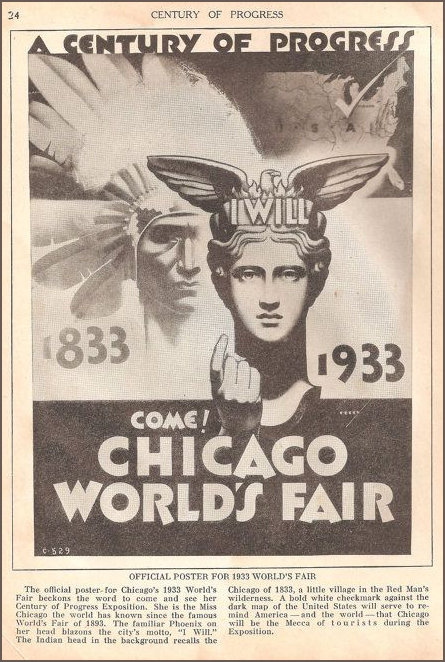
The official poster for Chicago's 1933 World's Fair beckons the word* (sic) to come and see her Century of Progress Exposition. She is the Miss Chicago the world has known since the famous World's fair of 1893. The familiar Phoenix on her head blazons (sic) the City's motto "I Will". The Indian head in the background recalls the Chicago of 1833, a little village in the Red Man's wilderness. A bold white checkmark against the dark map of the United States will serve to remind America - and the world - that Chicago will be the Mecca of tourists during the Exposition. *world
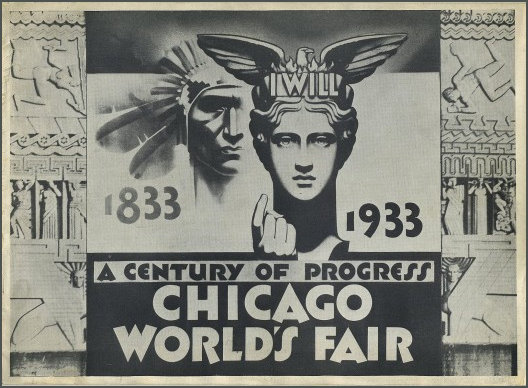
Image sourced from printmag.com which carries an excellent page of memorabilia from the Fair - read more
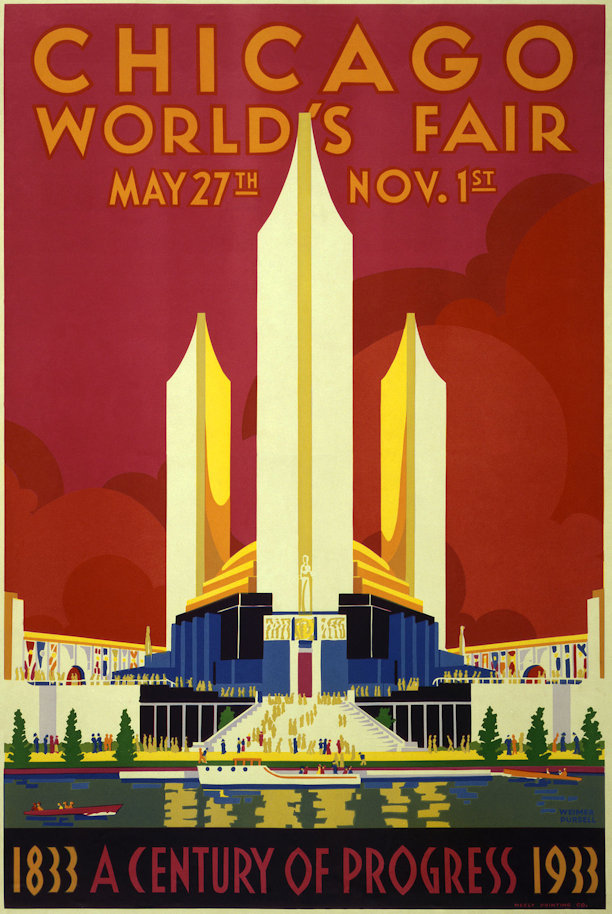
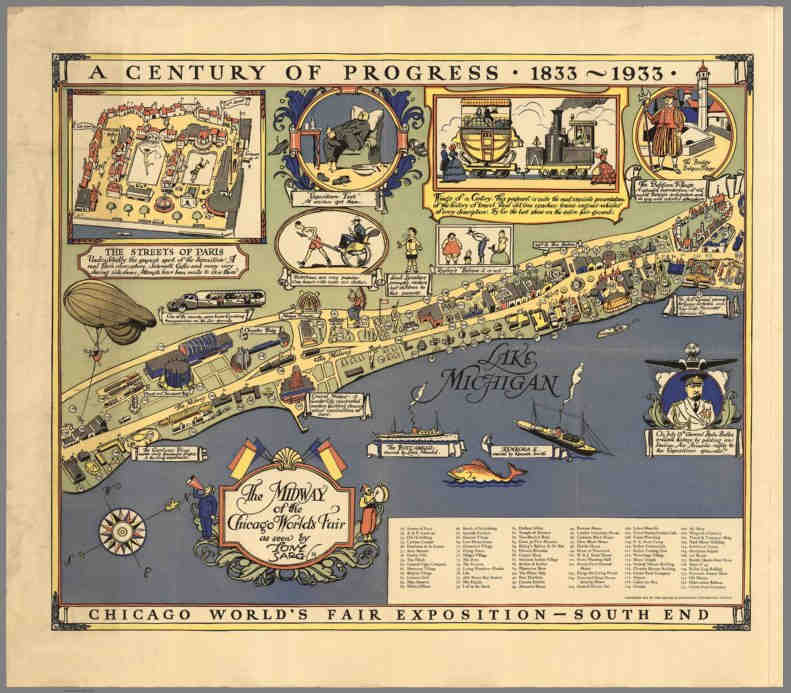
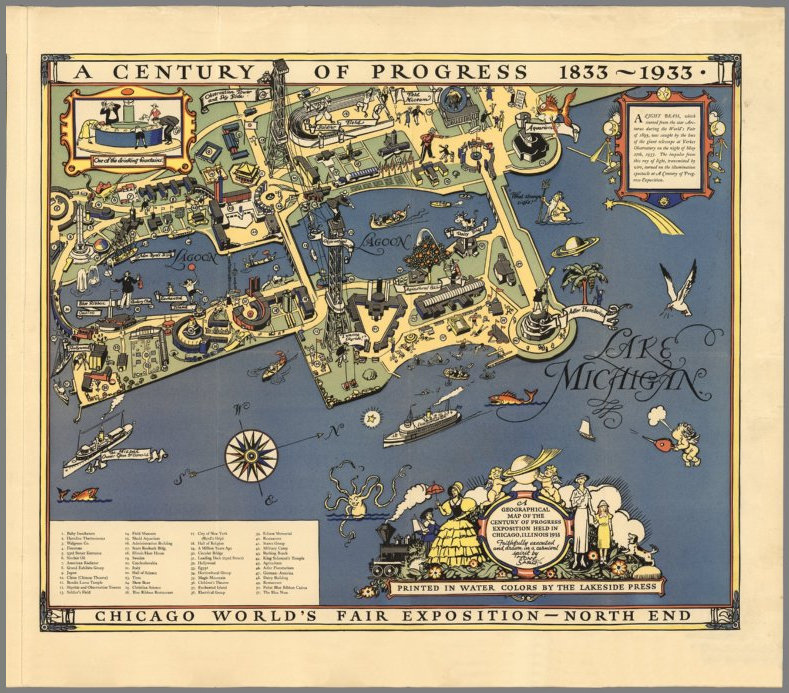
Map images courtesy & © of davidrumsey.com - Full Title - A Century of Progress, 1833-1933 : Chicago World's Fair Exposition, south end : Chicago World's Fair Exposition, north end : A geographical map of the Century of Progress Exposition held in Chicago, Illinois, 1933. Faithfully executed and drawn in a carnival spirit by Tony Sarg. Printed in water colors by Lakeside Press. Copyright, 1933, by the Reuben H. Donnelley Corporation, Chicago. Midway of the Chicago World's Fair as seen by Tony Sarg, 33.
2 pictorial maps on one sheet, a panorama view of exposition grounds, whimsical sea monsters, whales, planes, and boats in the water. Includes numerous insets, many with explanatory texts, notes, and a numerical index to the buildings. The cartouche framed the title with elaborate decorations with the globe, people, plants, and mode of transportation. A Century of Progress International Exposition was held in Chicago during the summers of 1933 and 1934 to commemorate the incorporation of the city in 1833. This was the second world's fair that Chicago had hosted, and by the time it closed, it had been visited by nearly 40 million fairgoers. As was the case with the 1893 World's Columbian Exposition. Sponsors of the fair sought to broaden its appeal by adopting a theme of universal significance - the spectacular advances of science and technology during the period 1833-1933. The exposition was to serve as the dramatization of the progress of civilization during the hundred years of Chicago's existence. Source: davidrumsey.com
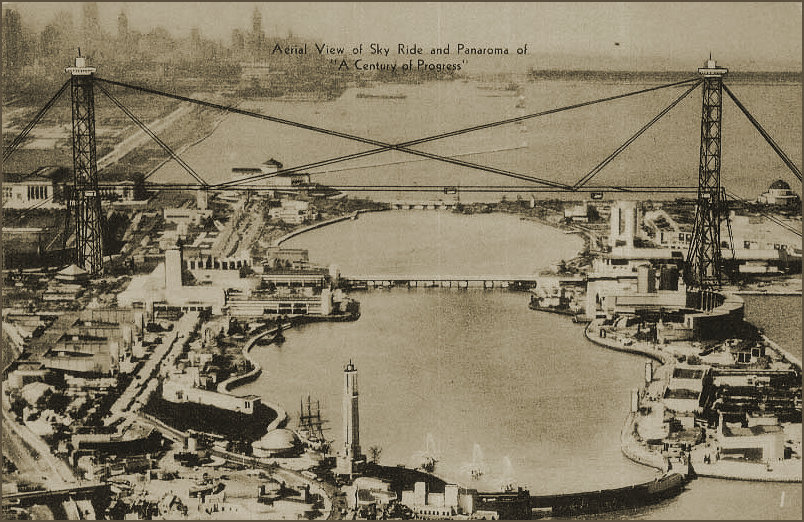
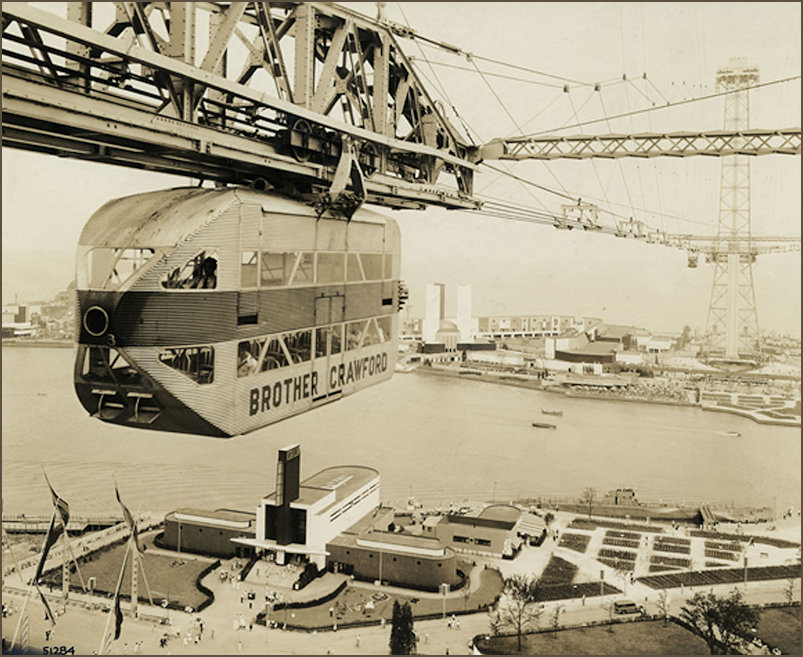
The Sky Ride travelled at 6mph or 9kph across a lagoon. Image sourced from 'Voice of America' via gondolaproject.com
The Sky Ride was built in 1933 for the Chicago’s World Fair and was heralded as the fairs' architectural symbol and show piece. During its one year operational period, it is estimated that the 32 “rocket riders” (i.e. cabins) helped transport 4.5 million passengers! There is some debate whether this ride should have been considered a transporter bridge or an aerial tram. (Either way you wouldn't have got me to travel on it any more than Burgh Island's tractor - which I did in the end)
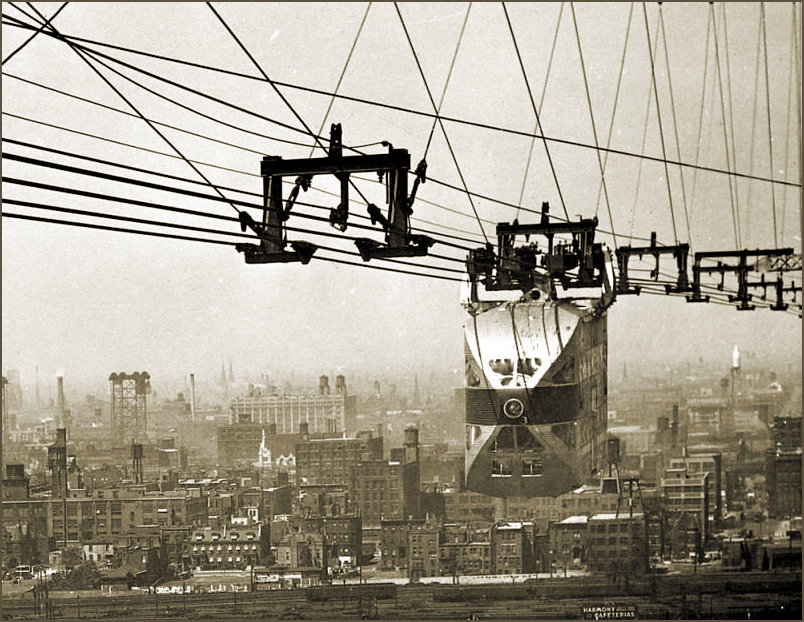
Sky-Ride “rocket” car crossing the lagoon between Northerly Island and the lakefront. Each car fit 36 passengers who paid 40¢ for a 4 minute ride. - Sourced from Chicagology which covers the whole of 1933 Worlds Fair comprehensively
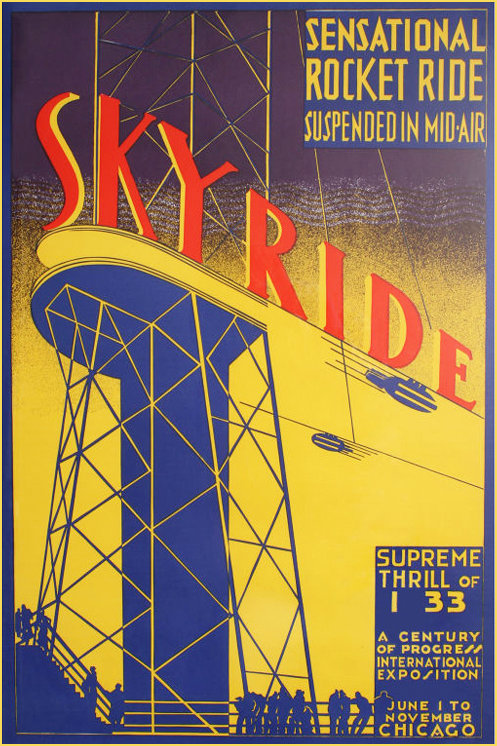
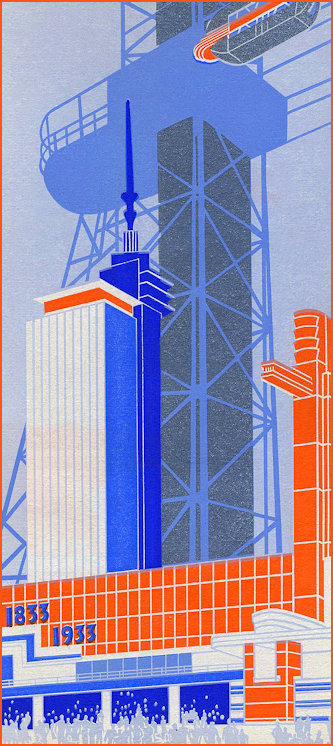
Two different posters featuring the 'Sky Ride' one for the ride itself (l) and the other using the ride as a backdrop for the Fair itself (r) - images sourced from Chicagology
1933 - 'The House of Tomorrow' at the Chicago World's Fair
The "House of Tomorrow," designed for the 1933 Chicago World's Fair Century of Progress Exhibition, was named a National Treasure in 2016 by the National Trust for Historic Preservation. When it was built it was one of the most innovative and influential buildings in modern architecture, filled with the latest technology and appliances. But it fell into disrepair, and now sits empty. The designation as a National Treasure will help raise money to restore the house.
On the house's design and layout : "The 'House of Tomorrow,' designed by Chicago architect George Fred Keck, was a very forward-thinking and innovative full-glass house with steel structure, curtain wall, glass walls of the outside. Innovation such as a garage -- you can park your car inside and hit a button and the door would go up... Dishwasher that would wash your dishes for you, and very early in the thinking about solar design."
On why the house was moved from fair : "There was a gentleman by the name of Robert Bartlett. And Bartlett was creating a new development called Beverly Shores, Indiana. And he saw these houses, along with another dozen from the fair, as a way to begin to promote his development. He would bring folks over from the South Shore and tour them through the houses... So he moved them over there from the fair as a way to spark his development, and hope that folks would come by property in Beverly Shores, which he was promoting as the 'Miami Beach of the north.'"
On the kinds of features the house had in 1933 : "Everybody loves the airplane hangar. The charge to the designers in the home and industrial arts group of the fair, where this house and the other four nearby at were at, was to design an affordable house that would be thinking about what we would be living at in the future, living in materials, and design appliances, that sort of thing. The 'House of Tomorrow' very much pushed that envelop the farthest and had the most influence — and we'd say the most innovation, and including, that's right, an airplane hangar. So for some of us, we're still waiting for that innovation to come but it had an airplane hangar. You back your airplane into its own little garage and park it next to your car — had all the things like a machine shop, because if you have an airplane and a car, you need to be able to make some parts and fix it. And then the living space was actually on the upper floor, what you might the second floor, which is another innovation of this home. Most people didn't live only on the second floor in their homes. This one alleviated that up one story."
Interview extracts sourced from : wbur.org
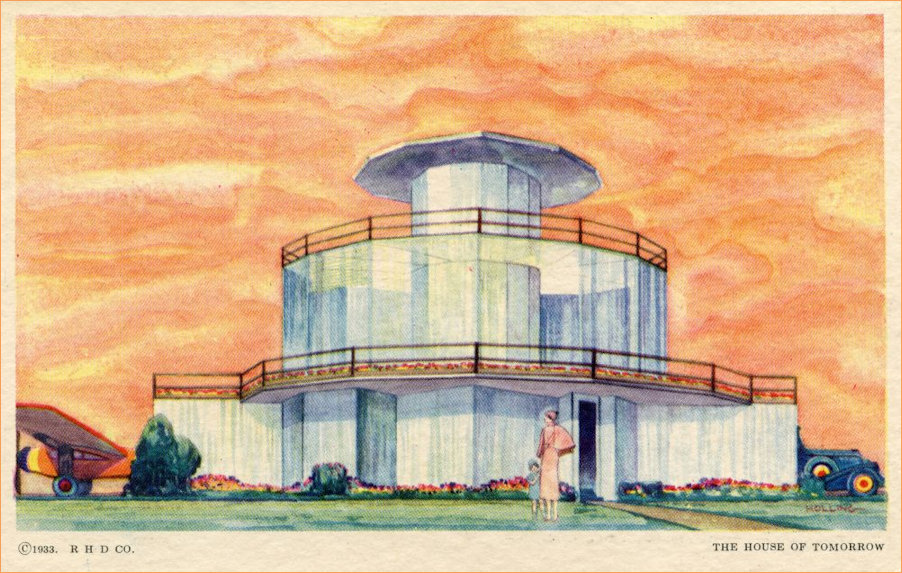
A rendering of the "House of Tomorrow." The house was designed and built for the 1933 Chicago World's Fair's Century of Progress Exhibition. (Courtesy Collection of Steven R. Shook) via wbur.org
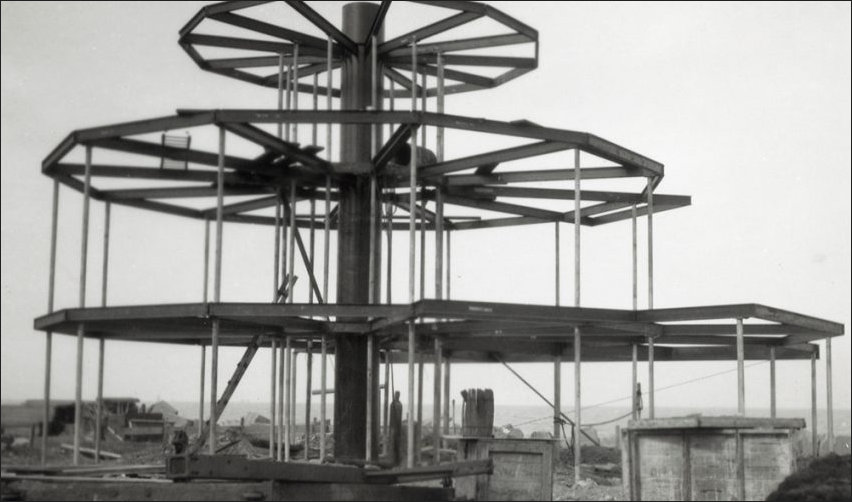
House of Tomorrow under construction. (Photo: Wisconsin Historical Society) via Indiana Landmarks
One of the most popular exhibits of the 1933 World's Fair, the Homes of Tomorrow, included a group of futuristic houses demonstrating new modern conveniences, creative building techniques, and innovative materials. The homes promoted many fresh ideas for 'modern living'- mechanization, the integration of indoor and outdoor living space, and steel as a construction material, all of which remain an important part of contemporary building practices. In the midst of the Great Depression, millions of people could visit the Homes of Tomorrow to experience the future of residential architecture and imagine the considerable possibilities of new conveniences and technology.
After the World's Fair ended, real estate developer Robert Bartlett purchased six residences included in the popular exhibit- the House of Tomorrow, the Armco-Ferro Mayflower House, the Cypress Log Cabin and Guest House, the Florida Tropical House, the Wieboldt-Rostone House, and the Universal House's Country Home. Bartlett bought the buildings at just a fraction of their original cost as part of an elaborate promotional scheme to spark development on his new Lake Michigan resort. In 1935, the six houses (some moved by barge) relocated to Beverly Shores, Indiana, about 55 miles southeast of Chicago.
House of Tomorrow : The most famous of the Century of Progress residences, the House of Tomorrow, stands as a three-story, dodecagonal residence with a steel frame, glass walls, minimal ornament, and a flexible plan. Chicago architect George F. Keck designed the house based on the premise that most families in the future would own an airplane, and the original design included an airplane hangar on the first floor. The forward-thinking house also maintained an experimental solar-based heating and cooling system and an early dishwasher. Although Robert Bartlett replaced some of the home's original features after its relocation, the House of Tomorrow still conveys the hopeful architectural ideas and scientific optimism emphasized during the 1933 World's Fair. In 2016, the National Trust for Historic Preservation named the House of Tomorrow a National Treasure, and the structure is currently undergoing a $2 million rehabilitation.
Extract sourced from : claasshaus.com
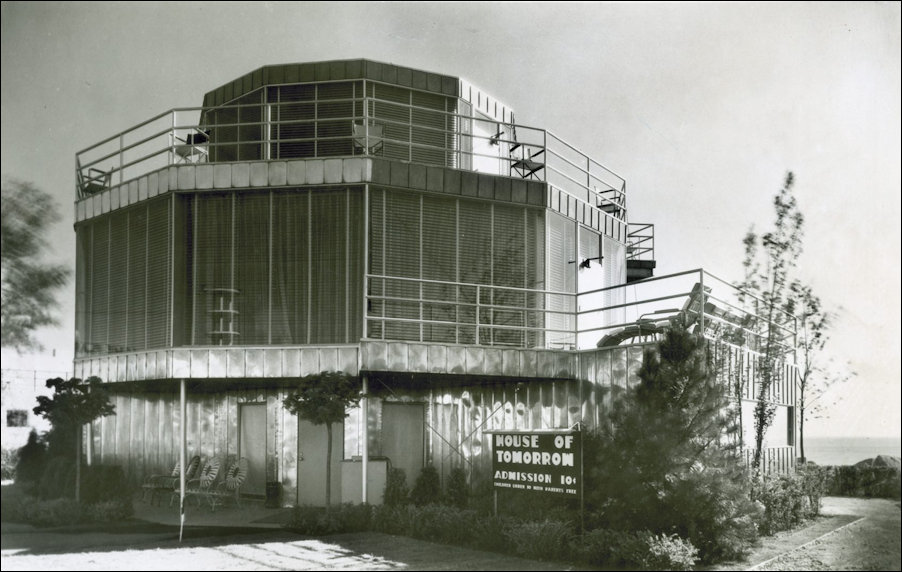
The "House of Tomorrow." (Courtesy Wisconsin Historical Society) via wbur.org
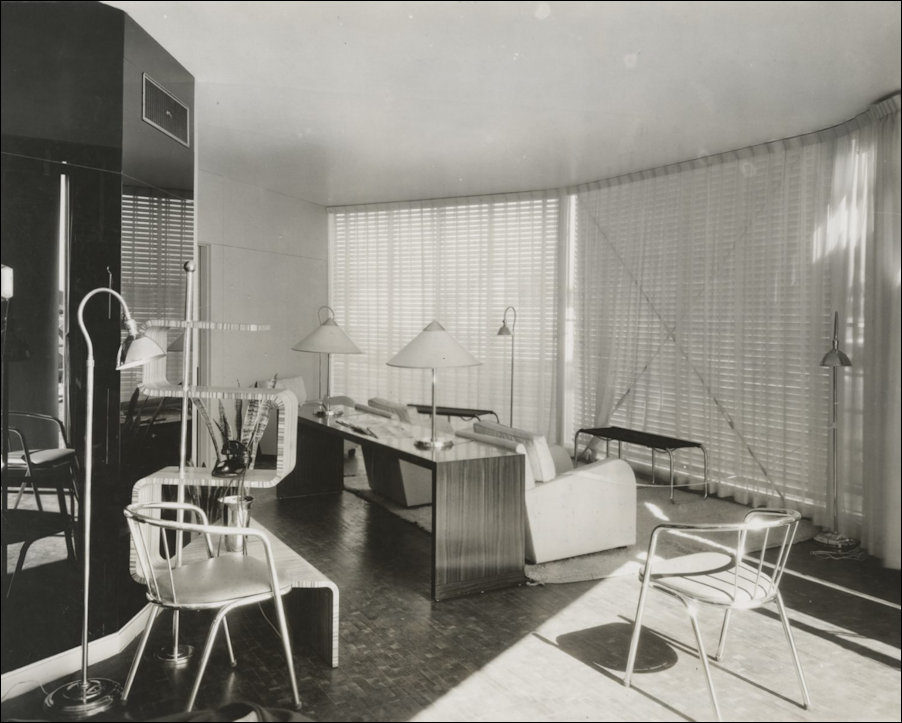
An interior view of the living room in the "House of Tomorrow," designed by George Keck for the Home and Industrial Arts exhibit at the Century of Progress World's Fair in Chicago in 1933. (Courtesy Chicago History Museum) via wbur.org
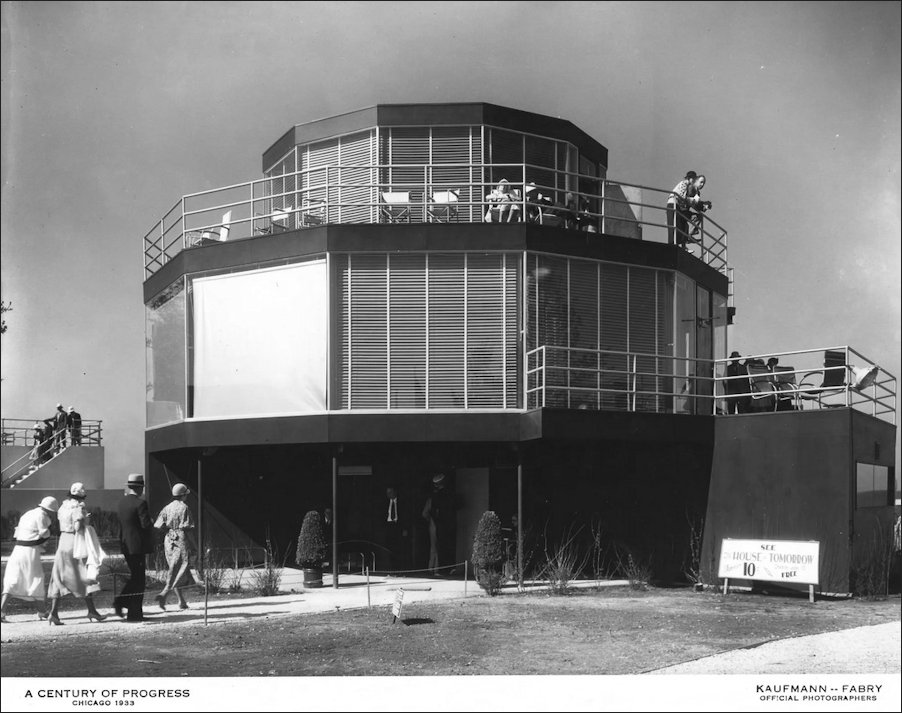
House of Tomorrow at the Century of Progress International Exposition, 1933-1934 - image sourced from archinect.com
1933 World's Fair "House of Tomorrow" seeks private resident to fund restoration
By Mackenzie Goldberg | Feb 25, 2019
Indiana Landmarks is looking for a private citizen to take over the House of Tomorrow from Chicago's 1933 World's Fair in order to fund its restoration. Working with the National Park Service, who acquired the property in the 1960s, they are offering a 50-year lease to whomever can cover the estimated $3 million cost of bringing the building to federal standards. The lease comes with preliminary plans, permits, and architectural drawings from the Chicago firm bKL Architecture.
Designed by the American modernist architect George Fred Keck, the eight-sided glass structure is one of the 12 Century of Progress homes, which were intended to show off the future of living. After the Fair, the House of Tomorrow (along with four others), was moved across the lake to Beverly Shores, Indiana, and is now under the jurisdiction of the National Park Service due to its proximity to the Indiana dunes. Now in disrepair, preservationists are focused on bringing it up to code and addressing the home's inefficiencies, such as the solar heat gain which caused half of the house to be closed during the Fair. With contemporary building materials and technology, they are hoping to restore the structure to be the House of Tomorrow for today. Indiana Landmarks has used this unique arrangement in the past to restore the other four homes, typically finding individuals who have a passion for historic preservation or an interest in World's Fair homes. Here, they are hoping to repeat their success.
Restoration in Progress - 'Saving a Visionary Landmark'
Widely regarded as one of the most innovative houses in modern architectural design, the House of Tomorrow in the Indiana Dunes was named a National Treasure by the National Trust for Historic Preservation, a designation that will aid Indiana Landmarks in saving the innovative structure. The announcement by the National Trust on October 19, 2016 was made in partnership with Indiana Landmarks, a national leader on creative funding strategies for the reuse of historic properties. Indiana Landmarks submitted the House of Tomorrow's nomination to be designated a National Treasure, the first in Indiana. Despite its recognition as a forerunner of both Mid-Century Modern home design and the solar house movement, the House of Tomorrow is vacant and deteriorating.
A HOME FOR THE FUTURE
Designed by noted Chicago architect George Fred Keck, the House of Tomorrow was a popular attraction at the 1933-34 Century of Progress Exhibition, where more than 1.2 million people paid an extra 10 cents to see inside the house. In the depths of the Great Depression, the World's Fair drew 39 million people to see how advancements in science and technology could improve life across the globe.

Indiana Landmarks is raising money to restore the remarkable House of Tomorrow. (Photo: Lee Lewellen) via Indiana Landmarks
Keck designed the House of Tomorrow "to entirely upset the conventional idea of home" and increase the popularity of modern residential design. He underscored the futuristic theme by showing people a new way to live in what the media called "America's First Glass House." The 12-sided, three-story steel-framed structure employed curtain walls of glass and introduced new inventions, and modern conveniences, including central air conditioning, an "iceless" refrigerator, the first-ever General Electric dishwasher and an innovative open floor plan, all of which Keck believed could improve the quality of daily life for people grappling with the grim realities of the Great Depression. "At a time when millions of Americans were out of work and the nation was facing enormous economic challenges, the House of Tomorrow was a source of hope for a better future," said David J. Brown, executive vice president of the National Trust for Historic Preservation. "George Keck's groundbreaking design, along with futuristic household amenities, reflected a central theme of the Century of Progress — the power of science and technology to dramatically improve people's lives." The House of Tomorrow was among the first residential buildings to employ a glass curtain-wall structure, predating both Mies van der Rohe's renowned Farnsworth House and Philip Johnson's Glass House by many years. It was also among the first buildings in America to use passive solar energy as a sustainable heating and cooling technique.
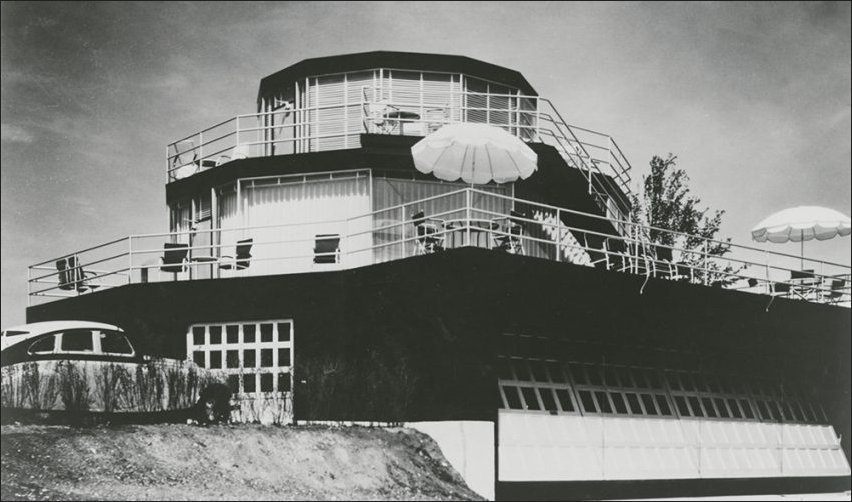
The House of Tomorrow featured attached garages for the family car, and for a small airplane. (Photo: Hedrich-Blessing, Chicago History Museum) via Indiana Landmarks
The attached garage — also an innovation — used a door that rose at the push of a button. Keck's design included one element that remains futuristic — an airplane hangar — also with a push button door — for the small family airplane Keck envisioned every family would own in the future.
"The House of Tomorrow…is one of the true early monuments of American modernism, brimming over with a uniquely American idealism and earnestness about the twentieth century. George Fred Keck was…interested in casting his net wide and demonstrating how future architecture would present new ideas about technology, about space, about materials. He put all of this together into a whole that is truly one of a kind," says noted architecture critic Paul Goldberger, a contributing editor at Vanity Fair. When the fair closed, Chicago developer Robert Bartlett used barges and trucks to ship the House of Tomorrow (along with other Century of Progress structures) to Beverly Shores, Indiana, a town he was attempting to develop as a vacation destination for Chicagoans. Very few structures remain from the 1933-34 fair, which makes the five exhibit houses in Indiana, including the House of Tomorrow, even more important. The exhibit houses were sold and remained in private hands until the land became part of the Indiana Dunes National Lakeshore, a unit of the National Park Service in the 1960s.
Saving the House of Tomorrow
Indiana Landmarks is raising money to fully restore the House of Tomorrow, which we are leasing from the National Park Service. We'll sublease the completed home, made handicapped accessible, for residential use. The National Park Service is facing a maintenance backlog of approximately $12 billion, a situation that demands creative new approaches to maintaining cultural resources in the nation's parks. "The lease between Indiana Landmarks and the National Park Service will allow the House of Tomorrow to be restored, and will also serve as a national model for the preservation of thousands of important historic National Park Service buildings throughout the nation," Brown noted. "Our goal is to preserve this outstanding building and raise awareness and appreciation of the House of Tomorrow, the architect George Fred Keck, and the Century of Progress, both regionally and nationally, and to raise the money to make this possible" says Marsh Davis, president of Indiana Landmarks. The restoration is expected to cost $2 million. "To guide us through the restoration design process, we have enlisted the services of Chicago architect and former Indiana Landmarks board member Bill Latoza. Although the timetable will depend on fundraising, we hope to get the restoration underway by spring 2017," Davis said.
"By declaring it a National Treasure, we have the opportunity to save the House of Tomorrow while also honoring its legacy of innovation," Brown added. The organization has bestowed the National Treasure designation on just over 80 historic places. The House of Tomorrow is the first National Treasure in Indiana. The National Treasure designation will raise the profile of the House of Tomorrow and connect us to the Trust's national network of people who are passionate about Modernist architecture. The Trust brings experience stewarding Modernist masterpieces that used experimental design and construction methods, including the Farnsworth House in Plano, Illinois, and the Glass House in New Canaan, Connecticut. The restoration will benefit from the National Trust's H.O.P.E. Crew, which trains young people in preservation crafts while helping to protect historic cultural sites on public lands throughout the United States. "We'll need lots of help to restore the House of Tomorrow, a Chicago landmark that happens to live in Indiana," says Indiana Landmarks' President Marsh Davis. You can donate to the restoration project here.
For more pictures and interior views visit : sebastiaankaal
8th July, 1933 - The Boston Redskins

Original 1933 Redskins Logo - image sourced from The New York Times
When the newly formed Boston Redskins traveled to Chicago's Soldier Field to play the Bears on Oct. 1, 1933, the visiting players were barely recognizable. The owner, George Preston Marshall, ordered team members to smear themselves with face paint before going out onto the field. His was the first pro-sports team to co-opt an American Indian identity with such fervor: The Redskins' halftime band marched in tribal regalia; the coach wore feathers on the sideline; and Marshall had an Indian-head logo printed across the center of their uniforms. Interest in American Indian culture spiked in the 1930s, says Sherry L. Smith, a historian at Southern Methodist University, but Indian iconography was already widely used. From 1859 until 1909, U.S. pennies showed an Indian face in profile, with a feathered headdress and a straight nose; Indian gold pieces and buffalo nickels with less-European-looking faces followed. The Redskins logo resembled these designs. In sports, the Indian head conjured the perceived athleticism of American Indians. The scholar Ellen J. Staurowsky cites an 1897 article from The Sporting Life about a Penobscot batter on the Cleveland team, headlined, "Indian in ball: The race has a natural inclination for sphere games."
Indian sports logos and nicknames may also have harked back to the Indian-only boarding schools, which excelled at collegiate sports. The Carlisle School's football team, the Indians, was among the best in the nation. When Carlisle closed down in 1918, other (non-Indian) college programs were more inclined to use Indian names and symbols. The costumed Chief Illiniwek mascot at the University of Illinois debuted at a football game in 1926. Baseball teams began using Indian logos a few years earlier. The National League's Boston team (now in Atlanta) took the name Braves in 1912, along with a classic Indian-head image. The Cleveland Naps became the Indians in 1915, and in the late 1920s were decorating their uniforms with an Indian head. It was another two decades before explicitly demeaning imagery replaced the stately profile. The legendary baseball promoter Bill Veeck became an owner of the Cleveland Indians in 1946, and commissioned a new, cartoonish design. The grinning, hook-nosed caricature, later known as Chief Wahoo, first appeared in 1947, the same year that Veeck desegregated the American league by signing the black star Larry Doby. Twenty-five years later, the Cleveland Indian Center sued the team for $9 million over the offensive depiction of a "smiling, dumb savage." "Our position is that we have no problem with the team being called the Cleveland Indians," a lawyer for the Center said. "It's Chief Wahoo that is the objection." (The case was settled out of court.) Some Indian-themed sports logos disappeared, but Cleveland players continue to wear Chief Wahoo uniforms, and the Redskins still use the Indian-head design.
Race Relations
J. Gordon Hylton, a historian and professor of law at Marquette University Law School, is the author of ''Before the Redskins Were the Redskins.'' Some baseball teams were using Indian nicknames as early as the 1850s. So why did it take so long for Indian-themed logos to catch on? Most professional baseball teams before the early 20th century didn't have official nicknames. The Braves were known as the Rustlers, and they were called the Doves at one point, and then the Pilgrims and the Red Stockings. So there wasn't a powerful incentive to figure out ways to represent them.
What made the Washington Redskins unusual? No one else felt like if they were going to use an Indian name, they would need to have Indian players. Marshall planned to use an Indian name as a way of marketing ''Indian football.'' Everyone else was just picking a name. It's well known that Marshall was an unapologetic racist. Oh, absolutely. Marshall would never have called his team the ''Negroes'' or the ''Coloreds.'' He also had this whole weird thing about the White Confederates and Indians being joined by some mystical bond. How did that affect his use of Indian iconography? Marshall wanted the images to be dignified. He thought that having the band dressed up as Indians and the cheerleaders wearing these Princess Minnehaha costumes was not a caricature, but was, in an odd sort of way, respectful.
Correction: 1st December, 2013
The Innovation column on Nov. 17, about the Washington Redskins logo, misspelled the name of the former costumed mascot at the University of Illinois. It is Chief Illiniwek, not Illiwinek.
8th July, 1933
The Name: The team moves to Fenway Park, home of the American League's Boston Red Sox, and "The Braves" become "The Redskins."
One of the NFL's oldest and most-storied franchises, the Washington Redskins were founded in 1932 as the Boston Braves. The team changed its name to the Redskins in 1933, and in 1937, the team relocated to Washington, D.C. and immediately won the first of its five World Championships. In addition to NFL Championship Game victories in 1937 and 1942, the Redskins have won three Super Bowls, culminating their 1982, 1987 and 1991 seasons with Super Bowl titles.
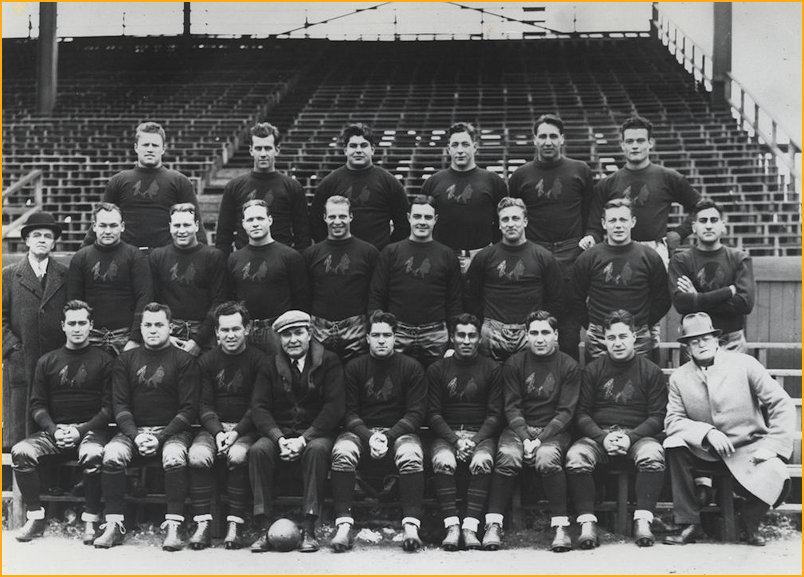
'The 1933 Boston Redskins - Pro Football Hall of Fame/The Boston Globe' - image and strapline sourced from The Boston Globe
It all started in Boston, more than eight decades ago.
- How did the 'Redskins' get their name, anyway? It started in Boston
- The NFL team eventually moved to Washington, D.C., in 1937, leaving the city behind.
By Steve Annear Globe Staff | Updated 13th July, 2020, 3:39 p.m.
In 1932, George Preston Marshall, owner of a laundry chain in Washington, D.C., became part owner of what was then known as the Boston Braves, a National Football League team with the same name as the city's second baseball team at the time. A year later, Marshall changed the name from the Braves to the Redskins, when he moved the team from Braves Field to a new location in the city. "Marshall moved across town to Fenway Park and he wanted to have a kinship with the Boston Red Sox," Mike Richman, a Redskins historian, said in a short clip about the team's history on the franchise's website. "And as well, he wanted to maintain the Native American theme that he had with the Braves, so he chose the Redskins."
"FOOTBALL BRAVES BECOME REDSKINS," read a 1933 Globe headline about the switch. The article that accompanied the announcement said going from the Braves to the Redskins was "rather appropriate," since the team had also "signed up a number of Indian players." According to ESPN, the team has long contended it was named in honor of Marshall's head coach, William Henry "Lone Star" Dietz, who was believed to be Native American. But the Associated Press reported in 1933 that Marshall said the change was "absolutely necessary" because "so much confusion has been caused by our football team wearing the same name as the Boston National League baseball club."
"The fact that we have in our head coach, Lone Star Dietz, an Indian, together with several Indian players, has not, as may be suspected, inspired me to select the name Redskins," he reportedly said. Richard Johnson, curator of the TD Garden's Sports Museum, once told the Globe that the move from Braves Field was actually more of a push than a conscious swap. "Marshall, by all accounts, was a real pain," Johnson said. "His partners bailed on him after that first year, and he was asked to leave. It would make no sense to leave [Braves Field] of his own volition. It wouldn't pay to move."
Richman — the unofficial historian and author of three books about the team — said in a telephone interview that the move also likely had to do with problems with the lease at Braves Field. According to a Globe article from 2006, in all, the team had "five turbulent seasons" here, which were described as both somewhat forgettable and at times disappointing. In their final season in Boston, the Redskins earned a spot in the championship against the Green Bay Packers after snuffing out the Pirates in a 30-0 game on Nov. 29 and then beating the New York Giants at the Polo Grounds about a week later.
But Marshall requested to have the championship game moved out of Boston, and instead played in New York, an apparent dig at a city that he felt didn't always give him adequate coverage or the attention he'd desired. (Marshall maintained he did it for the players' sake, and because of Boston's fickle weather). "You know how it is in Boston this time of year," he said, later adding, "We certainly don't owe Boston much after the shabby treatment we've received." Richman noted that the entire stretch of the team's time in Boston received scant media coverage and often attracted small crowds. "Boston being a college town, it was all of the college teams that were getting the really big coverage," he said. "To spite the Boston fans, he had the game played in the Polo Grounds in New York, which drew a pretty good crowd." In the end, the team lost the championship game against the Packers, 21-6, and then, just a few days later, the Redskins were packing up.
In December of 1936, Marshall announced he was moving the team to Washington for the following season, leaving the area in a "huff," according to a Globe story from 2013 that detailed the team's journey from New England to the nation's capital. It was evident that Marshall — the last NFL owner to include a Black player on his roster — had felt that Boston fans and newspapers snubbed his team from the get-go, a resentment he seemed to hold onto long after he fled the area with his ball in hand. "I moved my team to Washington because the Boston papers gave girls' field hockey more space than the Redskins," Marshall said in 1953, a claim that the Globe at the time said was one of Marshall's favorite "quips" about leaving. And perhaps Marshall, who died in 1969, wasn't entirely wrong. After he made the announcement that the team would be relocating, according to Globe archives, there was little note of their departure from sportswriters of that era.
"...Save for a few paragraphs deep into the paper."

Washington Redskins merchandise is seen for sale at a sports store in Fairfax, Virginia. - image sourced from AFP as seen on nst.com
WASHINGTON: The Washington Redskins confirmed on Monday the team is changing its name following pressure from sponsors over a word widely criticised as a racist slur against Native Americans. Washington announced on July 3 that the Redskins name had been placed under review after a wave of rallies against racial injustice swept across the United States following George Floyd's death on May 25. "Today, we are announcing we will be retiring the Redskins name and logo upon completion of this review," the NFL team said in a statement. A replacement name was still being worked upon, the statement added.
Washington owner Dan Snyder had long resisted calls to change the team's name but faced mounting demands to rethink that position as protests erupted against systemic racism after the death of Floyd, an unarmed African-American man, during his arrest by police in Minneapolis. Native American leaders had written to the NFL commissioner Roger Goodell last week demanding an immediate change of the team's name, logo and mascot. Washington's announcement was applauded by Ray Halbritter, an Oneida Nation representative and head of the "Change the Mascot" campaign. "The NFL and Dan Snyder have finally made the right call and Change the Mascot commends them for it," Halbritter said in a statement. "This is a good decision for the country ... it closes a painful chapter of denigration and disrespect toward Native Americans and other people of colour." US lawmaker Deb Haaland, one of the few members of Congress who identifies as Native American, also saluted the move. "About time," Haaland wrote. "It shouldn't take a huge social movement & pressure from corporate sponsors to do the right thing, but I'm glad this is happening." Intense pressure from the team's most powerful corporate partners are widely believed to have forced the Washington move. FedEx, which purchased the naming rights to the team's stadium through 2025 for US$205 million, confirmed earlier this month it had requested the change. "We believe it is time for a change," PepsiCo had also said, while Nike removed the team's merchandise and gear from its website. Bank of America said as a sponsor, it had "encouraged the team to change the name." Goodell had also lobbied the team behind the scenes to consider a name change, according to reports.
The team was established in 1932 as the Boston Braves and took on its current name in 1933 before moving to the US capital four years later. Until now, Snyder had emphatically rejected requests to drop the Redskins tag. "We'll never change the name," he told USA Today in 2013. "It's that simple. NEVER – you can use caps." President Donald Trump meanwhile had criticised Washington's announcement that the team name was under review. "They name teams out of STRENGTH, not weakness, but now the Washington Redskins & Cleveland Indians, two fabled sports franchises, look like they are going to be changing their names in order to be politically correct," Trump tweeted last week.
Washington's statement on Monday said Snyder and head coach Ron Rivera were "working closely to develop a new name and design approach that will enhance the standing of our proud, tradition rich franchise and inspire our sponsors, fans and community for the next 100 years." The Washington Post reported that the team had a preferred choice for a replacement name, but were working through trademark issues surrounding the tag. Rivera, one of only a handful of minority head coaches in the NFL and also the son of an army officer, said earlier this month that he believed the new name should show respect to Native American culture while giving a nod to the US military. - AFP
The team has been under pressure to change its name, with sponsors threatening to cut advertising ties with Washington. - Image sourced from the Associated Press (AP)
I hope the 2020 recommendations and artwork still represent the Native American Indian ethos.
27th July, 1933 - The Boots Company, Nottingham - D10 Factory Opens
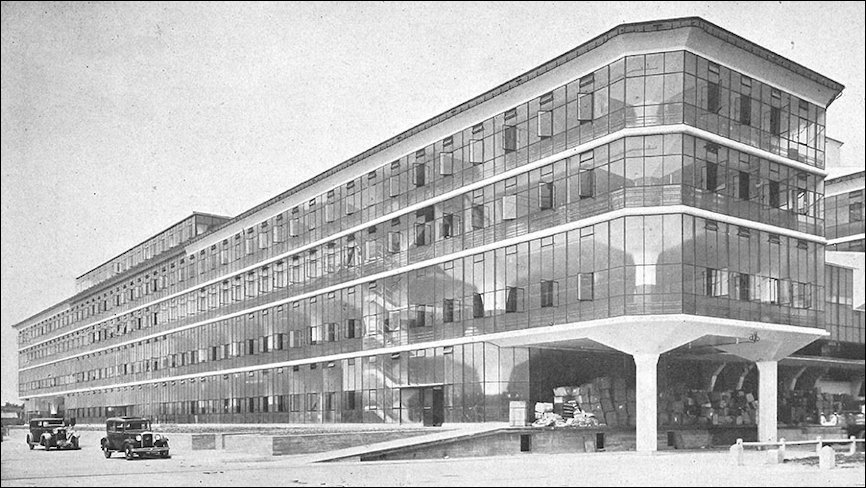
Image source & © of Architectural Record
The D10 factory on the Beeston site was hailed in the press as the ‘factory of Utopia’. Designed by the renowned engineer, Owen Williams, it was praised for its impressive size, functional design and innovative features. The factory epitomised the scientific credentials of the company, where modern equipment brought efficiencies in production and improvements to working conditions. The 1000th Boots store opened in Galashiels, Scotland. The company came back into British ownership. Source : Boots UK.com
14th August 1933 - The Origins of 'Soap' Dramas
And we all know I love 'Soaps' especially 'Peyton Place' and 'Falcon Crest'!
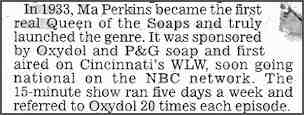
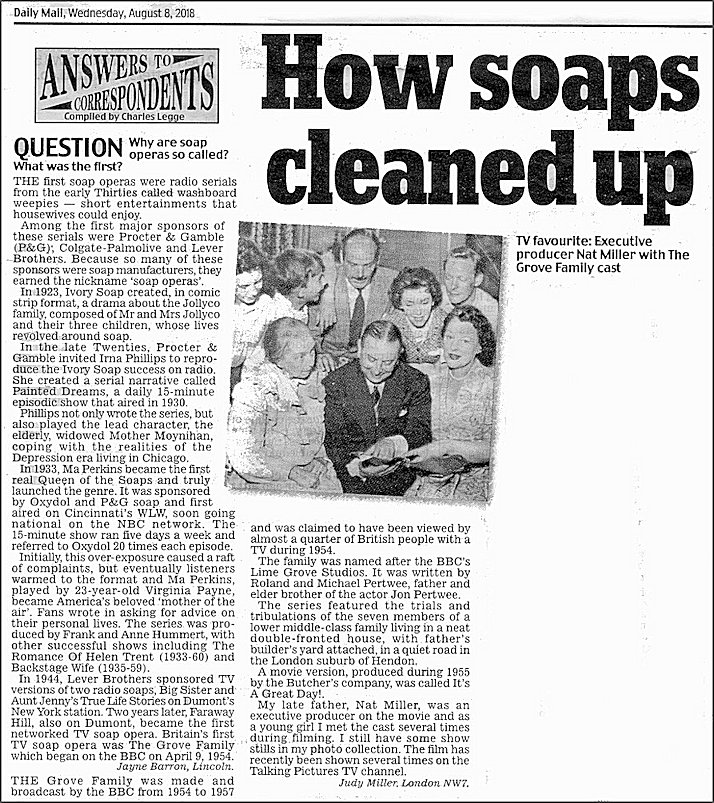
Sourced from the Daily Mail dated 8th August 2018

Soap Opera (1933 - 60)
Virginia Payne, star of Ma Perkins - One of the biggest, and probably the longest, radio dramas ever to be broadcast, Ma Perkins paved the way for modern soap operas. Ma Perkins, played for 27 years by Virginia Payne who was only 23 years old when she started, was the woman's answer to Just Plain Bill. Ma Perkins was the owner and manager of a lumber yard in Rushville Center, which had a population of just 4,000. The show revolved around Ma Perkins, her three children, Evey, John and Fay, and their children.
Murrat Forbes Evey is a superficial woman whose only goal is to become the head of the 'crème de la crème' group of the community, the Jolly Seventeen. Even though her shrewd persona gave off a snobbish aura about her, Evey has one saving grace is her warm and kind heart. Evey is married to Willy Fitz, who's always coming up with John Perkins was only on the show shortly because, unfortunately, he was killed in World War II and was buried "somewhere in Germany in an unmarked grave." Ma's darling was Fay, a miniature version of her mother. Fay was the victim of love and was said to be "thoroughly at the mercy of her emotions." Fay went through many love affairs, one ending tragically as her husband was killed in 1940, less than a year after their marriage. Virginia Payne, Ma Perkins. The lumber yard's co-owner, Shuffle Shuber, was in many ways like Ma Perkins. He was very up front about his feelings and was true to the human spirit. His keen way of looking past deceitful actions overshadowed his inability to be glib, like Ma Perkins. He and Ma would usually sit on Ma's porch and talk, sentimentally, about the world around them and their loved ones. Even though they didn't solve any of their problems by talking about them, they departed with an ease in their hearts that allowed them to bear those problems.
By the end of the shows run, it was already being broadcast around America, including Hawaii, and throughout Europe on Radio Luxembourg. For more popular soap opera dramas, see also Hearts in Harmony, Mary Noble, Backstage Wife, and Young Widder Brown. This collection is in the extensive Hummert Radio Factory Collection. Called the parents of soap opera, Anne and Frank Hummert also created Betty and Bob, Front Page Farrell, Mr. Keen Tracer of Lost Persons, Ma Perkins, Just Plain Bill, Mary Noble Backstage Wife, Young Widder Brown, Mr. Chameleon, Stella Dallas, Manhattan Merry Go Round, Lora Lawton, The American Melody Hour, Hearthstone of the Death Squad, Lorenzo Jones, Nona From Nowhere, Our Gal Sunday, Inspector Thorne, Romance of Helen Trent, and more. Source & dialogue © : Old Time Radio Catalog
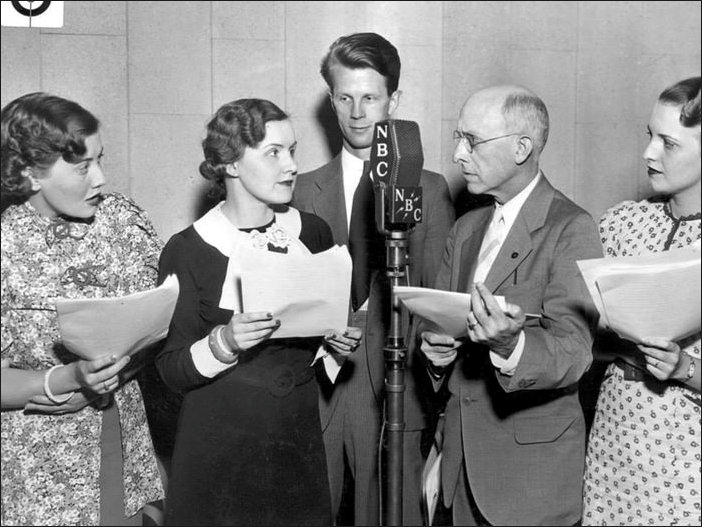
"Ma Perkins (sometimes called Oxydol's Own Ma Perkins) is an American radio soap opera which was heard on NBC from 1933 to 1949 and on CBS from 1942 to 1960. Between 1942 and 1949, the show was heard simultaneously on both networks. Oxydol dropped its sponsorship in 1956. The series was produced by Frank and Anne Hummert with scripts by Robert Hardy Andrews, Orvin Tovrov and others. Ma Perkins began August 14, 1933 on WLW in Cincinnati. On December 4 of that year, it graduated to the NBC Red network. On NBC and CBS the series ran for a total of 7,065 episodes. "America's mother of the air" was portrayed by actress Virginia Payne, who began the role at the age of 23 and never missed a performance during the program's 27-year run. Kindly, trusting widow Ma Perkins had a big heart and a great love of humanity. She always offered her homespun philosophy to troubled souls in need of advice. Ma owned and operated a lumber yard in the small Southern town of Rushville Center (population 4000), where the plot lines pivoted around her interactions with the local townsfolk and the ongoing dilemmas of her three children, Evey, Fay and John. One of her children died during World War II. Ma's daughter Fay was played by Isabelle Krehbiel and Rita Ascot. Gilbert Faust had the role of John. Evey Perkins was played by Dora Johnson, Laurette Fillbrandt and Kay Campbell, who later became known for playing Grandma Kate Martin on the television soap opera All My Children. Shuffle Shober, Ma's best friend, was played by Charles Egelston (and later Edwin Wolfe). Murray Forbes (1905-1987) was heard as Willie Fitz, and Cecil Roy portrayed Junior Fitz. When the show finally ended on Friday, November 25th, 1960, the day after Thanksgiving Day, it was one of only eight entertainment shows still on the CBS radio network. The last episode was the only one in which Virginia Payne's name was mentioned, by Payne herself in a farewell speech. In all other episodes, the announcer at the close of the show would run down the names of all the actors in the cast (but one), and then say, "... and Ma Perkins."- WikiPedia" : Narrative and image (via OTRCAT) of the cast sourced from : Old Time Radio
19th October, 1933 - Germany announces withdrawal from League of Nations
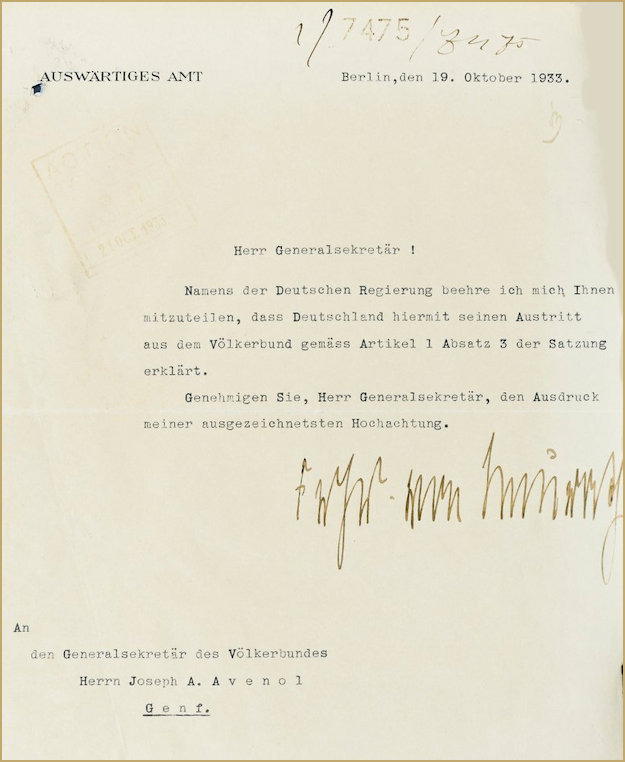
Withdrawal of Germany from the League of Nations. Letter from Konstantin von Neurath - Image sourced from : wdl.org
In October 1933, some nine months after Adolf Hitler was appointed chancellor of Germany, the German government announced its withdrawal from the League of Nations. The ostensible reason was the refusal of the Western powers to acquiesce in Germany’s demands for military parity. With this curt letter, dated October 19, 1933, Foreign Minister Konstantin Freiherr von Neurath informed the League of Nations secretary-general, Joseph Avenol, of Germany’s withdrawal. Germany’s departure from the international organization was followed by its massive military buildup, undertaken in violation of international agreements; renunciation of the Locarno Pact (1936); seizure of Austria (1938); and annexation of the Czechoslovak provinces of Bohemia and Moravia (March 1939). These actions culminated in the German attack on Poland of September 1, 1939, and the outbreak of World War II. The letter is from the archives of the League of Nations, which are preserved at the United Nations Office in Geneva. They were inscribed on the UNESCO Memory of the World register in 2010. Source : wdl.org
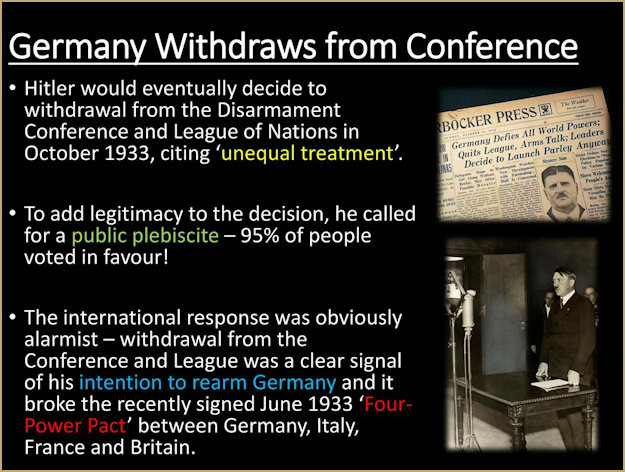
Image sourced from : slideplayer.com
1926 Under Stresemann's guidance, the government called off the strike, persuaded the French to leave the Ruhr and even got the rest of the world to allow Germany to join the League of Nations in 1926.
In October 1933, some nine months after Adolf Hitler was appointed chancellor of Germany, the German government announced its withdrawal from the League of Nations. The ostensible reason was the refusal of the Western powers to acquiesce in Germany's demands for military parity." Hitler ordered the German delegates to leave the Disarmament Conference in Geneva, and he withdrew from the League of Nations. He gave as his excuse the fact that Germany was already disarmed, while other countries were refusing to disarm.
24th November 1933 - Fred Astaire's first Film
What was it they said about Fred? '
'Can’t Act; Slightly Bald; Can Dance a Little'
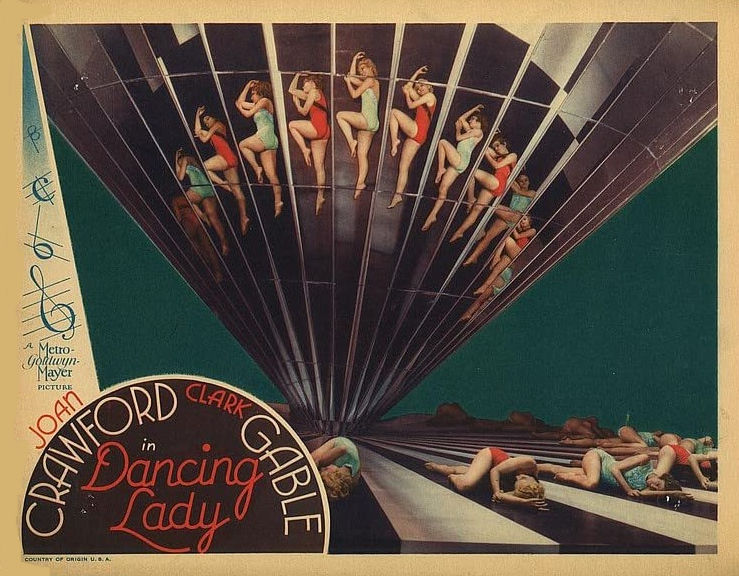
Imaginative Lobby Card Design featuring only the Chorus - image sourced from IMDB with thanks
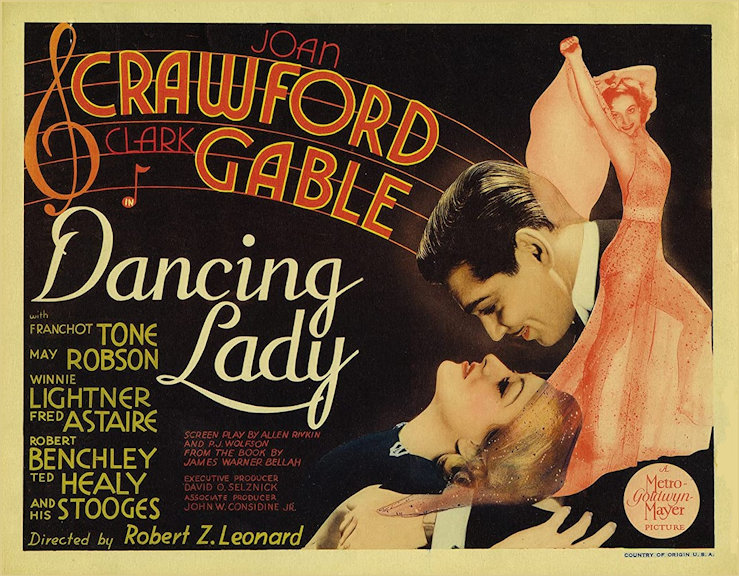
Lobby Card for Dancing Lady showing Joan Crawford and Clark Gable and listing the supporting cast including Fred Astaire - image sourced from IMDB with thanks
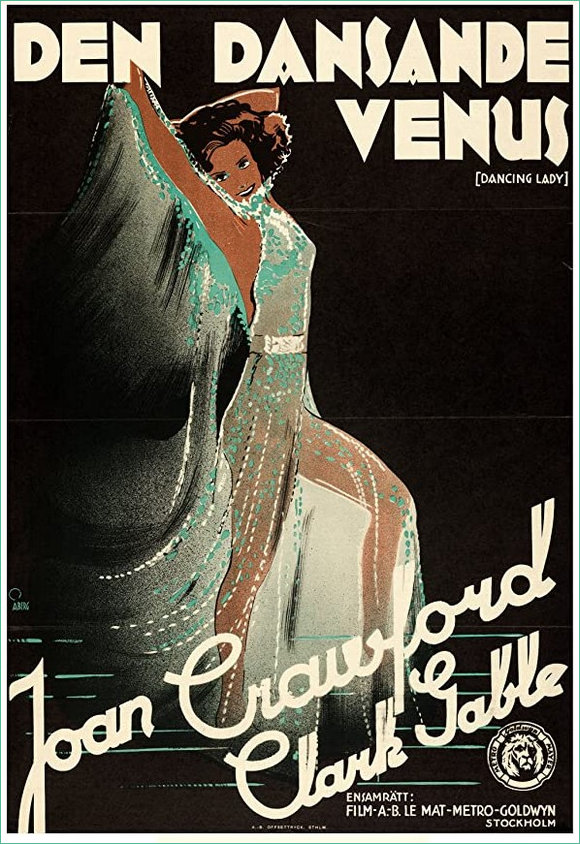
I love what the Germans did with the basic design concentrating on the Dancing Lady - image sourced from IMDB with thanks
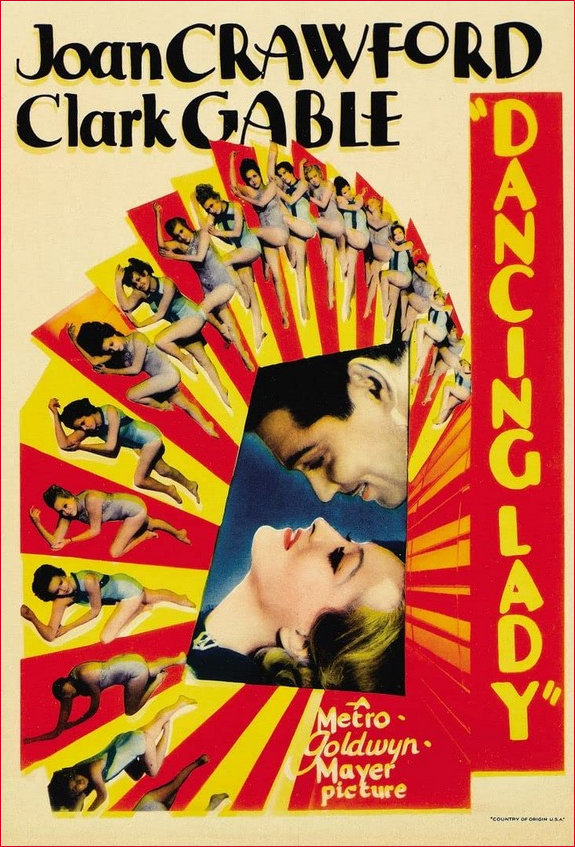
An interesting 'Oriental' spin on this poster using the fan effect to good use again but the colours are a little garish (for my liking anyway) - image sourced from IMDB with thanks
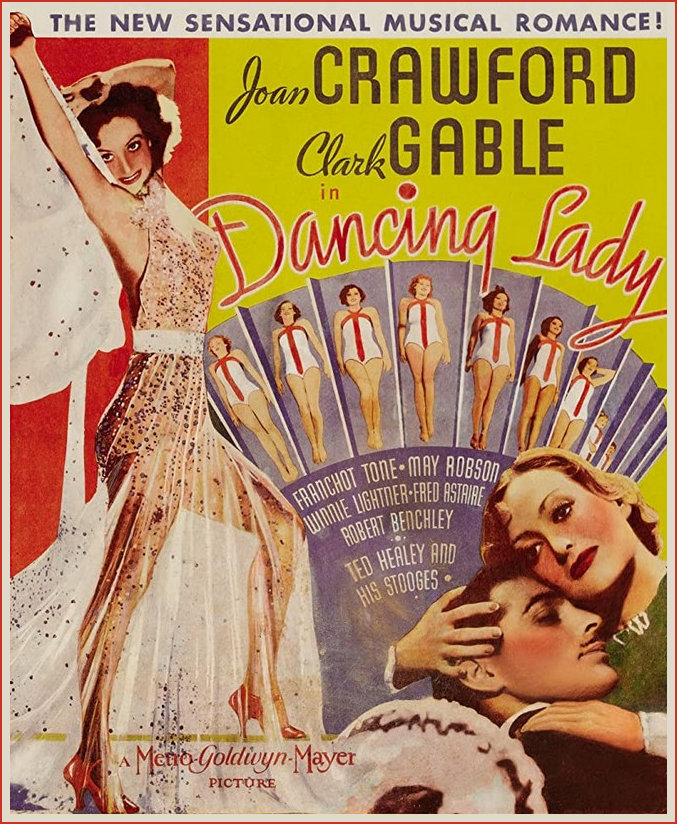
This poster has it all the Dancing Lady herself, the chorus line, the fan enhancement, MGM, Crawford and Gable and the supporting cast including Fred Astaire's first cinematic appearance - image sourced from IMDB with thanks
8th December 1933 - Marie-Bernarde (Bernadette) Soubirous canonised
One of the most popular, enduring and well-known saints of the 20th century.
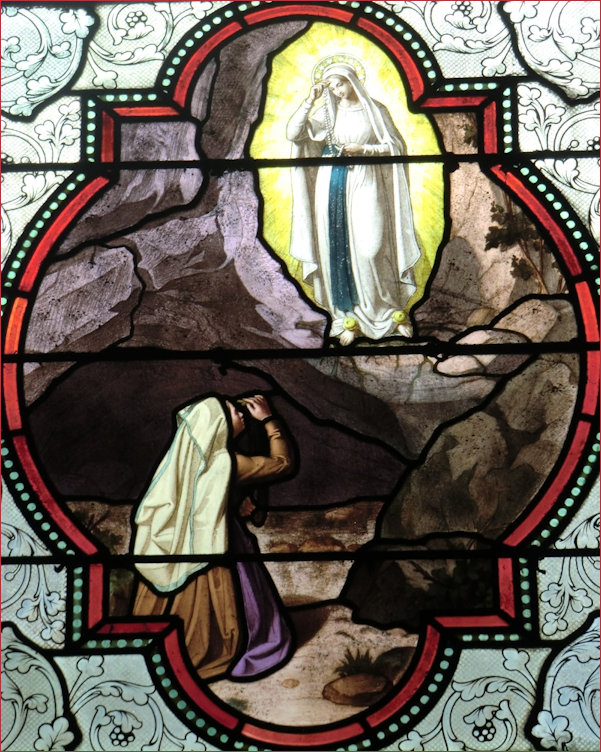
Our Lady says the Rosary with St Bernadette - one of a series of stained glass windows in the Immaculate Conception (Upper) Basilica of Lourdes recounts the apparitions of Our Lady to St Bernadette in 1858. - image courtesy of Father Lawrence Lew on Flickr.
St. Bernadette was born in Lourdes, France on January 7, 1844. Her parents were very poor and she was the first of nine children. She was baptized at St. Pierre's, the local parish church, on January 9. As a toddler, Bernadette contracted cholera and suffered extreme asthma. Unfortunately, she lived the rest of her life in poor health. On Thursday, February 11, 1858, fourteen-year-old Bernadette was sent with her younger sister and a friend to gather firewood, when a very beautiful lady appeared to her above a rose bush in a grotto called Massabielle (Tuta de Massavielha). The woman wore blue and white and smiled at Bernadette before making the sign of the cross with a rosary of ivory and gold. Bernadette fell to her knees, took out her own rosary and began to pray. Bernadette later described the woman as "uo petito damizelo," meaning "a small young lady. Though her sister and friend claimed they were unable to see her, Bernadette knew what she saw was real. Three days later, Bernadette, her sister Marie, and other girls returned to the grotto, where Bernadette immediately knelt, saying she could see "aquero" again. She fell into a trance and one girl threw holy water at the niche and another threw a rock that shattered on the ground. It was then that the apparition disappeared.
On February 18, Bernadette said "the vision" asked her to return to the grotto each day for a fortnight. With each visit, Bernadette saw the Virgin Mary and the period of daily visions became known as "la Quinzaine sacrée," meaning "holy fortnight." When Bernadette began to visit the grotto, her parents were embarrassed and attempted to stop her, but were unable to do so. On February 25, Bernadette claimed to have had a life-changing vision. The vision had told her "to drink of the water of the spring, to wash in it and to eat the herb that grew there" as an act of penance. The next day, the grotto's muddy waters had been cleared and fresh clear water flowed. On March 2, at the thirteenth of the apparitions, Bernadette told her family the lady said "a chapel should be built and a procession formed." During her sixteenth vision, which Bernadette claims to have experienced for over an hour, was on March 25. Bernadette claimed she had asked the woman her name, but her question was only met with a smile. Bernadette asked again, three more times, and finally the woman said, "I am the Immaculate Conception." Though many townspeople believed she had indeed been seeing the Holy Virgin, Bernadette's story created a division in her town. Many believed she was telling the truth, while others believed she had a mental illness and demanded she be put in a mental asylum. Some believed Bernadette's visions meant she needed to pray for penance. Church authorities and the French government rigorously interviewed the girl, and by 1862 they confirmed she spoke truth. Since Bernadette first caused the spring to produce clean water, 69 cures have been verified by the Lourdes Medical Bureau, and after what the Church claimed were "extremely rigorous scientific and medical examinations," no one was able to explain what caused the cures. The Lourdes Commission that initially examined Bernadette, ran an analysis on the water but were only able to determine it contained a high mineral content. Bernadette believed it was faith and prayer that was responsible for curing the sick. Bernadette asked the local priest to build a chapel at the site of her visions and the Sanctuary of Our Lady of Lourdes is now one of the major Catholic pilgrimage sites in the world. Many other chapels and churches has been built around it, including the Basilica of St. Pius X, which can accommodate 25,000 people and was dedicated by the future Pope John XXIII when he was the Papal Nuncio to France.
Following the miracles and constructions, Bernadette decided she did not like the attention she was getting and went to the hospice school run by the Sisters of Charity of Nevers, where she was taught to read and write. Though she considered joining the Carmelites, her health was too fragile. On July 29, 1866, Bernadette took the religious habit of a postulant and joined the Sisters of Charity at their mother house at Nevers. Her Mistress of Novices was Sister Marie Therese Vauzou and the Mother Superior at the time named her Marie-Bernarde, in honor of her grandmother. Bernadette spent the rest of her life there working as an infirmary assistant, and later a sacristan. People admired her humility and spirit of sacrifice. Once a nun asked her if she had temptations of pride because she was favored by the Blessed Mother. "How can I?" she answered quickly. "The Blessed Virgin chose me only because I was the most ignorant." Unfortunately, she was diagnosed with tuberculosis of the bone in her right knee and was unable to take part in convent life. She died in the Sainte Croix (Holy Cross) Infirmary of the Convent of Saint-Gildard at the age of 35 on April 16, 1879, while praying the holy rosary. Even on her deathbed Bernadette suffered severe pain and, keeping with the Virgin Mary's admonition of "Penance, Penance, Penance," she proclaimed "all this is good for Heaven!" Bernadette's last words were, "Blessed Mary, Mother of God, pray for me. A poor sinner, a poor sinner." The nuns of Saint-Gildard, with the support of the bishop of Nevers, applied to the civil authorities for permission to bury Bernadette's body in a small chapel dedicated to Saint Joseph, which was within the confines of the convent. Permission was granted on April 25, 1879, and on April 30, the local Prefect pronounced his approval of the choice of the site for burial. On May 30, 1879, Bernadette's coffin was transferred to the crypt of the chapel of Saint Joseph, where a very simple ceremony was held to commemorate the event. Thirty years layer, on September 22, two doctors and a sister of the community exhumed her body. They claimed the crucifix and rosary she carried had been oxidized but her body remained incorrupt. The incorruption was cited as one of the miracles supporting her canonization. The group washed and redressed Bernadette's body then buried it in a new double casket. The Church exhumed her body again on April 3, 1919, and the doctor who examined her said, "The body is practically mummified, covered with patches of mildew and quite a notable layer of salts, which appear to be calcium salts ... The skin has disappeared in some places, but it is still present on most parts of the body."
In 1925, Bernadette's body was exhumed yet again. This time relics were sent to Rome and an imprint of her face was molded, which was used to create a wax mask to be placed on her body. There were also imprints of her hands to be used for the presentation of her body, which was placed in a gold and crystal reliquary in the Chapel of Saint Bernadette at the mother house in Nevers. In 1928, Doctor Comte published a report on Bernadette's exhumation in the second issue of the Bulletin de I'Association medicale de Notre-Dame de Lourdes, where he wrote: "I would have liked to open the left side of the thorax to take the ribs as relics and then remove the heart which I am certain must have survived. However, as the trunk was slightly supported on the left arm, it would have been rather difficult to try and get at the heart without doing too much noticeable damage. "As the Mother Superior had expressed a desire for the Saint's heart to be kept together with the whole body, and as Monsignor the Bishop did not insist, I gave up the idea of opening the left-hand side of the thorax and contented myself with removing the two right ribs which were more accessible. "What struck me during this examination, of course, was the state of perfect preservation of the skeleton, the fibrous tissues of the muscles (still supple and firm), of the ligaments, and of the skin, and above all the totally unexpected state of the liver after 46 years. One would have thought that this organ, which is basically soft and inclined to crumble, would have decomposed very rapidly or would have hardened to a chalky consistency. Yet, when it was cut it was soft and almost normal in consistency. I pointed this out to those present, remarking that this did not seem to be a natural phenomenon." Saint Bernadette is often depicted in prayer with a rosary or appealing to the Holy Virgin. She was beatified in 1925 and canonized by Pope Piuis XI in December 1933. Saint Bernadette is the patroness of illness, people ridiculed for their piety, poverty, shepherds, shepherdesses, and Lourdes, France. - Sourced from Catholic.org | Read more : Roman Catholic Saints | Bernadette of Lourdes
Saint Bernadette Soubirous
Following the events of the apparitions, a papal investigation was founded. After long deliberation and careful examination of the evidence, it was declared that the visions of the Virgin Mary really did occur at the Grotto of Lourdes. She received Beatification in 1925 and Canonization in 1933 under Pope Pius XI, not so much for the content of her visions, but rather for her simplicity and holiness of her life. St Bernadette is the patron saint of sick persons and also of the family and poverty. 30 years after her death, Bernadette’s body was exhumed and found to be intact. Since 1925, the body of Bernadette is preserved in a shrine in the chapel of the Convent of St.Gildard of Nevers. Source : Biography on-line
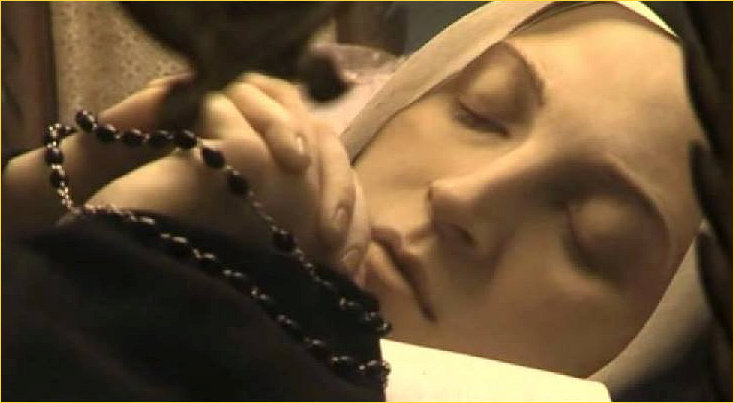
The uncorrupted face of St. Bernadette - image courtesy of dnevno.hr
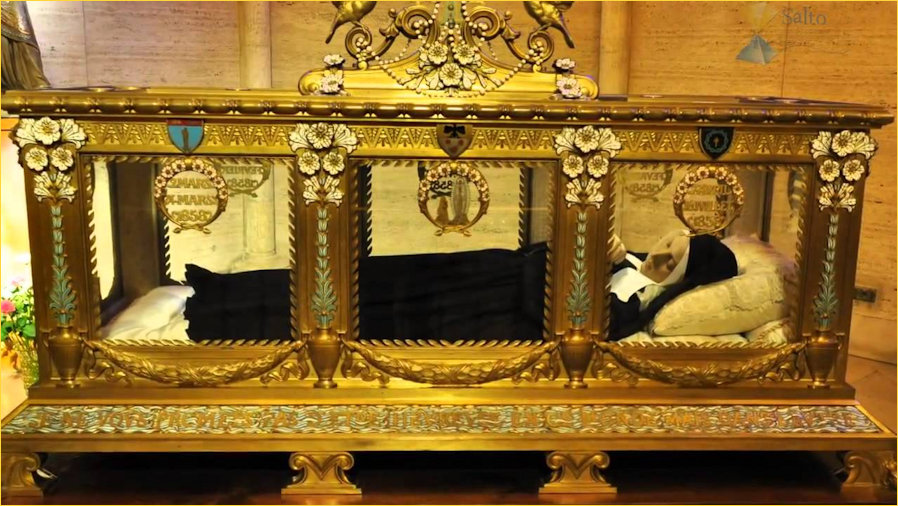
Catafalque of St. Bernadette - image sourced from YouTube (content removed)
17th December 1933 - Death of Thubten Gyatso, the 13th Dalai Lama
Thubten Gyatso was the 13th Dalai Lama of Tibet. In 1878 he was recognized as the reincarnation of the Dalai Lama.
Born: 12 February 1876, Ü-Tsang
Died: 17 December 1933, Lhasa, Lhasa, China
Place of burial: Potala Palace, Lhasa, China
Reincarnation: Trinley Gyatso
Successor: 14th Dalai Lama
Period in office: 31 July 1879 – 17 December 1933 - Source Wikipedia
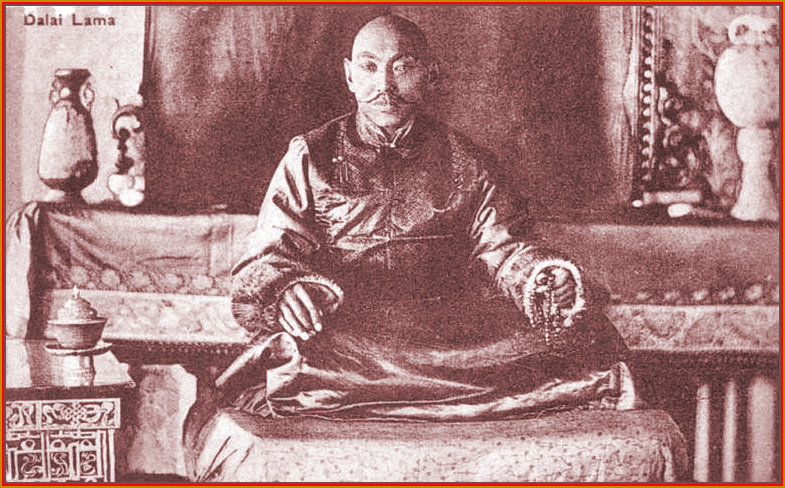
Thubten Gyatso, the 13th Dalai Lama of Tibet - image sourced from Wikimedia
Extract from the Treasury of Lives website :
When the Twelfth Dalai Lama, Trinle Gyatso (ta la'i bla ma 13 'phrin la rgya mtsho, 1856-1875) died at the young age of twenty in 1875, his face is said to have turned toward the south-east, which was taken as a sign that the new incarnation would be born in that direction. This was confirmed by the Nechung Oracle (nas chung), and by the Eighth Panchen Lama, Tenpai Wangchuk (paN chen 08 bstan pa'i dbang phyug, 1855-1882). According to Tibetan accounts, the Nechung Oracle was consulted three times. At the third consultation, the oracle gave precise details and foretold the names of the parents. The father's name would be Kunga Rinchen (kun dga' rin chen) and the mother's name Lobzang Dolma (blo bzang sgrol ma). (Note: This is confirmed by His Holiness Lhamo Thondup, the (14th) Dalai Lama in his book 'My Spiritual Autobiography')
The boy who would soon be identified as the Thirteenth Dalai Lama was born on May 27, 1876. Many auspicious signs accompanied his birth. One year earlier, an earthquake had struck the Dakpo (dags po) area, and all the houses in the village where the Dalai Lama was born, Langdun (glang mdun), were destroyed or badly damaged. Only the house of the future Dalai Lama remained intact. At first this was seen as inauspicious, but a lama told the family that this was an auspicious sign. The boy's mother is said to have received many dreams prior to his birth indicating that he was the rebirth of the Dalai Lama, and other mystical signs are said to have appeared, such as a tree flowering out of season and rainbow lights in the sky. The newborn is said to have had a fair complexion and a parasol-like head, with shining black hair with a single strand of white hair in the center.
The Dalai Lama was formally enthroned on August first, 1879. His early childhood was spent in the Potala Palace during the winter seasons, and in the Norbulingka during the summer, surrounded by monk officials who had served the Twelfth Dalai Lama. When the Dalai Lama reached the age of six, his religious training began with the taking of getsul (dge tsul, novice) vows. The Regent, the Tenth Tatsak, was appointed as the Dalai Lama's senior tutor, even as he also continued to oversee the operation of the government. After the Regent's death in 1886, he was succeeded as Regent by the Ninth Demo, Ngawang Lobzang Trinle Rabgye (de mo 09 ngag dbang blo bzang 'phrin las rab rgyas, 1855-1900).
In 1933, on the thirteenth day of the tenth Tibetan month in the water-bird year, the Dalai Lama became ill and began to suffer from a bout of coughing. A day later, he lost his appetite and became short of breath. Despite his illness, for several days he continued with his duties, meeting his officials and monks. Natural calamities such as an earthquake in Kongpo, the destruction of Tsari (tsa ri) Monastery, which the Dalai Lama had visited, were taken as black omens that the Dalai Lama would not live long. Moreover, in the Western and Eastern Halls of the Potala Palace the sound of a woman weeping was heard, just as was reported at the time of the death of the Seventh Dalai Lama, Kelzang Gyatso (tA la'i bla ma 07 bskal bzang rgya mtsho, 1708-1757). One day an owl perched on the roof of Nechung Monastery hooted the sound ha ha ha continually for two nights. Then the crocodile shaped mouth of a gutter on the roof of Tsuklakhang began to drip water, and the source of the drip could not be located. The Dalai Lama's servants asked him what the meaning of these phenomena was. He replied that the portentous sound of the owl indicated that the time had come for him to depart his earthly existence. On thirtieth day of tenth Tibetan month, at midday, the Dalai Lama lay down on his bed feeling weak. At 7:30 that evening the Dalai Lama sat up and placed himself in a meditation posture, he closed his eyes and departed from earthly existence. When the golden reliquary was planned to entomb his body, it was agreed that the Thirteenth Dalai Lama's tomb should be the largest of the Dalai Lamas', just a fraction higher then that of the Fifth Dalai Lama.
(This essay was adapted from "The Thirteenth Dalai Lama, Thubten Gyatso" in Martin Brauen, ed. The Dalai Lamas: A Visual History. London: Serindia, pp. 137-161.) - Source and to read more visit treasuryoflives
1933 - The Aborigines Advancement League
The Australian Aborigines' League (AAL)
The Australian Aborigines' League (AAL) was founded in Melbourne in 1933 by an elderly Yorta man, William Cooper, and several other Aboriginal people, most of them exiles from Cumeragunja, a government reserve on the Murray River, who gathered in Fitzroy and other inner-city suburbs. They regarded the AAL as their organisation, and its constitution stipulated that only Aboriginal people could be full members and that they should mainly fill its administrative positions. Yet Cooper, as secretary, also relied on sympathetic non-Aboriginal activists like Helen Baillie and Arthur Burdeu, who became the president. Adopting a motto of 'A fair deal for the dark race', the AAL campaigned for the repeal of discriminatory legislation and for programs to 'uplift the aboriginal race'. In seeking equal rights and integration, however, its spokespersons expressed pride in being Aboriginal and some of their demands rested on an assertion of Aboriginality.
The League mostly focused on and reflected the needs of Aboriginal people in Melbourne and their kin on Victorian and New South Wales reserves but, unlike most other contemporary Aboriginal organisations, also projected itself as a national body representing all Aboriginal people. This is evident in a petition to King George V that Cooper had drawn up in 1933, which featured a call for representation in the Commonwealth Parliament. The petition was typical of the League's political methods: letters to political leaders, deputations to ministers, appeals to the public through public meetings and the press, and approaches to other pressure groups. But in the late 1930s, disheartened by government indifference, it adopted more dramatic means of publicising the Aboriginal plight, sanctioning a Day of Mourning to mark Australia's sesquicentenary and supporting a walk-off at Cumeragunja.
The League became defunct during World War II but was revived in 1944-45 by Cooper's protégé Doug Nicholls and by Bill Onus. In 1957 its role was largely assumed by a new organisation, the Aborigines Advancement League. Source : eMelbourne
The Petition
Petition to King George V
PETITION of the Aboriginal Inhabitants of Australia to His Majesty, King George V, by the Grace of God, of Great Britain, Ireland, and British Dominions beyond the seas, King; Defender of the Faith; Emperor of India.
TO THE KING’S MOST EXCELLENT MAJESTY, IN COUNCIL THE HUMBLE PETITION of the undersigned Aboriginal inhabitants of the Continent of Australia respectfully sheweth: —
THAT WHEREAS it was not only a moral duty, but a strict injunction, included in the commission issued to those who came to people Australia, that the original inhabitants and their heirs and successors should be adequately cared for;
AND WHEREAS the terms of the commission have not been adhered to in that —
(a) Our lands have been expropriated by Your Majesty’s Governments, and
(b) Legal status is denied to us by Your Majesty’s Governments;
AND WHEREAS all petitions made on our behalf to Your Majesty’s Governments have failed.
YOUR PETITIONERS humbly pray that Your Majesty will intervene on our behalf, and, through the instrument of Your Majesty’s Governments in the Commonwealth of Australia — will prevent the extinction of the Aboriginal race and give better conditions for all, granting us the power to propose a member of parliament, of our own blood or a white man known to have studied our needs and to be in sympathy with our race, to represent us in the Federal Parliament.
AND YOUR PETITIONERS WILL EVER PRAY. Source : indigenousrights.net
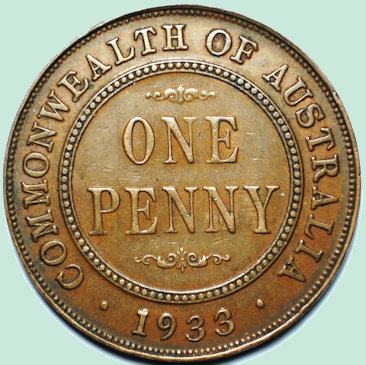
Image sourced from : tdkapdc.com.au
William Cooper 1861-1941 - A leader of leaders
In 1933, Cooper relocated to Melbourne with his third wife Sarah. While ostensibly a move to allow Cooper to claim the old age pension – denied to those living on Aboriginal reserves - a quiet retirement was not on the cards for the indefatigable 70-year-old. Cooper became a prominent figure among Melbourne's small Aboriginal community, which, from its base in the suburb of Fitzroy, was to emerge as a political force in the fight for Aboriginal rights in Victoria. One of Cooper's most famous campaigns was a petition to King George V. Its primary demand was for the right to propose a Member of Parliament who directly represented Aboriginal people. Between 1934 and 1937, Cooper obtained 1,814 signatures from around the country. Unfortunately, on a constitutional technicality, the Commonwealth Government refused to pass the petition to the King.
In 1936, Cooper, along with others, established the Australian Aborigines' League. In doing so he formalised the actions of a group of ex-Cummeragunja residents who had been working together for several years. It was the first advocacy organisation with an entirely Aboriginal membership and the predecessor to the Victorian Aborigines Advancement League, into which it was eventually incorporated. With Cooper as secretary, the League's approach was to use existing democratic channels to achieve positive outcomes for Indigenous Australians. Although success was limited, they did influence a decision by the Commonwealth Government in 1937 to hold a conference to discuss the formation of a national policy on Aborigines.
Cooper held an 'Aboriginal Day of Mourning' on 26 January 1938. It coincided the 150th anniversary of the landing of the First Fleet and raised awareness of what this meant for the Indigenous population. The day evolved into a National Aborigines Day, or Aboriginal Sunday, first observed in 1940 on the weekend before Australia Day. Today, the celebrations of NAIDOC Week have their roots in Cooper's original day of remembrance. Source/read more : vic.govt.au and naa.gov.au
I am grateful to the biography of Evonne Goolagong Cawley for bringing to my attention a momentous series of events coincidentally starting in 1933 and culminating in 1936, the two years from the 1930s I have chosen to showcase from the decade.
1933 - Escape from Nazi Germany
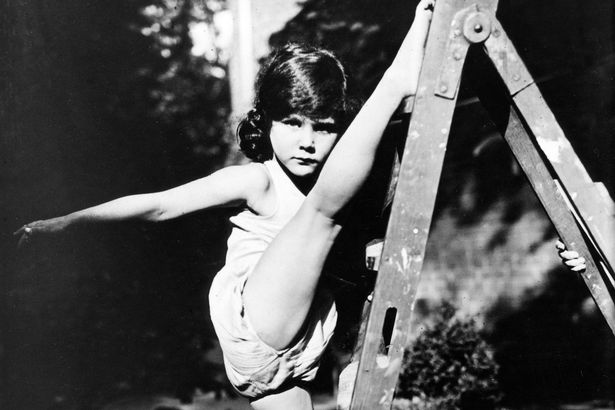
A young Judith Kerr, author of the 'Mog' series and most famously "When Hitler stole Pink Rabbit" - image courtesy & © of Getty
‘Judith Kerr ‘ was born on 14 June 1923 in Berlin but escaped from Hitler’s Germany with her parents and brother in 1933 when she was nine years old. Her father was a drama critic and a distinguished writer whose books were burned by the Nazis. The family passed through Switzerland and France before arriving finally in England in 1936. Judith went to eleven different schools, worked in the Red Cross during the war, and won a scholarship to the Central School of Arts and Crafts in 1945. Since then she has worked as an artist, a BBC television scriptwriter and, for the past thirty years, as author and illustrator of children’s books. Her three autobiographical novels are based on her early wandering years (which against all the odds she greatly enjoyed), her adolescence in London during the war, and finally on a brief return to Berlin as a young married woman. The stories have been internationally acclaimed and, to the author’s considerable satisfaction, have done particularly well in Germany where they are sometimes used as an easy introduction to a difficult period of Germany history. Judith has a daughter who is a designer and a son who is a novelist. She lives in London. Source : Harper Collins | Read more from the Hay Festival and the Mirror
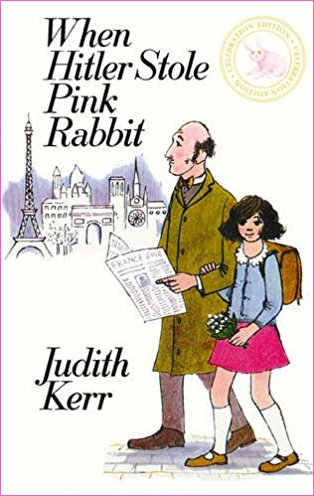

l to r 1971 first edition and the 2009 edition still being enjoyed by 21st century readers
Born in 1933
Sir Peter Mansfield

Image courtesy & © of Castle Rock Brewery
"I was born on 9th October 1933 in Lambeth, London, the youngest of three brothers. I grew up in Camberwell, ten minutes walk from Camberwell Green, the epicentre of the Borough. My father, Sidney George Mansfield was the eldest son in a family of five sons and four daughters. My father worked for the South Metropolitan Gas Company, as a gas fitter. My mother, Rose Lillian, was the youngest of three daughters. At the time of my birth she was not working, but looked after me and my two brothers, Conrad William, the eldest, and Sidney Albert." Extract sourced from Nobel Prize.org - full biography here
Ironically, remembering Sir Peter's date of birth in the 'Born on this Day' column, the Daily Mail has uncovered that when the 'former printer's assistant' had expressed an interest in science at school he had been told he "should consider a career in something less ambitious." It's a good job we don't always take advice given at school! I certainly would not have been where I am today if I had accepted the discouraging suggestion that I should repeat my 5th year at school and not bother with Further Education!
Henry 'Manolito' Darrow
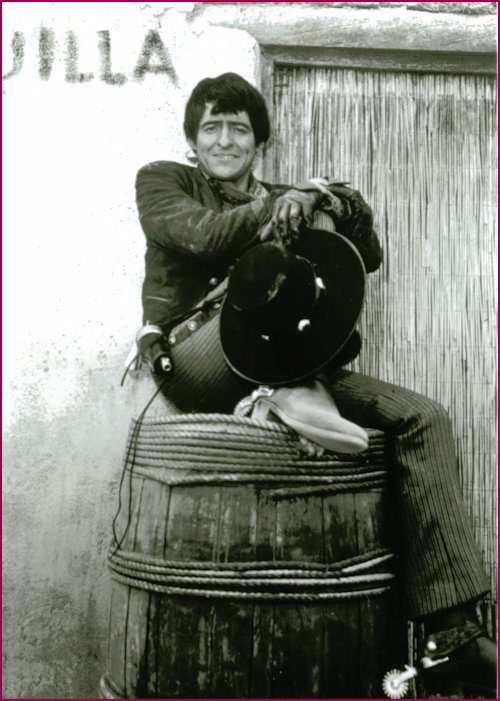
Cheeky Chappy on a barrel, fondly remembered 'Manolito' - image sourced from henryswesternroundupblog with thanks

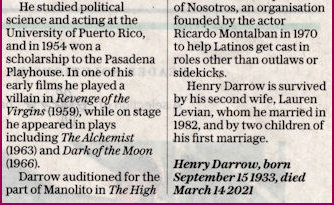
Dame Joan Collins
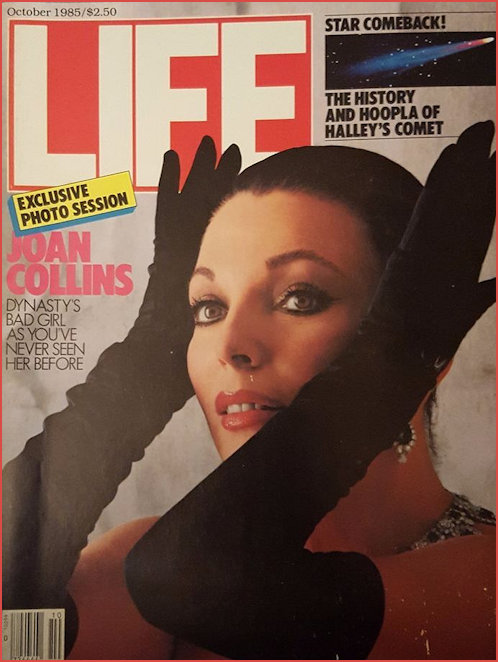
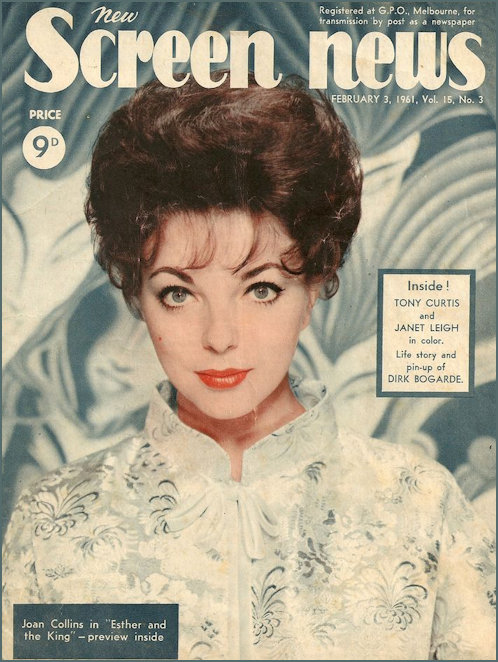
Dame Joan Collins born on 23rd May 1933 graces the 1985 cover of Life Magazine and 3rd February 1961 cover of Screen News
The word trouper is one often applied to stars of show business who have defied the usually brief shelf-life that celebrities enjoy. And the doyenne of these troupers is without a doubt Joan Collins, an actress whose career has spanned over half a century. From Rank starlet to venerated stage actress the Queen bestowed the Order of the British Empire upon her Joanie is loved by Brits and Americans alike.
Born in London on May 23, 1933, the first of a theatrical booking agent and his dance teacher wife's three children, Joan Henrietta Collins gained a place at Britain's prestigious Royal Academy of Dramatic Art when she was just 15 years old. Her acting career had started three years earlier, however, when she made her London stage debut cast, rather uncharacteristically, as a boy. She landed her first film part, albeit uncredited, in 1951, and didn't have to wait long to get her first crack at a leading role. With 1954's Our Girl Friday she joined the stable of beautiful young starlets at Rank studios. A selection of largely forgettable roles followed, as the Londoner becoming better known for her roster of high-profile boyfriends, which included James Dean, hotel heir Nicky Hilton, Ryan O'Neal, Harry Belafonte and her former fiancée Warren Beatty, than for her repertoire.
The film which really made Joan's name was The Stud, a celluloid adaptation of her younger sister Jackie's sexy romp in which she was seduced in a series of memorable locations including on a swing and in a swimming pool! All of a sudden, the 45-year-old actress was hot property again. Five years later, she posed naked for Playboy magazine, showing that her best years were not behind her. Normally television is where actors end up after film parts peter out, but Dynasty became a huge hit, establishing Joan as the bitch to end all on-screen bitches. Her portrayal of Alexis Colby lasted eight years, and pulled in a reported $120,000 per episode. "There is a bit of Alexis in me, the resilience, strength and ambition," Joan has said about the femme fatale who cemented her reputation. And it was those qualities which stood her in good stead through difficult times in her private life. She is still working hard on both stage and screen, has a second career as a novelist and in 1998 became a grandmother. Joan being Joan, however, refuses to be known as "Granny", and her granddaughter Miel calls her "DoDo" instead. Source : Hello Magazine
Jayne Mansfield
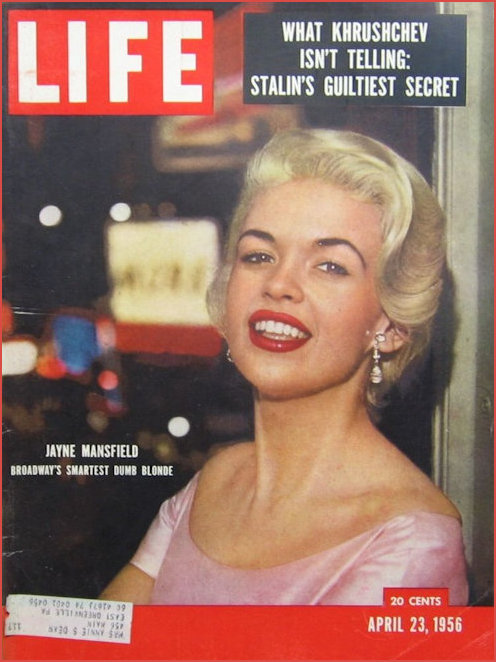
Jayne Mansfield, born on 19th April 1933, graces the cover of Life Magazine on 23rd April (very fitting as it is St. George's Day and her background is British) 1956
Jayne Mansfield was an American actress born on April 19, 1933, in Bryn Mawr, Pennsylvania. A provocateur of her time, she gained fame and pin-up status during the 1950s and was offered roles in several films such as Kiss Them for Me (1957), The Sheriff of Fractured Jaw (1958) and It Takes a Thief (1960). She experienced a career lull in the 1960s, though she did continue to act in small roles on film and stage. Mansfield died in a horrific car accident on June 29, 1967, at the age of 34. Her daughter, Ma risk a Harrogate, is a well-known and respected television actress. Source : Biography. com
Sir Michael Caine

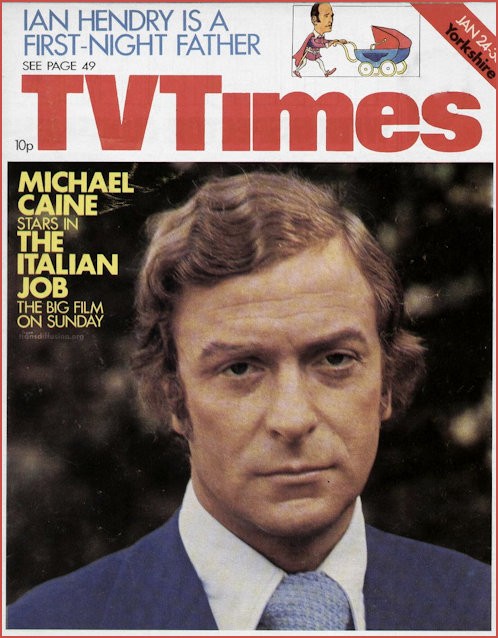
Sir Michael Caine, born on 14th March 1933 graces the covers of Esquire Magazine in 2014 and The TV Times in 1976
"First of all I choose the great films; and if none of those come, I choose the mediocre ones, and if they don't come I choose the ones that are going to pay the rent," says Sir Michael Caine. With almost 40 years in the business and numerous classics under his belt, the actor certainly seems to have lit on a formula that works.
Michael's south London accent and pleasant, but not classically handsome face were hardly the makings of a matinee idol; which makes his long-running and amazingly prolific career an even greater testament to skill and effort. He has made some fantastic films as well as, by his own admission, some downright awful ones becoming in the process much more than just a star. Sir Michael Caine is an icon. Born Maurice Joseph Micklewhite on March 14, 1933, Michael grew up in a two-room flat without electricity in an area close to the Thames. His father, Joseph, was a fish market porter; his mother Ellen worked as a cleaning lady, and the youngster was raised to follow in the family footsteps, entering the fish trade like his father and grandfather before him.
Michael had other ideas, however. In the local cinema he found an escape from the bombed out ruins of post-war south London and dreamed of becoming an actor. After doing his national service in the Army serving first in West Berlin and later seeing combat in the Korean War Michael returned to England in 1953 and gravitated towards the theatre. He took night classes in drama while supporting himself with various day jobs, and adopted the stage name Michael Scott. In the years that followed, Michael appeared in more than 100 television dramas, with repertory companies throughout England, and later in the stage hit The Long And The Short Of It. In the latter he served as Peter O'Toole's understudy, a role he later assumed on tour. He also met and fell in love with a young English actress, Patricia Haines. The couple married in 1955 and a year later had a daughter, Dominique. Michael's breakthrough came playing against type as an upper crust, effete army officer in the 1964 film Zulu. But it was the roles of working-class spy Harry Palmer in 1965's The Ipcress File, and as a charming Casanova in Alfie, the following year, that would make Michael a household name. Michael was the epitome of the new breed of actor emerging during the mid-Sixties in England the working class "bloke" with glasses and a down-home accent.
As his career went from strength to strength, Michael's private life also moved ahead when he fell in love with Guayanese model and former Miss World competitor, Shakira Baksh, whom he had spotted in a TV coffee ad. They married in 1973 and had a daughter, Natasha, the same year. The late 1970s and 1980s were something of fallow period for the actor, although amidst the dross there were some gems. Michael earned his third Oscar nomination for his portrayal of an alcoholic English literature professor in 1983's Educating Rita. Three years later he finally scooped an Academy Award for Best Supporting Actor in Woody Allen's Hannah And Her Sisters, playing a man who is infatuated with his wife's sister. Most of Michael's best work in this period, however, was for the small screen, in dramas such as 1988's Jack The Ripper for which he earned a Golden Globe and as the troubled title character in Jekyll & Hyde (1990).
In 2000, he was awarded a knighthood in the Queen's Birthday Honours List for his contribution to the arts. As he approaches his 85th birthday, it seems there is no stopping the actor. Enjoying something of a renaissance following his Oscar win, in 2002 the screen legend makes it clear he's still up for a challenge. "I can't think of anything more frustrating," he says, "than to be sitting on a rocking chair on a porch at the end of your life, regretting the things you did and didn't do." Source : Hello Magazine| Read more here
1933 - Car of the Year
The Pierce Arrow - Silver Arrow (complete with Archer)
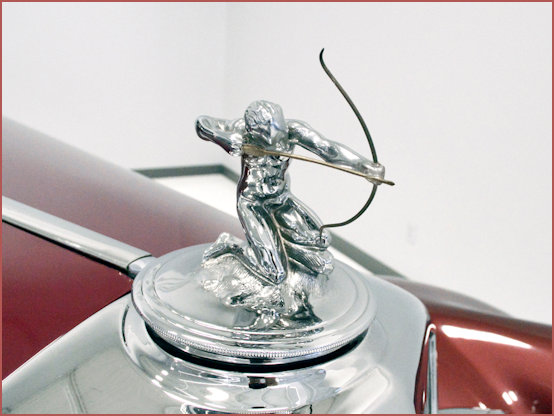
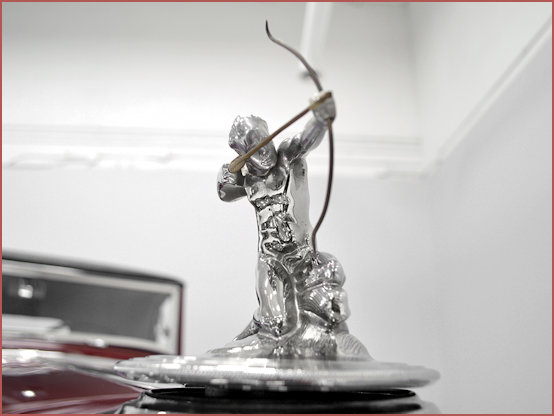
Archer images courtesy and © of the Antique Automobile Club
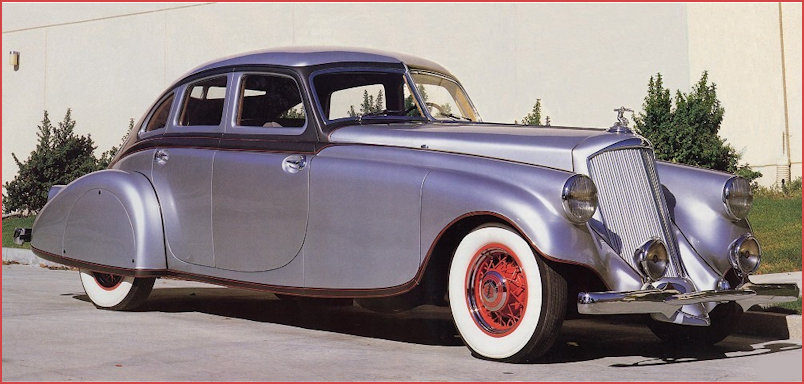
Image sourced from & © of Cloudlakes
A very moving tribute from From PreWarCars : "It was 1933, the year that Franklin D. Roosevelt took office in The White House, New York City was terrorized by a giant monkey (King Kong), the Great Depression and the Prohibition ended (I could not find any relation between those two) and Hitler became Reichskanzler. Those were also the days of....
Art Deco styling. Art Deco influenced the design of buildings, furniture, jewellery, fashion, movie theatres, trains, ocean liners, everyday objects such as radios and vacuum cleaners, and cars!! A more sleek form of the style, called Streamline Moderne, appeared in the 1930’s.
Speaking about streamline, it was also in 1933 that airship LZ-127 “Graf Zeppelin” visited the "Century of Progress" Chicago World’s Fair on its return trip from South America to Germany. At 236.6 m (776 ft), the Graf Zeppelin was the largest airship in the world at the time. It was powered by five Maybach 12-cylinder 550 hp engines. The design of the LZ-127 was based on the LZ-120 “Bodensee”, a design from Paul Jaray, also the designer of the first series built streamlined car, the 1934 Tatra T77. But that is another story.
There, on the Chicago World’s Fair, was also presented one of the most intriguing and desirable pre-war cars in my opinion, the 1933 Pierce-Arrow Silver Arrow concept car, the ultimate example of Streamline Moderne. With a design that was far ahead of its time, unexpectedly progressive for a brand like Pierce Arrow and introduced a year before other streamlined cars like the Chrysler Airflow and the earlier mentioned Tatra T77, it was the talk of the town. And beyond. Or as Sotheby’s describes it “the car that inaugurated the streamlined automotive age.” With its sleek design with integrated fenders, its innovative technique and its powerful V12 engine, it surpassed in attention other automobile masterpieces that were also introduced during the World’s Fair, like the one-off Duesenberg Model SJ Torpedo Sedan, Packard’s advanced V-12-powered Sport Sedan and Cadillac’s Aero-Dynamic Coupe with 16 cylinders.
Designer of the 1933 Pierce-Arrow Silver Arrow was Phillip O. Wright. In 1931, during a unwanted delay because his car had been stolen, he met in Chicago Roy Faulkner, who was at that time president of the Cord Corporation. Together they created the elegant Cord L-29 Speedster. When Roy Faulkner became Vice-President of Pierce-Arrow he asked Phil Wright to join him. Wright, aged 26, then designed the Silver Arrow, a car that was developed with Studebaker in South Bend, together with a streamlined car for Studebaker, the 1934 Land Cruiser, that was also presented during the Chicago World’s Fair. Although the Great Depression was on its end, the Silver Arrow was to expensive for most. To make a comparison with the Studebaker Land Cruiser, that car retailed for $1,510, whereas the Silver Arrow had a price tag of $10,000!! Only five were built, of which three are still existing. Nr. 3 has been sold in December 2015 by RM Sotheby’s for $3,740,000."
What was being advertised in 1933?
A 1933 library exhorting the public to read The Daily Telegraph tomorrow (the 2d paper sold for 1d!) - from the Western Morning News & Daily Gazette dated Monday, 9th January 1933 source : British Newspaper Archive
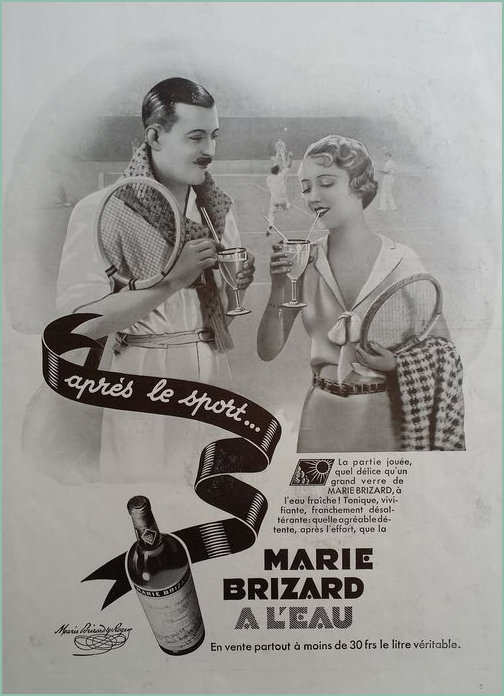
Refresh yourself with a drink after playing sport - a 1933 offering in the 17th June edition of L'illustration - image sourced from Art Deco Menswear Fb with thanks
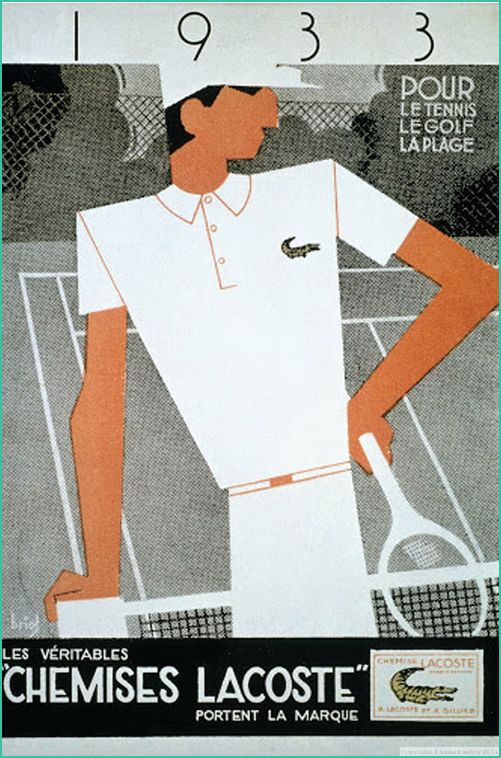
Founded in 1933 by René Lacoste, the label famously known by its small green crocodile emblem celebrates eight decades of fashion expertise and creation. (Image and information © Lacoste and Vogue)
"It all began on a tennis court in 1933, when tennis champion René Lacoste decided to swap the traditional long-sleeved shirt for a short-sleeved t-shirt with a collar, which has become known today as the Lacoste polo. More than just a sports shirt,, René Lacoste generated a real French joie de vivre through his pieces by bringing together traditional know-how and innovative ideas."
"René Lacoste and André Giller launch the Lacoste L.12.12 polo shirt. Made of a new breathable fabric and featuring the crocodile logo, the shirt is flexible and lightweight."
1933 - Fashion
Very typical 1930s bride with enormous bouquet of Calla Lillies - from the Western Morning News & Daily Gazette dated Monday, 9th January 1933 source : British Newspaper Archive
As seen in the West London Observer dated Friday, 7th April, 1933 - source : British Newspaper Archive
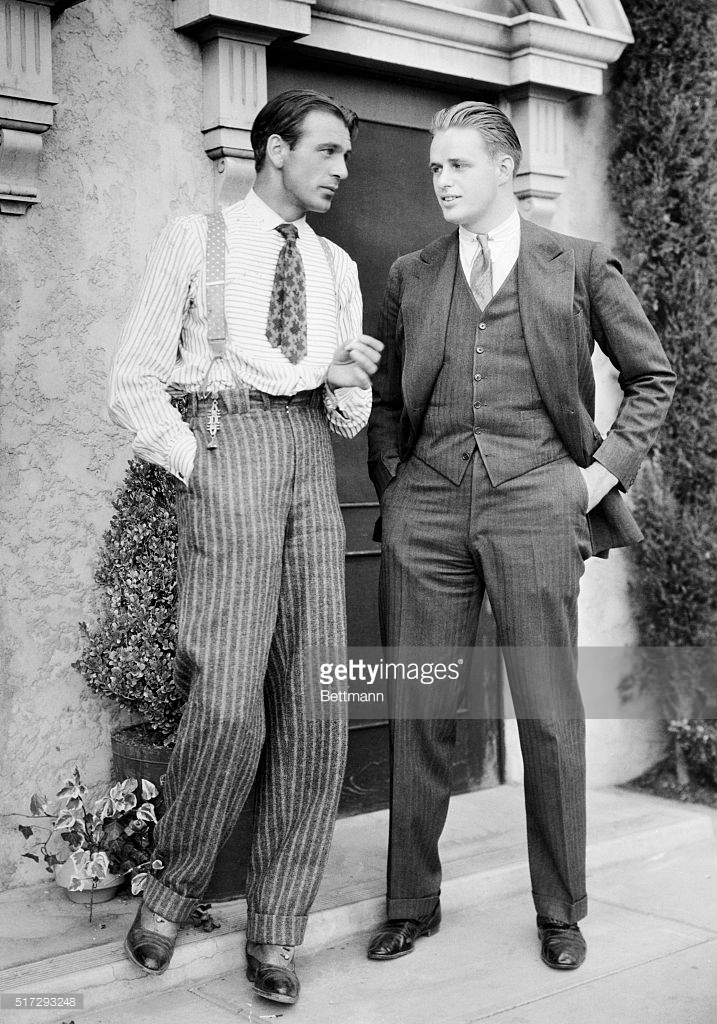
Elliott Roosevelt, son of the president, chats with Gary Cooper on the Paramount lot while Gary waits outside his dressing room for a call back to his set where he is filming One Sunday Afternoon. Image courtesy & © of Getty
Many people are using a non-Getty version of this picture, but it is the clearest I can find and just epitomises the relaxed 'loucheness' of the 1930s and 1940s that certain men (including my father) possessed! It also helps to be over 6 feet in height!
I was also immediately reminded of the lyrics of 'Puttin' on the Ritz'! :
"If you're blue and you don't know where to go to | Why don't you go where fashion sits | Puttin' on the Ritz.
Different types of wear all day coat pants | With stripes and cut away coats for perfect fits | Puttin' on the Ritz.
Dressed up like a million dollar trooper | Trying hard to look like Gary Cooper | Super-Duper
Come let's mix where Rockefellers ! Walk with sticks or umbrellas ! In their mits|Puttin' on the Ritz."
The 'Rainbow Room' at Derry & Tom's 1933
The Derry and Toms department store was designed and built by Barker’s in house architect Bernard George in 1932 and featured metalwork by Walter Gilbert and panel reliefs, entitled Labour & Technology, by Charles Henry Mabey Jnr.
The Rainbow Room was designed by French architect Marcel Hennequet who was better known for designing Art Deco buildings in Paris; in particular on the Boulevard Periere and Rue Sheffer which have particularly distinctive undulating and curving Art Deco windows. One of the buildings helps timeline identification by displaying a construction date. Source : Paris is invisible
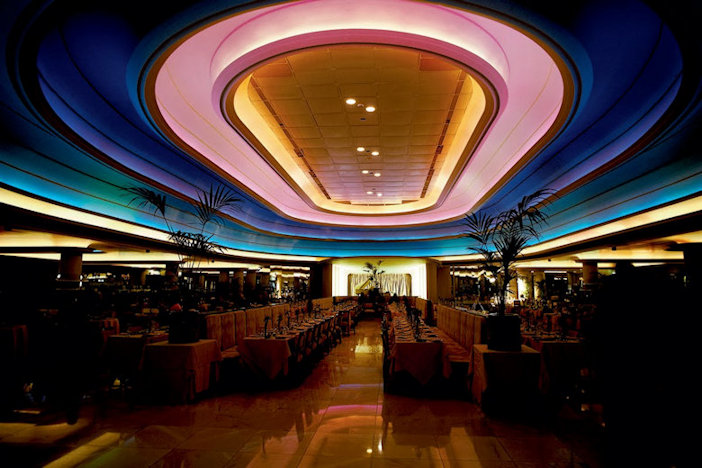

Marcel Hennequet’s Rainbow Room restaurant at Derry & Tom's was opened in 1933 and acclaimed as an Art Deco classic. Images are from the 'Big Biba' restoration in the the 1970s as no original images are available at this time.
1933 - French (Seaside) Fashion!
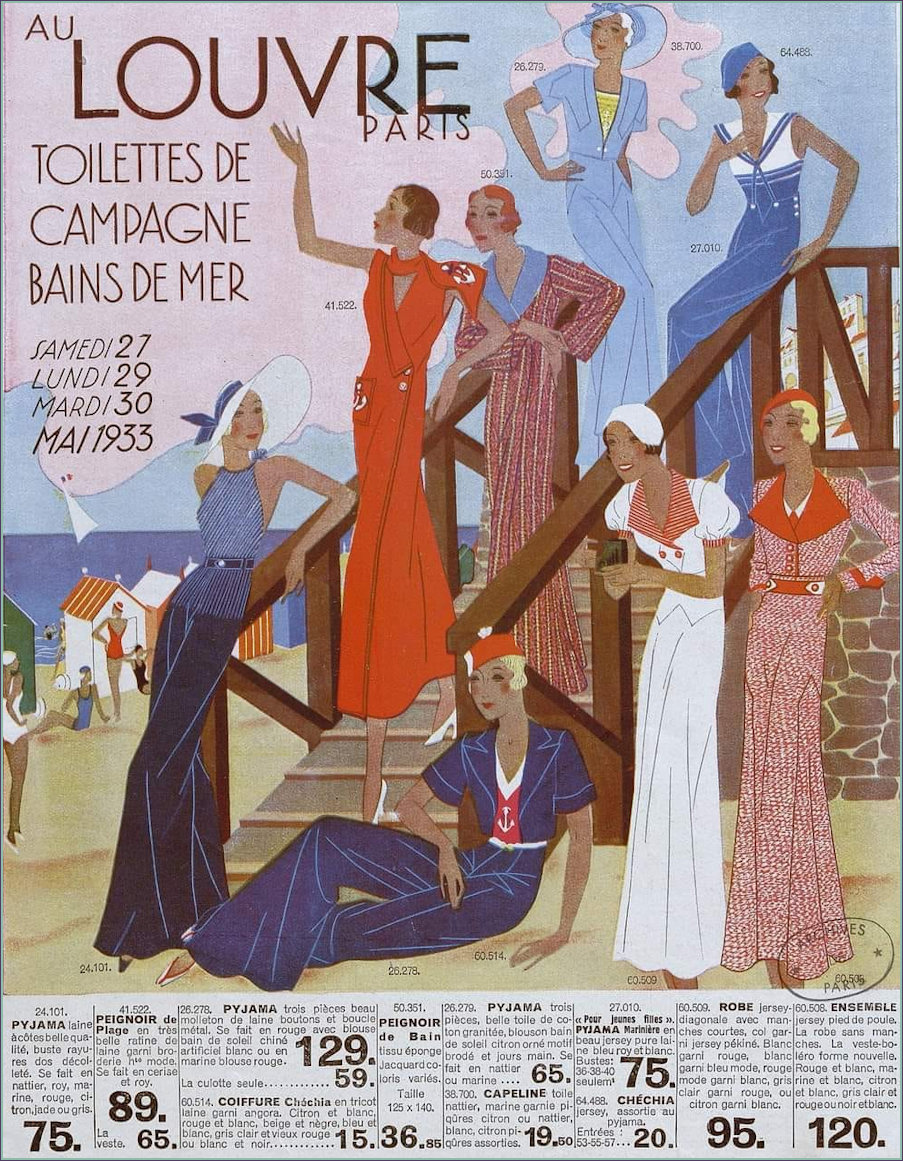
Catalogue d'été des grands magasins du Louvre, 1933 - image sourced from Fb
Alcatraz designated as a Prison in 1933
In 1933 the island's original buildings were demolished to make way for the unmistakeable style of 1930s architecture. No small irony that as the prison went up to accommodate a huge number of prisoners - Prohibition was repealed!
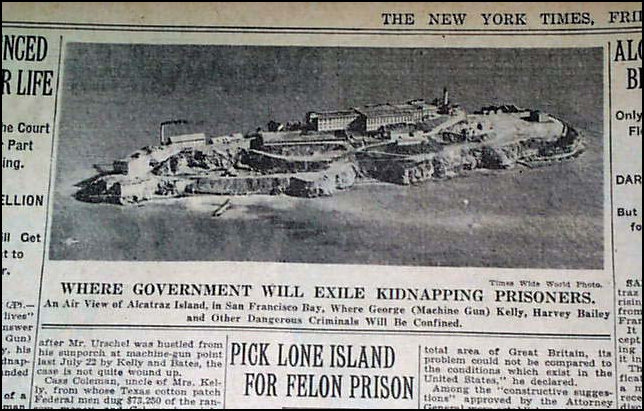
As announced in the New York Times in October 1933
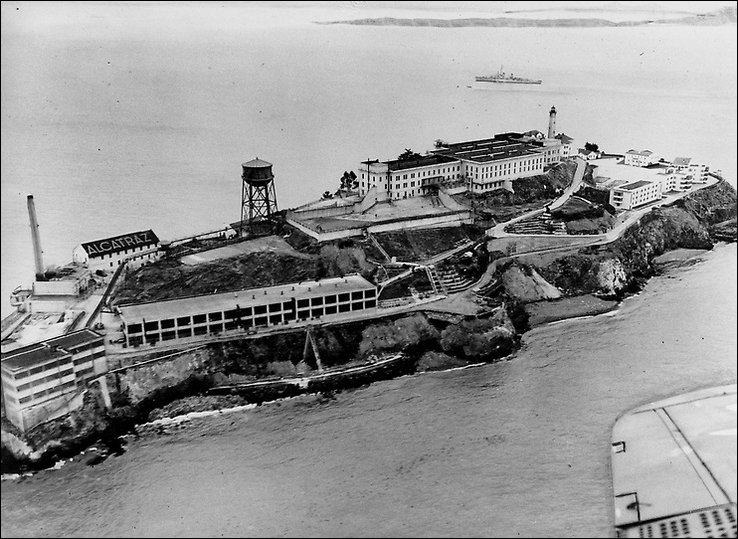
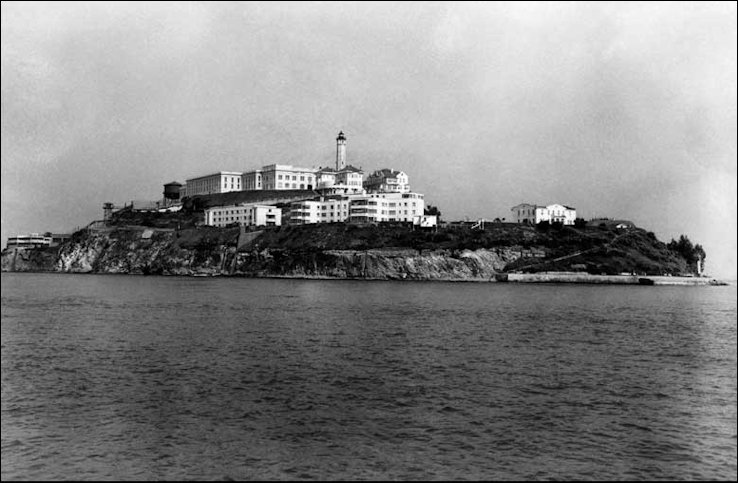
Alcatraz images courtesy and © of the Everett Collection
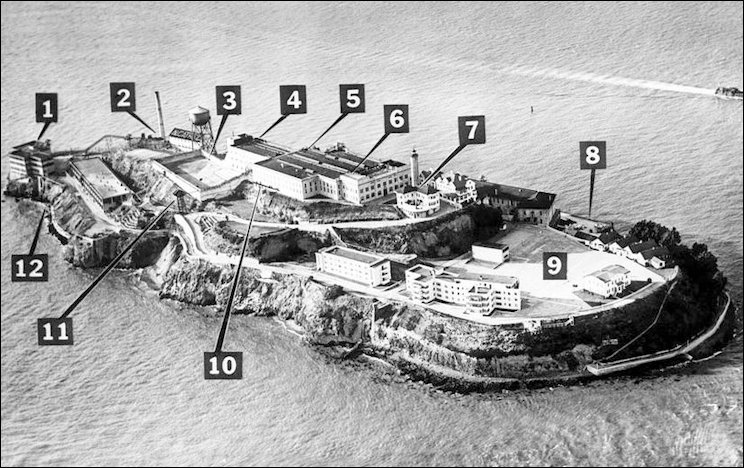
Alcatraz Island, principal buildings and locations 1. Shoe and Furniture shop, 2. Power House, 3. Prison Yard, 4. Hall and Kitchen, 5. Main Cell Block, 6. Administration and Warden Office, 7. Warden Home, 8. Dock, 9. Guard Recreation Yard, 10. Catwalk, 11. Guard Tower.
Prohibition is repealed
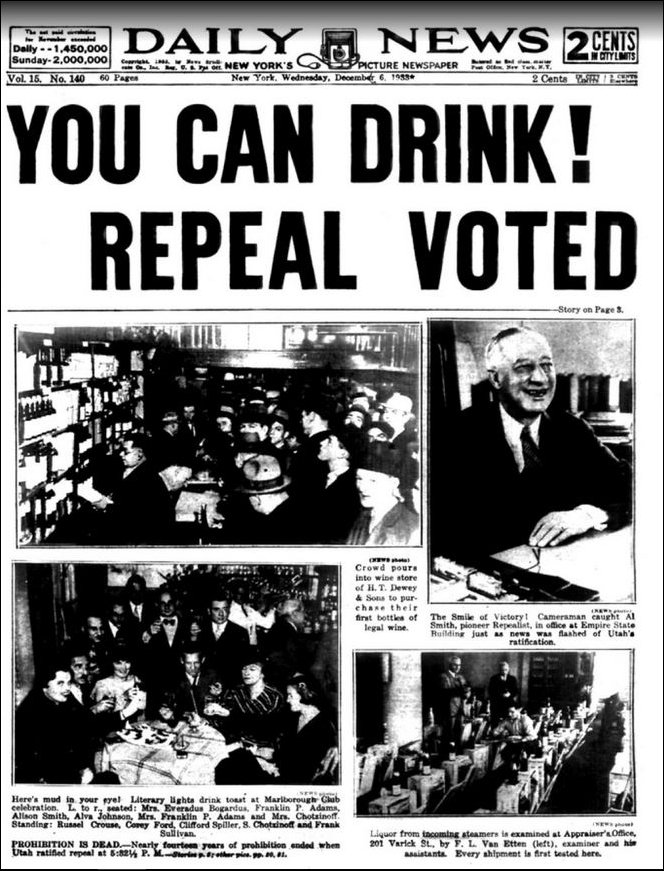
The Daily News headlines on 6th December 1933 proclaim 'You can Drink!'
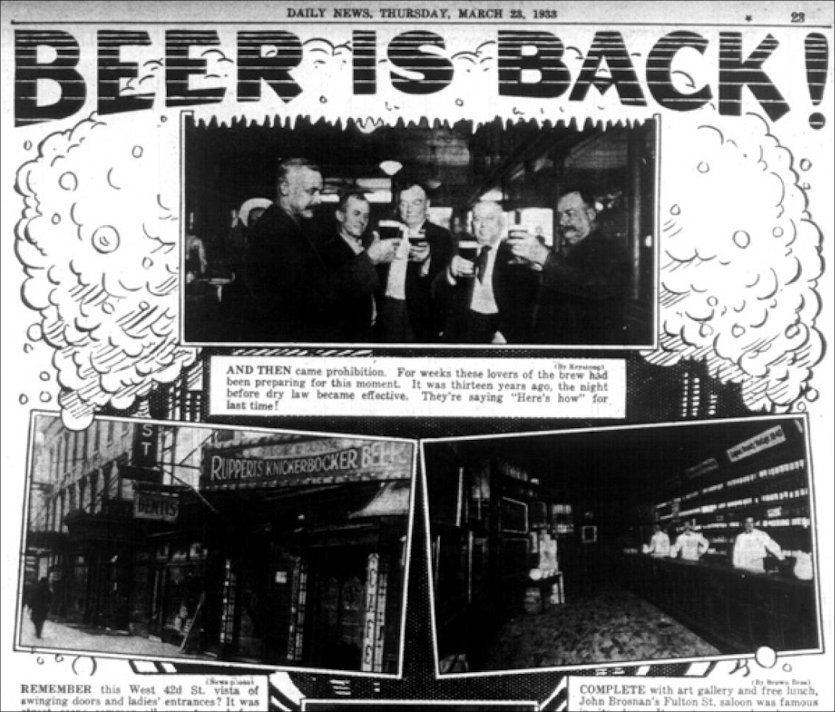
The 1933 One Penny Coin
A very collectable 'collectible' - full story here
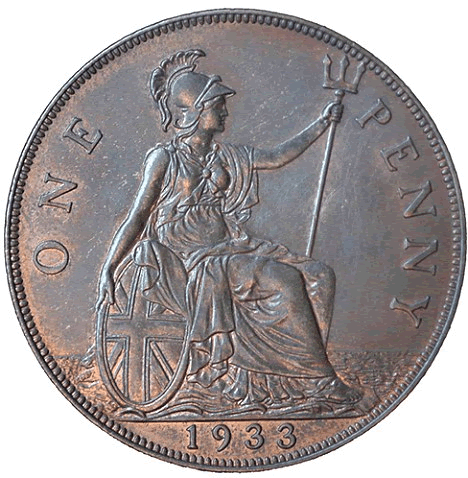
The obverse of the elusive 1933 1d penny
Generations of schoolboys searched through their change in the vain hope of finding one.
Then, a 1933 penny bearing the head of King George V surfaced on the eBay internet auction site. Experts have always worked on the assumption that only seven such coins were minted and, if genuine, this one would be worth at least £80,000.
Nick Hart, of the London Mint company, said the history and rarity of the 1933 penny make it a very valuable coin. 'It is not quite clear how many were struck. It is certainly less than ten. 'The price is difficult to be sure of, because they sell so rarely. A genuine coin would fetch more than £80,000, while some versions would be more than £100,000.'
Two versions to the coin were struck. It is thought that four had a slightly different image of the King in preparation to an updating of his likeness on all coins. These are particularly valuable. After seeing the image on eBay, Mr Hart said he had suspicions about the coin. He said the spacing of the digits was irregular, which would mean it is a fake. 'It would need to be examined by an expert, but I have serious doubts. I would be very surprised if this is a real 1933 penny.'
Historical Postscript
The Royal Mint had no plans to make any pennies in 1933 because there were already plenty around. However, a small number were produced following requests for a commemorative coin. experts have always worked on the basis there were seven. Of these, three were placed by the King under the foundation stones of buildings, two were presented to the British Museum and two found their way to private collectors.
In September 1970, during building work, one of the coins was stolen from the cornerstone of the Church of St Cross in Middleton, Leeds. Rather than risk a further theft, the Bishop of Ripon ordered that another coin buried at St Mary's Church in Hawksworth should be unearthed and sold. Today the Mint Museum, British Museum and the University of London each hold one of the coins, with three in private collections.
Trains & Locomotives in 1933
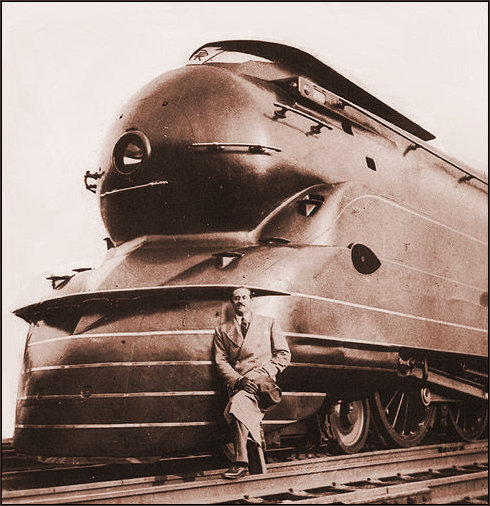
The man and his train ~ 1933, le brillant Raymond Loewy devant sa locomotive à vapeur K4S de la Pennsylvannie Railroad © www.deconet.com
Pullman Railplane
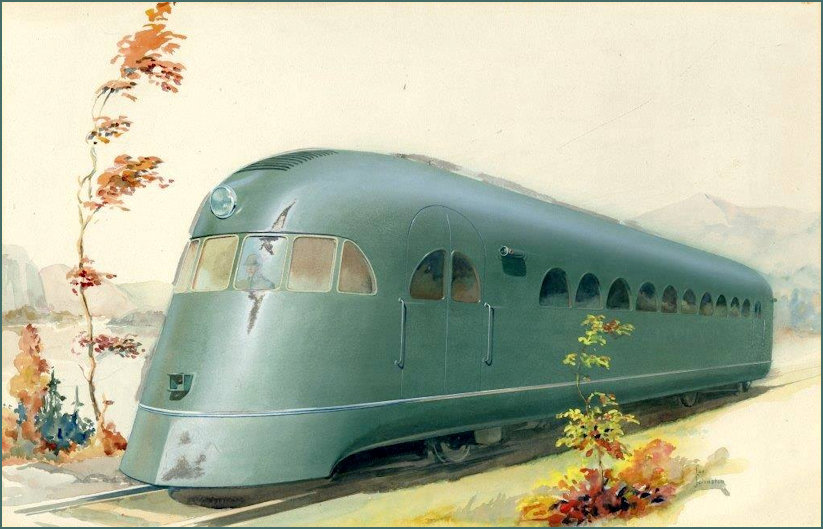
The Pullman Railplane streamlined design, painting by William Bushnell Stout, 1933.
This train is unlikely to have pulled in at Morecambe Station - but as it is a 'Streamline Moderne' example it has its place on this page. It is also remarkably similar to the MV 'Kalakala' streamline moderne passenger ship. More about 1930s travel by rail here.
1933 - Year of the Haunted Watch
Curse of the £15million watch:
- Haunting story of the most elaborate watch ever made - and the man who wished he had never owned it
-
US banker Henry Graves Jr ordered the 'Supercomplication' watch Swiss manufacturer Patek Philippe in 1925
- It was so complex that it later became known as the 'Holy Grail' of watches and sold at auction this week for £15.1m
-
The timepiece featured 24 complications including perpetual calendar, moon phases and night sky of New York City
-
But it never brought Graves the pleasure he expected and just seven months after he received it, his best friend died
-
Worse was to come when his youngest son George was killed in car crash on a boulevard in Pasadena, California
-
Graves came close to selling watch believing it to be a bad talisman but his daughter persuaded him to keep it
By Guy Walters for the Daily Mail |Published: 22:32, 13 November 2014 | Updated: 17:33, 25 November 2014
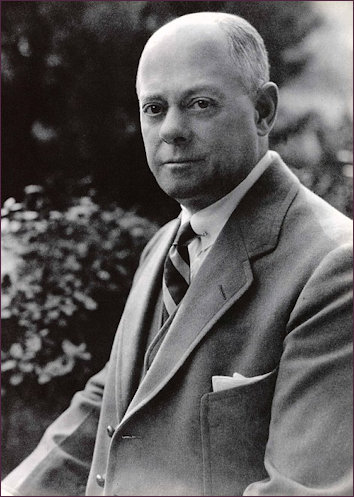
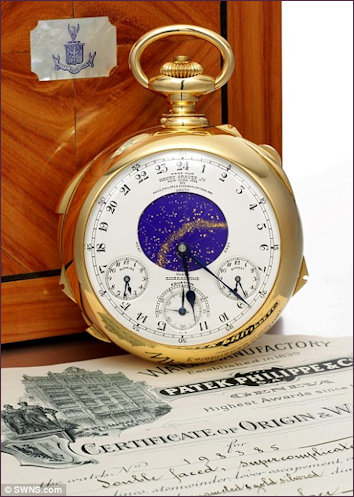
Time lord: American Banker Henry Graves Jr (left) commissioned the 'Holy Grail' of watches (right) in 1925 only to suffer its curse - images © SWNS.com
There were few wealthier men in the United States than Henry Graves Jr. Born into an august banking family, he had spent his life accumulating a multi-million-dollar fortune by investing shrewdly in railways and banking.
Like many rich men, Graves liked to collect objects as well as money. While most ordinary men collected stamps or coins, he acquired holiday homes, modern art, motorboats and expensive watches. His favourite boat was his 50-foot speedster, the Eagle, on which he liked to potter around the Upper Saranac Lake in upstate New York.
One afternoon late in 1936, Graves took out the Eagle with his daughter Gwendolen, who found her father in a morose mood. Her eyes widened when he pulled a large watch out of his pocket and looked at it intensely.
‘Such things bring one nothing but trouble,’ said Graves, who by then was in his late 60s. ‘Notoriety brings bad fortune.’
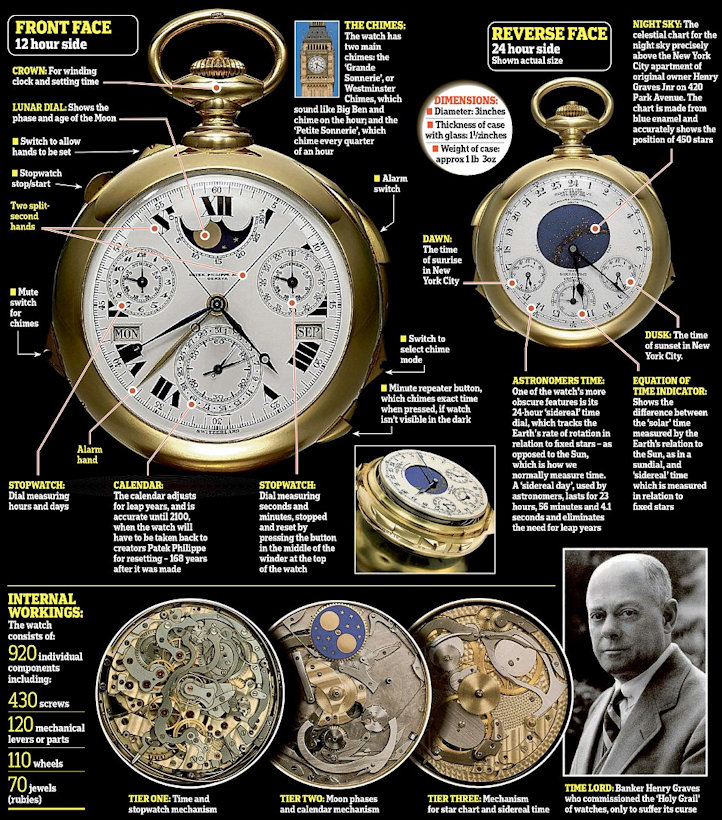
Gwendolen knew that this was no ordinary timepiece. It was the ultimate expression of her father’s obsession with collecting watches and, in particular, those made by the Swiss firm Patek Philippe. This week, that watch broke records at auction when it was sold by Sotheby’s in Geneva for £13.4 million to an anonymous bidder. With auction house costs, the mystery buyer will have to fork out a total of £15.1 million.
It comes as no surprise, for the watch is commonly regarded as the most important ever made, the ‘Holy Grail of Horology’. Graves had been buying watches from Patek Philippe since 1903, and by 1910 he had started to commission them. Many were engraved with the family’s coat of arms. But he wanted more than mere engravings to make his watches special.
He wanted his Patek Philippes to be the most complex watches in the world, including as many ‘complications’ as possible - the horological term for any feature of a watch that goes beyond simply showing hours, minutes and seconds. Such was his obsession that he started competing with James Ward Packard, a luxury car manufacturer, to see who could produce the most impressive timepiece. Graves secretly approached Patek Philippe in 1925. He wanted, he insisted, nothing less than ‘the most complicated watch’ on the planet, one that was ‘impossibly elaborate’. What followed was, in the words of author Stacy Perman in her book A Grand Complication, ‘a nearly eight-year odyssey’ in which teams of Patek Philippe’s craftsmen, scientists and engineers did, indeed, create the most complicated watch made before the age of computer-aided design.
They spent three years researching the project and five years making the watch. In total, the timepiece — with two clock faces, one on each side — has 24 complications. One shows the phases of the Moon, others the times of sunset and sunrise in New York and even the pattern of the stars each night above Mr Graves’s apartment in the city. There are complications revealing the days of the week, an alarm, a stopwatch and a perpetual calendar. Grave’s masterpiece blew Packard’s out of the water.
Packard had got there first and his was the first watch to feature a sky chart, including 500 golden stars, centered above his home in Ohio. Yet the masterpiece that became known as the Graves Supercomplication never brought its owner the pleasure he expected. Far from it. After he had taken delivery of it in 1933 at a cost of $15,000 (about £650,000 at today’s prices) the Supercomplication seemed to bring him not only unwanted attention but great misfortune - so much so that on the Eagle on that day in 1936, Graves cut the engine of the boat and looked from the watch to the water. ‘What is the point of being wealthy and owning such objects if something like this could happen?’ he asked his daughter. It was the time of the Great Depression, and Graves had become a figure of public resentment after people who were starving and destitute discovered that he could spend thousands on such luxuries.
But the banker believed the watch had brought him far worse than opprobrium in the public prints. In fact, he became convinced that it had come with a deadly curse. Just seven months after Graves received the watch, his best friend died. And worse was to come. In early November 1934, Graves answered the telephone to be told that his youngest son, George, had been hurtling in a car down a boulevard in Pasadena, California, and crashed, killing himself. The news was devastating, and made even worse by the fact that Graves had lost his eldest son, Harry, in a car crash in 1922 when he was just 25 years old.
For Graves, the Supercomplication was a bad talisman, something that was meant to have brought him joy but had, instead, ushered in grief and hateful publicity. At one point he had come close to selling the watch, but decided against it. As the boat bobbed in the water, Gwendolen watched her father pull back his arm. In his hand was the Supercomplication and he was about to throw it into the lake. ‘No, Daddy!’ Gwendolen implored. ‘Let me hold on to that. Some day I might want that.’ Graves slowly let his arm fall to his side. Gwendolen reached forward gingerly and took the watch from his hand, then put it in her pocket.
From then on, Gwendolen held on to the watch. Her father lost interest in an item that he had craved all his life - a life that was to end in 1953, when he was 86. After his death, Gwendolen inherited the Supercomplication and in 1960 passed it to her son, Reginald ‘Pete’ Fullerton, who sold it to an industrialist from Illinois for $200,000 — some £1million today. Until 1999 the watch was displayed in a museum in Illinois, then it was sold to a private collector by Sotheby’s in New York for $11 million (about £10 million today). The auction house will not be drawn on the identities of either the seller or the buyer.
But both will for ever thank Gwendolen Graves for stopping her father throwing the world’s most extraordinary timepiece into a cold lake in upstate New York all those decades ago.
This article draws on the book, A Grand Complication: The Race To Build The World’s Most Legendary Watch by Stacy Perman, published by Atria/Simon &Schuster.
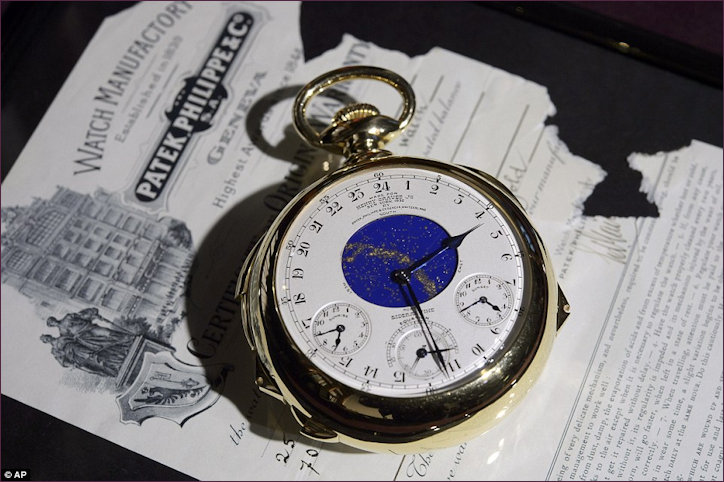
In total, the timepiece - with two clock faces, one on each side - has 24 complications. One shows the phases of the Moon, others the times of sunset and sunrise in New York and even the pattern of the stars each night above Mr Graves’s apartment in the city - image © AP
Christmas 1933 - The Radio Times
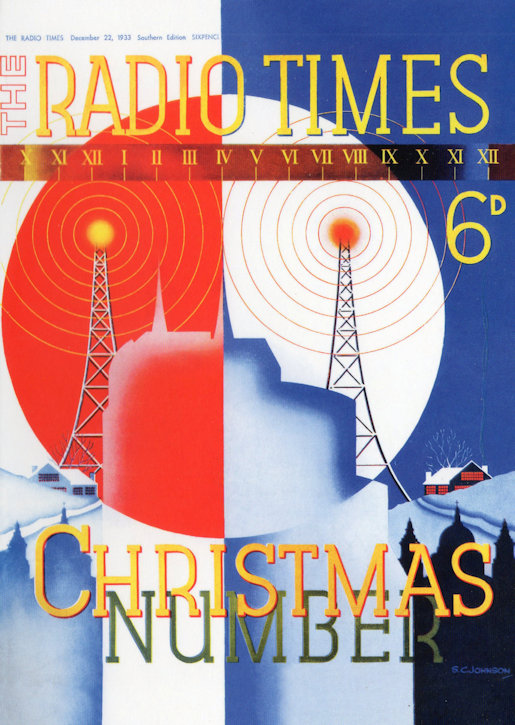

Details of the main programme for Christmas Day in 1933 including a play, the King's Speech and a pantomime - nothings' changed!
1933 - The Legend of 'Nessie' is born
The Picture that started it all!
In a Daily Mail article devoted to the finding of a missing film prop from 1970 - the very first picture (taken in 1933), giving credibility to the legend, is published :
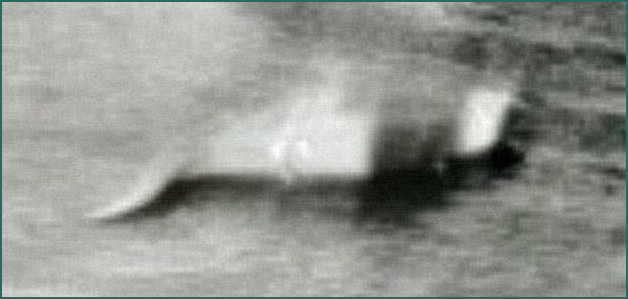
This picture, said to show the loch's famous monster, was taken by Hugh Gray in 1933 - image courtesy of the Daily Mail
The legend of the Loch Ness Monster has been around since the sixth century, when Irish monk Saint Columba witnessed locals burying a man who had been attacked by a 'water beast.'
Sightings were scarce until the first modern newspaper report of a monster in the Northern Chronicle of in 1930 which told of fishermen in a boat on Loch Ness being 'disturbed' by a 18ft (5.5metre) long creature.
But it was a sighting in 1933, when George Spicer and his wife claimed they saw 'a most extraordinary form of animal' which was four-foot high (1.2metre) and 25 foot (7.6 metre) long crossing the road near the loch, that started Nessie mania. - source Daily Mail
Revealed, the English plot to kidnap Nessie: Papers from 1933 show how Scots feared monster would be taken to London and its carcass put on display
- The Scottish Office opened a file on Nessie in December 1933
- Officials had be bombarded with inquiries following sightings that year
- Similar files have also been found at the Natural History Museum in London
- Years later, Prince Philip suggested calling in the Navy to search for creature
- Natural History Museum and the Royal Scottish Museum wanted Nessie
- Scotland hoped to pass new laws passed to protect her
- However, London wanted her shot on sight and the carcass sent to
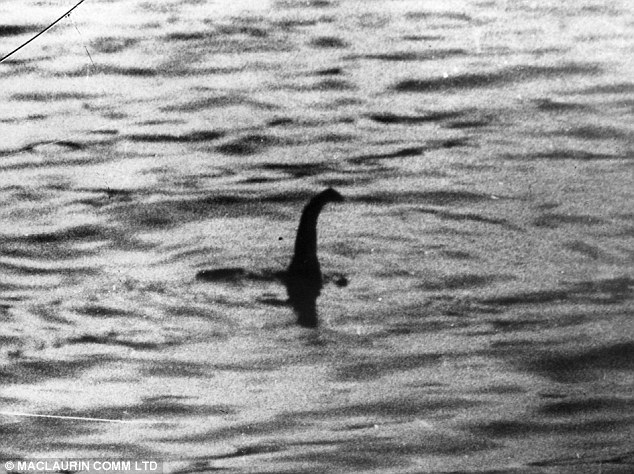
Sighting? This photograph, purportedly of the Loch Ness Monster was taken in 1934, a year after the Scottish Office opened a file on the creature after being bombarded with inquiries
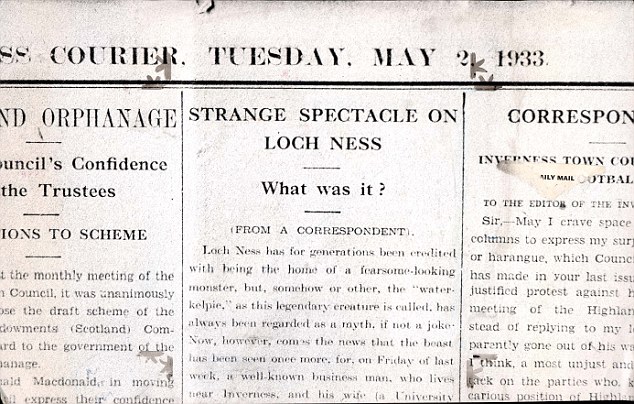
Strange spectacle: A report in the Inverness Courier from May 1933 noted there had been a 'strange spectacle' on the famous Loch and mentions the monster
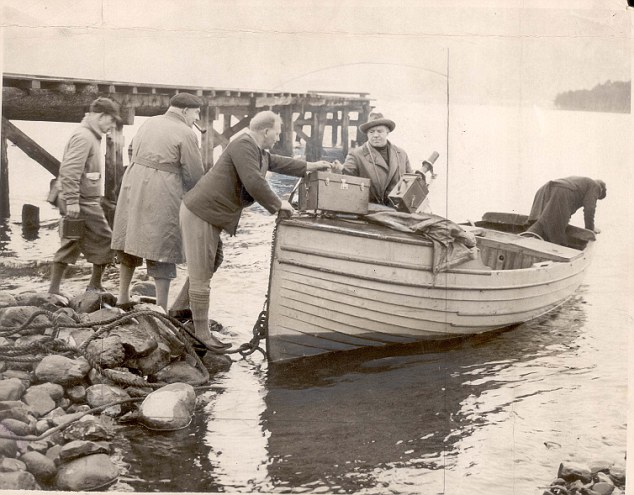
Hunted: Scotland hoped to keep hunters, such as Marmaduke Wetherell, pictured searching for the monster in 1933, at bay until a law could be brought in to protect the creature
Of all the tales about the Loch Ness Monster, it must be one of the most unlikely – an English plot to kidnap the beast and display its carcass in London.
But back in the 1930s the Scots feared that such a thing was all too possible, according to newly revealed papers, and fought to ensure she stayed north of the border. The Scottish Office opened a file on Nessie in December 1933 after being bombarded with inquiries following sightings that year.
And similar files have also been found at the Natural History Museum in London, with the contents describing Scotland’s fears that Nessie ‘should not be allowed to find its last resting place in England’ after a bounty was placed on the monster’s head. The documents also reveal that many years later Prince Philip even suggested calling in the Royal Navy to search for the creature.
By 1934 both the Natural History Museum in London and the Royal Scottish Museum in Edinburgh wanted Nessie. But while Scotland hoped that the bounty hunters could be kept at bay long enough to get new laws passed to protect her, London preferred her shot on sight. In March 1934 an unnamed official at the National History Museum made no bones about how he thought bounty hunters should deal with the creature. The files show he said: ‘Should you ever come within range of the “monster” I hope you will not be deterred by any humanitarian considerations from shooting him on the spot and sending the carcass to us in cold storage, carriage forward. Short of this, a flipper, a jaw or a tooth would be very welcome.’ According to more documents found in Edinburgh, pressure was already growing for a special Act of Parliament to prevent Nessie being killed or captured. The campaign was led by Inverness MP Murdoch MacDonald, who assured the Scottish Secretary Sir Godfrey Collins the creature was no myth.
‘Evidence of its presence can be taken as undoubted. Far too many people have seen something abnormal to question its existence,’ he wrote. He demanded a Bill be put before Parliament to protect the creature, but Sir Godfrey advised there was ‘no law for the protection of monsters’.The Royal Scottish Museum wrote to Sir Godfrey staking Edinburgh’s claim to the carcass. ‘The museum urges strongly that the RSM have the reversionary rights to the “monster” if and when its corpse should become available,’ the letter said.‘We think the monster should not be allowed to find its last resting place in England. Such a fate would surely outrage Scottish nationalism which at the moment is thriving greatly under the monster’s beneficent influence.’
Natural History Museum files from the 1960s also state that when approached by a Tory MP, David James, who was ‘obsessed’ with Nessie, Prince Philip encouraged him to contact the Royal Navy for assistance. The revelations are made by author David Clarke in his book Britain’s X-traordinary Files. He said: ‘During the 1930s … Nessie had become a Scottish icon, a symbol of national identity. There was genuine outrage at the possibility that the corpse of the monster might be taken for display in London.’
1933 - First Modern Commercial Aircraft : The Boeing 247
From the Daily Mail 'On this Day (Day 247 of 2015)' - 4th September, 2015 - " In 1933, the Boeing 247 - considered the first modern commercial aircraft - went into service. It took 20 hours, with seven stops, to fly from New York to Los Angeles. That flight takes just six hours today."
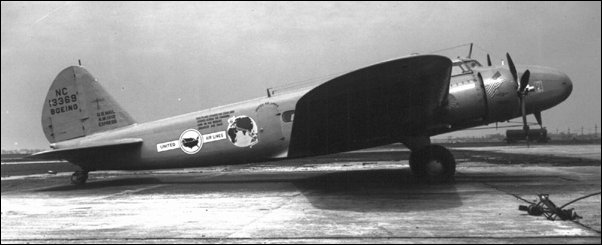
The Boeing Model 247 is considered the first modern airliner. It was an all metal, twin-engine, retractable gear, streamlined airliner that could hold ten passengers in air conditioned comfort.
Source : The Aviation History On-Line Museum - The year 1933 was extremely important in the history of air transport, for it was then that the two original ancestors of the modern airliner appeared. One was the Boeing Model 247 which made its inaugural flight on February 8, 1933, and the other was the Douglas DC-1, which flew later in the year in July.

Flying over Chicago
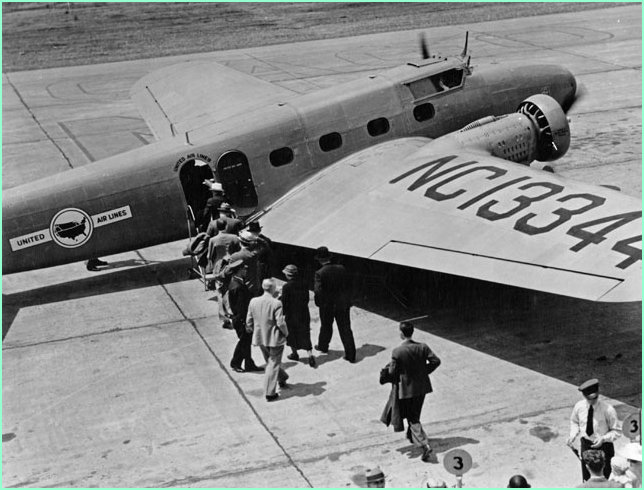
Boarding
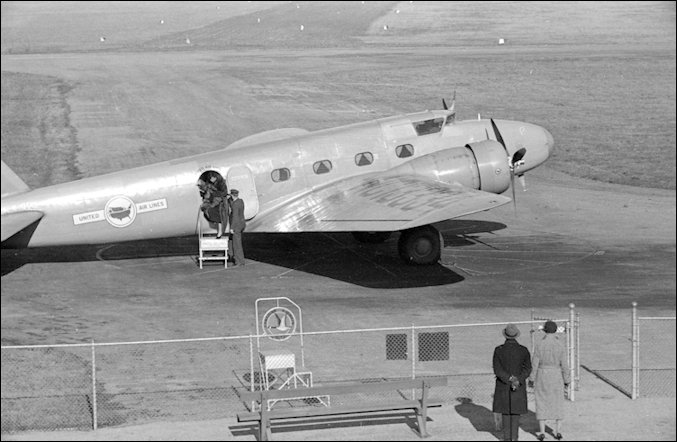
Disembarking - more about 1930s air travel here
1933 - GB success in the Davis Cup
Fred Perry helped Britain win the Davis Cup four times in a row between 1933 and 1936 before turning professional.
The triumphant return of the 1933 Davis Cup Team - image © Getty Images
1933 - Books that captured the imagination
The Shape of Things to Come by H.G. Wells
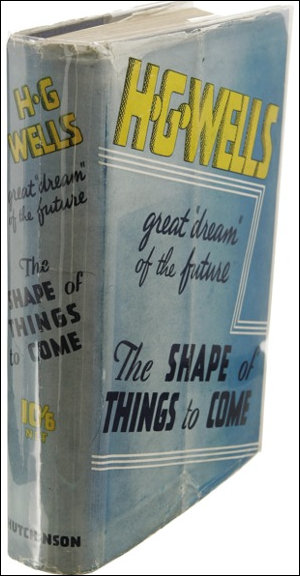
H.G. Wells: The Shape of Things to Come. (London: Hutchinson & Company, 1933), first edition - image courtesy of Heritage Auctions
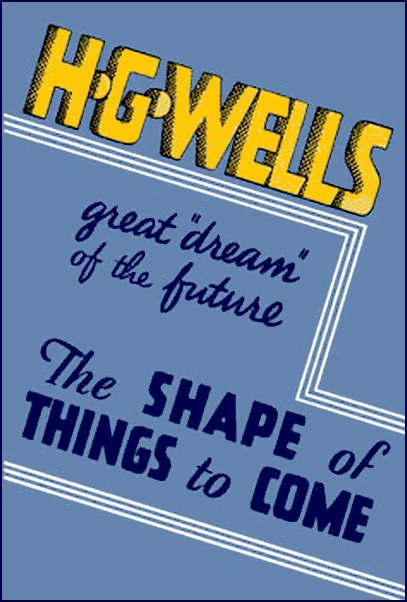
Original Artwork for the Dust Jacket of Hutchinson Edition, 1933 - sourced from Gutenburg.net
An original review from the Sheffield Independent - Monday 4th September 1933 shortly after publication :
H. G. WELLS'S BRILLIANT DREAM OF THE FUTURE SHAPE or THINGS TO COME. By H. G. WELLS. (Hutchinson 10s. 6d.).
Tomorrow has always interested Mr. H. more than to-day. He is always living in the future, and in his latest book he gives us a brilliant picture of a dream of the future based on the apocryphal reminiscences of a Dr. Phillip Ravens, who died at Geneva in 1900 (?) The customary Wellsian pacifism takes us through the war period and its familiar episodes onto Versailles and the unsettling “peace”. He praises J. M. Keynes as the only outstanding voice of the period that protested against the absurd reparations agreements and condemns the League of Nations as a hindrance rather than a help to achieve world peace. After crystallising his old and well-known attacks on modern education and politics, he goes on to give vivid pictures of new war poisons and death gases which imperil the future of mankind. He is horrible in his notions of the death dealing weapons of the future, including a section on germs and “a disease of captive baboons” which is in the typically Wellsian tradition of inventiveness, his descriptive pass(ag)es (sic) dealing with the new weapons of war which science has made available to mankind are of the grimmest character, and his attack on Hitlerism and the swastika is in the liveliest Wellsian vein'
SANER WORLD IN 1965
He calls the voice of Hitler the voice of German out of control. Mr. Wells describes Ramsay MacDonald as the “fine flower and summary of professional politics who rolls his r’s and his eyes. When he comes to describe the influenza ravages of mankind beats all the descriptive reporters, as he does when dealing with outbreaks of crime, piracy and ruffianism. It was in 1965 that the world began to become safer at a conference in Basra at the bidding of the Transport Union. The air had become by this time the chief power, and the air forces were united, being independent of the countries to which they were severally were attached. Of course he gives us an outline of the “World State” after criticising a period of aggressive and turbulent youth when power was chiefly in the hands of the young. His world State remedies that. And towards the end of the 21st century “the graver years” are upon us. Mr Wells is simply reiterating his faith in the World Commonwealth throughout this book and he does it with a gusto and bravura not impaired by years.
Every thinker will want this book, will want to quarrel and argue about it. It is in the best Wellsian manner. As Chesterton says about him, “You lie awake at night and hear him grow”. Here are more of the growing pains. C.B.R.
A 21st century review from Amazon.co.uk, highlighting the uncanny forecast of the world's future :
"First published in 1933, “The Shape of Things to Come” is science fiction novel written by H. G. Wells. Within it, world events between 1933 and 2106 are speculated with a single superstate representing the solution to all humanity's problems. A classic example of Wellsian prophesy, this volume is highly recommended for fans of his work and of the science fiction genre. Herbert George Wells (1866 – 1946) was a prolific English writer who wrote in a variety of genres, including the novel, politics, history, and social commentary. Today, he is perhaps best remembered for his contributions to the science fiction genre thanks to such novels as “The Time Machine” (1895), “The Invisible Man” (1897), and “The War of the Worlds” (1898). Many vintage books such as this are becoming increasingly scarce and expensive. We are republishing this book now in an affordable, modern, high-quality edition complete with a specially commissioned new biography of the author."
Lost Horizon by James Hilton
'Novel by James Hilton, published in 1933. Hugh Conway, a veteran member of the British diplomatic service, finds inner peace, love, and a sense of purpose in Shangri-La, a utopian lamasery high in the Himalayas in Tibet.' Source - The Merriam-Webster Encyclopedia of Literature
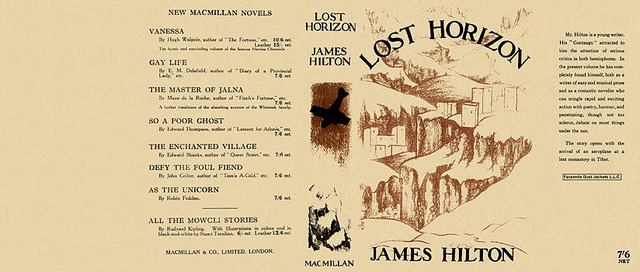
Cover Art - James Hilton, Lost Horizon, The Macmillan Company (1933)
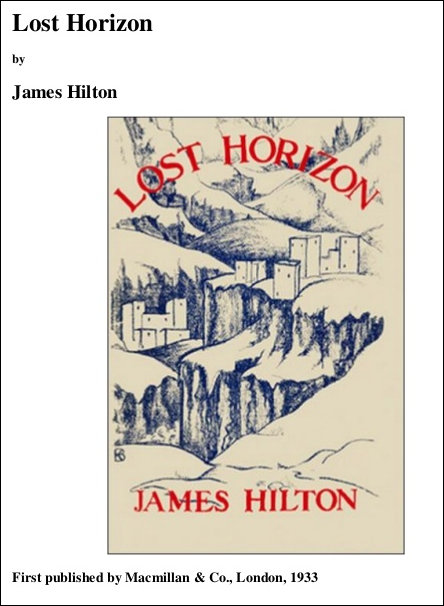
Promo - 1st Edition 1933
Review from Amazon.co.uk on the 2012 re-issue - 'James Hilton’s famous utopian adventure novel, and the origin of the mythical sanctuary Shangri-La, receives new life in this beautiful reissue from Harper Perennial. A book that the New Yorker calls “the most artful kind of suspense . . . ingenuity [we] have rarely seen equaled,” Lost Horizon captured the national consciousness when first published in the 1930s, and Frank Capra’s 1937 film adaptation catapulted it to the height of cultural significance. Readers of Mitchell Zuckoff’s harrowing history of a real-life plane crash in Dutch New Guinea, Lost in Shangri-La, as well as fans of novels ranging from The Man Who Would Be King to Seven Years in Tibet to State of Wonder will be fascinated and delighted by this milestone in adventure fiction, the world’s first look at this sanctuary above the clouds. The new Perennial edition also features a bonus essay on Lost Horizon by Don’t Know Much About History author Kenneth C. Davis.'
To read this book on-line visit Project Gutenberg Australia | A film subsequently followed in 1937
1933 - 'La Chatte' (the Cat) by Collette
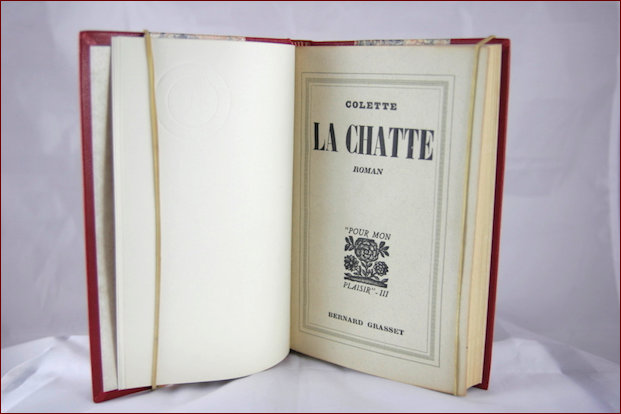
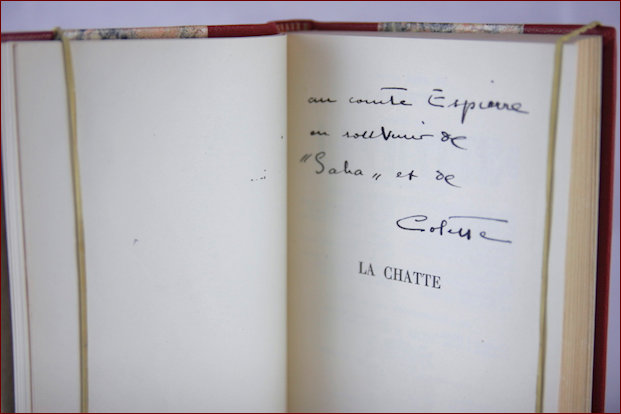
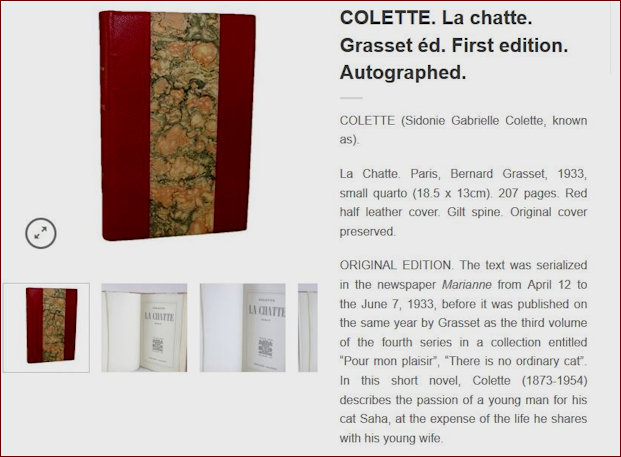
COLETTE. La chatte. Grasset éd. First edition. Paris, Bernard Grasset, 1933, small quarto (18.5 x 13cm). 207 pages. Original cover preserved; Red half leather, gilt spine. Copy numbered on Alfa. Autographed for Comte Espierre. Ex libris Jean Cassan.- image courtesy & © of Libretis
(Sidonie Gabrielle Colette, known as COLETTE ) - ORIGINAL EDITION. The text was serialized in the newspaper Marianne from April 12 to the June 7, 1933, before it was published on the same year by Grasset as the third volume of the fourth series in a collection entitled “Pour mon plaisir”, “There is no ordinary cat”. In this short novel, Colette (1873-1954) describes the passion of a young man for his cat Saha, at the expense of the life he shares with his young wife.
The writer, who was also an immense lover of cats, wrote many texts and poems about them. Source : Libretis
1933 - Edward VIII and his nieces captured 'doing the Nazi salute'
Pretty appalling of Edward to encourage this nonsense and of course in the 21st century we can't really get away from everything being available on the internet!
It would take the 'Sun' to find this 'exclusive' - images and story from the Daily Mail - "A grainy photograph has emerged of the Queen performing a Nazi salute with her family in the gardens at Balmoral"
The British public has reacted with fury after footage of the Queen performing a Nazi salute as a young girl was published by The Sun. The shocking film from 1933 shows Edward VIII teaching his nieces the seven-year-old future Queen and her three-year-old sister Princess Margaret how to do the salute in the gardens at Balmoral. The publication of the 17-second film has outraged thousands across the nation who believe that the Queen cannot be held responsible for her actions as a girl playing with her family. Scores of Twitter users vented their anger this morning, saying The Sun had 'sunk to a new low' and calling for the newspaper's owner Rupert Murdoch to be banned from the UK.
Buckingham Palace last night slammed The Sun for the publication of the footage, from the family's private archive, saying it was 'disappointing' that the film had been 'obtained and exploited in this manner'.
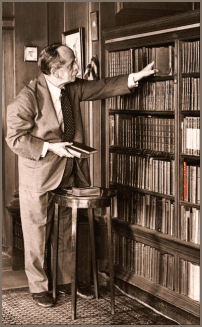
Author J.M. Barrie in 1933
1933 Quiz
Q1. - Who was British Prime Minister in 1933
A1. - James Ramsay MacDonald
Q2. - Who introduced his New Deal in the USA
A2. - Franklin Delano Roosevelt
Q3. - What was the result of Amendment XXI to the US Constitution
A3. - Amendment 21, which repealed Amendment 18 "The transportation or importation in any State, Territory, or possession of the United States for delivery or use therein of intoxicating liquors, in violation of the laws thereof, is hereby prohibited", was proposed on February 20, 1933.
Q4. - George Carwardines Invention
A4. - The Anglepoise task light
Q5. - Malcolm Campbell Speed Record
A5. - 272.46mph
Q6. - Polythese discovered by scientists from which company?
A6. - It was discovered in 1933 by Reginald Gibson and Eric Fawcett, two scientists working at ICI’s research laboratory at Winnington, Durham, who accidentally discovered the white, waxy solid while attempting to react ethylene with benzaldehyde in an autoclave.
Q7. - Richard Byrd 1933 expedition
A7. - Second Antarctic Expedition II 1933-35
Page updated : 26th October 2021 (G)
